There are many war memorials around the country which, when being researched, record details of men and women who are not commemorated by the Commonwealth War Graves Commission (CWGC), even though they may have died of wounds or illness brought about by their service during World War One. Among all of these names, it is quite often impossible to positively identify a person, especially when they are not commemorated. However, with the advent of such websites as Ancestry and Find My Past, surviving service records and pension papers are now freely available to scour through which makes this research much easier.
When such papers exist, if they show a cause of death which ties in with their service, and if the death certificate matches the papers, then these uncommemorated cases can be passed onto the CWGC for them to send to the armed forces for adjudication.
Currently my database contains the details of over 3,700 Welsh men and women who fell in WW1 who are not commemorated by the CWGC. Sadly the majority of these men and women can never be commemorated due to lack of surviving records or evidence. Many of these are not eligible for commemoration due to the CWGC and MOD rules regarding date and cause of death or from a lack of evidence, but it has been my aim to attempt to get as many of these ‘forgotten’ casualties of war commemorated, by first gathering together as much evidence as I can, and then by working in conjunction with the ‘In From The Cold Project’, to attempt to get them commemorated by the CWGC. As of writing (Dec 2022), with the expert help of the In From The Cold Project, I have managed to get over 200 WW1 servicemen commemorated by the CWGC, and have also found at least three soldiers who were killed in action but not officially commemorated. Also through luck, and a lot of work, I have also managed to identify and get new headstones erected for three other Welshmen who were originally buried in unnamed graves in France.
During the course of my research for this website, and also of Welsh servicemen and women for my books, I have also come across several cases where men are incorrectly commemorated by the CWGC, either on the wrong memorial, or by the wrong name or date of death, and as a result have researched these omissions in order to get the CWGC to properly commemorate these men.
Quite often it is impossible to locate the burial place of these men, so if accepted for commemoration, they are added to the United Kingdom Book of Remembrance at Maidenhead. In the cases where their graves are located, then the CWGC will produce and install one of their distinctive white Portland Stone headstones. The results of some of this work can be seen below:
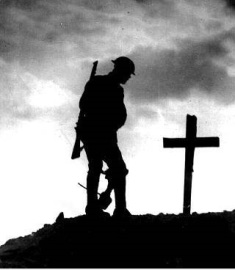
The Great War, 1914-1918
Recently Commemorated Welsh Soldiers.
William George Anthony, Private, 4376, Pembroke Yeomanry. William was the son of John and Mary Anthony, of Penpont, Llanarthney. He enlisted at Carmarthen on 17 October 1914 into the Pembroke Yeomanry. William served in Egypt with the 1/1st Battalion, Pembroke Yeomanry from 4 March 1916 until being evacuated sick on 5 September 1916. He was hospitalised in Britain after returning home, and was found to be suffering from tuberculosis brought on by his service in Egypt. He was subsequently discharged from the army as medically unfit, and went to live with his parents, who had moved to Brynceitho, Cefneithin. He died on 4 November 1918 aged 24. William’s case was put forward to the CWGC on 8 May 2013, and he was accepted for commemoration on 11 November 2014. He will be commemorated in the United Kingdom Book of Remembrance until his grave can be found.
William Arthur George Arnold, Driver, 43162, Royal Field Artillery. William was born on 20 October 1895, the son of George and Alice Margaretta Arnold, of 23, Exeter Street, Newport, Monmouthshire. He worked for the GWR prior to enlisting into the Royal Field Artillery and served in France from 4 October 1915. His health deteriorated in France and he was discharged from the army on 17 April 1919 after having been found to have contracted tuberculosis. William returned home and died of tuberculosis at Cardiff on 20 November 1920, aged 25. His case was recently forwarded to the CWGC as a result of my research, and he was accepted for commemoration by them on Tuesday 25 August 2020. He was originally commemorated in the United Kingdom Book of Remembrance at Maidenhead, but his grave has recently been discovered in Cardiff (Cathays) Cemetery, and the CWGC have recently erected a new headstone to commemorate him.
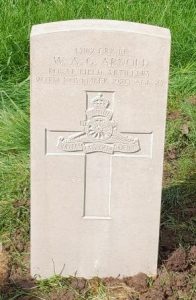
Edward Ashton, Private, 1998, Welsh Guards. Edward was born at Kerry, Montgomeryshire in 1876, the son of John and Catherine Ashton, of Cwmgwern. By 1901 he was living at Whittington, Shropshire, where he married Edith Austin in 1908, and the couple lived at 15, Babbins Wood, Whittington. Edward enlisted into the Welsh Guards in 1915, and was drafted out to France at some time early in 1916, joining the 1st Battalion, Welsh Guards. The Regiment had been raised by Royal Warrant of 26 February 1915, at White City, before landing at Le Havre on 18 August 1915, becoming attached to 3rd Guards Brigade, Guards Division. The Division saw its first major action during the Battle of Loos, which began on 25 September 1915, remaining in the area during the coming months, where they also fought in the subsequent Action of Hohenzollern Redoubt. Edward probably joined the battalion among a reinforcement draft early in 1916. In July 1916 the Division moved to the Somme, where it fought at the Battle of Flers-Courcelette, and then at the Battle of Morval, capturing Lesboeufs Village. The division remained here for the winter, and in March 1917 took part in the advance caused by the German Retreat to the Hindenburg Line. Later that year it moved north to Ypres and fought at the Battle of the Pilkem Ridge, the opening phase of the Passchendaele offensive. The Guards Division saw further fighting at Ypres, during the later stages of the offensive, before being moved south, taking part in the Battle of Cambrai and by the end of November was in the thick of the action. The Division saw heavy fighting during the German Spring offensive of March 1918, and again during the great offensive, which was launched by the Allies on 21 August 1918. Edward survived the war, but was discharged from the Welsh Guards as medically unfit on 9 February 1919, his health having deteriorated badly, and the couple moved to West Lodge, Fitz Manor, near Shrewsbury. He died of tuberculosis there on 11 April 1921, aged 45. Edward was accepted for commemoration by the CWGC on Friday 5 November 2021, following the submission of my research. He will be commemorated in the United Kingdom Book of Remembrance, unless the location of his grave can be traced.
Lord George Atkins, Sergeant, 240047, Welsh Regiment. Lord went by his middle name of George and was the son of Thomas and Fanny Atkins, of Swansea. The family had moved to 97, Coedpenmaen Road, Pontypridd prior to the war. George worked as a miner prior to the war and had served with the 3rd Battalion, Welsh Regiment (Militia) before he re-enlisted at Pontypridd into the 5th Battalion, Welsh Regiment (Territorials) on 4 May 1908. George married Margaret Stock at Llanwonno on 25 February 1913. He attended annual camp every year up until the outbreak of war and on 16 July 1915 embarked with the battalion for service at Gallipoli with the 53rd (Welsh) Division. He was wounded at Gallipoli on 19 August 1915 and came back to the 2nd Southern General Hospital at Bristol for treatment. He remained on home service after recovering from his wound but became ill and was hospitalised again on 15 November 1916 and found to be suffering from sarcoma of the testes. George was discharged from the army as medically unfit on 8 February 1917 and returned home to his wife before dying at 28, Tel el Kebir Road, Pontypridd on 26 March 1917, aged 25. George is buried in Glyntaff Cemetery, Pontypridd. His case was forwarded to the CWGC as a result of my research and he was accepted for commemoration by them on Tuesday 4 February 2020.
Frederick Baker, Private, 21876, Welsh Regiment. Frederick was born at Ferndale in 1892, the son of William Henry Baker and Louisa Baker (nee Wiltshire). The family was residing at 18, Dolycoed Terrace, Tylorstown by 1911, where Frederick worked as a coal hewer. He married Sophia Morgan at Tylorstown on 1 June 1914 and the couple lived with Frederick’s parents at Dolycoed Terrace. Frederick enlisted into the Welsh Regiment at Ferndale on 9 November 1914, initially joining the 3rd (Reserve) Battalion, Welsh Regiment, and was posted to the Depot at Cardiff. Whilst training at Cardiff over the coming months, Frederick’s health began to fail following a bout of pneumonia during the following spring and he was then found to be suffering from heart disease, brought about by his pneumonia. He was discharged from the army as medically unfit on 1 July 1915 and returned home to his wife at Tylorstown. Frederick died of heart disease at The Rest, Porthcawl on 22 July 1917, aged 25. Frederick was accepted for commemoration by the CWGC on 21 November 2022 as a result of my research. His place of burial has not yet been traced, so he will be commemorated for the time being in the United Kingdom Book of Remembrance, at Maidenhead. Note: 23 Sep 2023 – Frederick’s grave has recently been found in Ferndale Cemetery and the CWGC are in the process of properly commemorating him.
Albert Barnett, Private, 39019, South Wales Borderers. Albert was born in 1898, the son of Zachariah and Annie Barnett, of 35, Bank Street, Macclesfield. He enlisted into the army following the outbreak of war and was sent to Salonika to join the 7th Battalion, South Wales Borderers, which was attached to 67 Brigade, 22nd Division. Albert appears to have been reported as missing in action during the opening day of the Third Battle of Doiran on 18 September 1918. The 20-year-old was never found, and his mother was awarded a pension in 1920. Albert was not commemorated by the CWGC as he seems to have been forgotten about for some reason. I found him while looking through pension papers of Welsh soldiers, and ordered a copy of his death certificate before his case was forwarded to the CWGC. Albert was accepted for commemoration by the CWGC on Wednesday 14 October 2020 as a result of my research. He will be commemorated on the Doiran Memorial, Salonika.
Percival Barrington, Gunner, 86341, Royal Field Artillery. Percival was born in Reading, Berkshire in 1885, the son of Mark and Frances Emily Barrington. He had served with the Ox & Bucks Light Infantry for several years prior to working as a painter in Newport, Monmouthshire. He re-enlisted there on 21 August 1914, but joined the Royal Field Artillery and embarked at Avonmouth on 15 June 1916 for service at Gallipoli with D Battery, 67th Field Artillery Brigade. Following the evacuation from Gallipoli he was posted to Salonika and served there until being evacuated sick in March 1917. He was treated in Malta before returning to England and was discharged as unfit on 25 November 1918. He returned to Newport where he died on 31 March 1919, aged 34. His case was recently forwarded to the CWGC as a result of my research, and he was accepted for commemoration by them on Tuesday 25 August 2020. He was originally commemorated in the United Kingdom Book of Remembrance at Maidenhead, but his grave has recently been located at St. Woolos Cemetery, Newport, Mon.
Sidney Rees Bell, Lance Corporal, 3684, Welsh Regiment. Sidney was born in 1876, the son of Rees and Ann Bell, of 3, King Street, Llandeilo. Sydney was a Tailor, and had worked at Skewen, where he married Eleanor Williams, and the couple raised their first four children there before returning to Llandeilo in 1910, moving into 3, Brynawel Terrace. Sidney served with the 4th Welsh early in the war, later transferring into the Royal Welsh Fusiliers, with the service number 38958. No more is known of Sydney’s time at war, but he was discharged from the army due to ill-health on 17 January 1918 and died at 2, Wellfield Terrace, Llandeilo due to pulmonary tuberculosis and exhaustion, which had been brought on by his war service, on 12 February 1920, aged 44. He was buried in St. David’s Churchyard, Llandilofawr. His case was recently forwarded to the CWGC as a result of my research, and he was accepted for commemoration by them on Tuesday 25 August 2020. He will be commemorated in the United Kingdom Book of Remembrance at Maidenhead unless the location of his grave can be verified.
Henry Belt, Private, 23169, South Wales Borderers. Henry was born in 1890, the son of William Belt and Mary Ann Belt (nee Rees), of 31, Church Square, Tredegar. He worked as a coal hewer prior to enlisting into the South Wales Borderers at Tredegar on 26 March 1915. Henry was then posted to the 10th Battalion, South Wales Borderers, which was at Colwyn Bay attached to the 43rd (Welsh) Division. The Division trained in North Wales before moving to Winchester in the summer of 1915, where the formation became renumbered 115 Brigade, 38th (Welsh) Division. The Division began moving to France on 2 December 1915 and moved to the Nursery Sector near Fleurbaix for trench initiation alongside the Guards Division. The Division then held a sector of the line near Cuinchy before marching south to the Somme sector in June 1916 to take part in the assault on Mametz Wood. The first attack on the wood was launched on a two-battalion front on 7 July, but failed, and the Divisional Commander, Sir Ivor Philipps, was replaced before the Division attacked again on a two Brigade front on 10 July 1916. After two days of ferocious hand-to-hand fighting, the wood was cleared up to its northern edge, before the battered Division was relieved, and took over a section of the front at Hébuterne. Henry took ill just after this move, suffering from pain in his back and sides, and was evacuated to the 24th General Hospital. On 21 July he was evacuated aboard the Hospital Ship Newhaven and returned to England, before being admitted to the Norfolk War Hospital at Norwich, where he was found to have contracted tuberculosis. Henry received several weeks of treatment before being discharged from the army as medically unfit on 27 September 1916 and returned home to Tredegar. He died of tuberculosis at 86a, Charles Street, Tredegar on 24 December 1917, aged 28. His case was recently forwarded to the CWGC as a result of my research, and he was accepted for commemoration by them on 21 November 2022. He will be commemorated in the United Kingdom Book of Remembrance at Maidenhead unless the location of his grave can be traced.
Gwilym Bennett, Private, 46765, South Wales Borderers. Gwilym was the son of David John Bennett and Cecilia Bennett, of 6, Sandy Gate Terrace, Llanelli. He was educated at Pentip School prior to enlisting into the South Wales Borderers on 28 December 1916. He was posted to the 1st Battalion, South Wales Borderers, which was attached to 3 Brigade, 1st Division. Gwilym was invalided home and discharged from the army on 18 February 1919. He died at home of Pthisis at 10, Raby Street, Llanelli on 8 May 1919 as a result of sickness brought about by his military service. Gwilym is buried in Box Cemetery, Llanelli, together with his parents and several of his siblings. He was not commemorated by the CWGC for almost 99 years until being accepted for commemoration on Friday 23 February 2018 as a result of my research. His father David had been one of the original members of the 15th Welsh (Carmarthen Pals). Gwilym was commemorated in the United Kingdom Book of Remembrance until the location of his grave was verified and the CWGC have recently erected a Gallipoli type plaque next to his headstone (the smaller white pedestal).
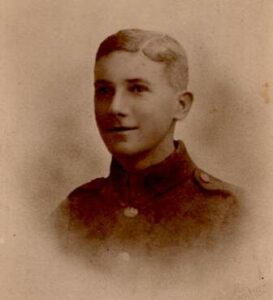
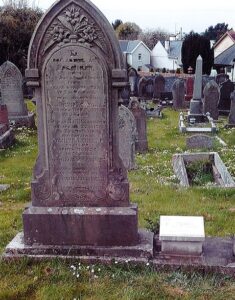
Harold Berkeley Beynon, Private, 33181, Hampshire Regiment. Harold was the son of Thomas and Laura Annie Beynon, of Holloway, Penally. He later resided at St. Johns Hill, Tenby. Harold enlisted into the Pembroke Yeomanry on 1 April 1914, then served with the 3rd Welsh, before being posted to the 10th Battalion, Hampshire Regiment. The Battalion became attached to 29 Brigade, 10th Division, and on 7 July 1915 sailed from Liverpool, arriving at Mudros 26 July 1915. The Battalion landed on Gallipoli on 6 August 1915, and fought there for a month before being sent to Salonika, where it joined 82 Brigade, 27th Division. Harold became ill with malaria while in Salonika and returned home for treatment. His service papers show that he was discharged in 1919 due to malaria. Sadly Harold died of meningitis and encephalitis soon after, on 16 May 1919. He was 21 years old. His place of burial has not yet been identified. Harold has just been accepted for commemoration by the CWGC (Friday 13 January 2012). He was originally to have been commemorated on the Brookwood (United Kingdom 1914-1918) Memorial, but following the discovery of his grave at St. Florence (St. Florencius) Churchyard, he is now commemorated as being buried there.
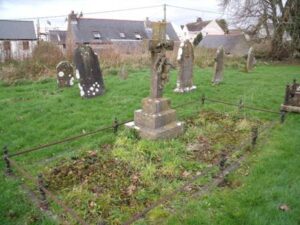
David Joseph Bigham, Corporal, 653538, Labour Corps. David was born in Blaina in 1892, the son of David and Ann Bigham. The family later resided at 13, Meredith Terrace, Newbridge. David worked as a coal miner prior to enlisting at Newport into the South Wales Borderers on 5 January 1915. He was posted to Brecon where he joined the 11th Battalion, South Wales Borderers. The battalion moved to North Wales for training and became part of the 38th (Welsh) Division, moving on to Winchester before landing in France on 4 December 1915. David took part in the divisions famous assault on Mametz Wood the following summer and in its capture of Pilckem Ridge the following year. Following the restructure of the army in France he was transferred to the 5th Battalion, South Wales Borderers on 1 April 1918 and was wounded during the Battle of the Lys two weeks later. Upon recovering he re-joined the battalion, but was gassed on 13 August 1918. He was transferred to the Labour Corps a month prior to the Armistice, but the war had by now taken its toll upon his health. David returned home after the war but died as a result of gas poisoning and tuberculosis on 16 February 1921, aged 28. His case was recently forwarded to the CWGC, and he was accepted by them for commemoration on Thursday 4 February 2021. He was originally commemorated in the United Kingdom Book of Remembrance, but his grave has recently been found in Abercarn Cemetery and the CWGC are in the process of commissioning a new headstone for him.
Charles Gordon Bowen, Private, 200080, Welsh Regiment. Charles was born at Pembroke in 1896. He married Matilda J. Williams at Pembroke in 1916, and the couple had a daughter, Edith Mary. They set up home at 2, Clifton Villa, Clynderwen. Charles enlisted into the 4th Battalion, Welsh Regiment, on 5 May 1913, and on the outbreak of war was called up to the colours. He fought at Gallipoli with the 1/4th Battalion, Welsh Regiment, which was attached to 159 Brigade, 53rd (Welsh) Division. On 18 September he was admitted to the 1/1st Welsh Field Ambulance, suffering from pain. He was evacuated to England aboard H.S. Northland a week later, and was hospitalised at Pembroke Dock Military Hospital. Charles was then discharged, and was posted to Scoveston Camp, but took ill, and was diagnosed with tuberculosis, which led to him being discharged from the army on 5 November 1917. He died at Clynderwen on 10 March 1919, aged 22, and was buried at Pembroke (St. Michael) Cemetery on 15 March 1919. Charles has just been accepted for commemoration by the CWGC (Friday 13 January 2012), and will be commemorated on the Brookwood (United Kingdom 1914-1918) Memorial until the CWGC can verify the location of his grave.
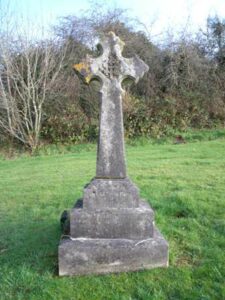
Parcell Rees Bowen, MC, DFC and Bar, Captain, Welsh Regiment. Parcell was the fourth son of Mr. and Mrs. Josiah Bowen, of Pantyglien, Abergwili. He was a student at St. David’s College, Lampeter when he enlisted at the outbreak of War, becoming a Private in the Army Service Corps. He spent the Winter of 1914/15 in France, but in February 1915 was sent home with badly frostbitten feet. In July that year, he was commissioned as a Second Lieutenant into the 5th Welsh, and he embarked with the Battalion for Gallipoli, where the Battalion formed part of 159 Brigade, 53rd (Welsh) Division. The Division fought at Gallipoli until the evacuation in December, suffering badly from casualties, forcing the 5th Welsh to merge with the 4th Welsh for a short period. After the evacuation, Parcell fought in the Palestinian Campaign, where he then transferred into the Machine Gun Corps, and it was with them that he was awarded his first decoration, the Military Cross. Parcell then transferred into the Royal Air Force on 10 January 1918, becoming an Observer. He gained his second decoration during the air war in Egypt, the Distinguished Service Order. After the Armistice on 11 November 1918, Parcell served in Salonika and Mesopotamia, before being placed on the unemployed list. Again though, Parcell wanted more adventure, and so he volunteered for further service with the R.A.F. in their private war in North Russia, fighting for the White Russians. On 17 July 1919 Parcell arrived at Archangel, where he met his old compatriot from Carmarthen, Ira ‘Taffy’ Jones. Ira wrote glowing reports of Parcell, being glad to see another Welsh Warrior in his Squadron. A long passage from ‘An Airfighters Scrapbook’ tells of an incident that earned Parcell a Bar to his Distinguished Flying Cross. In short, Parcell and his Pilot were carrying out a bombing mission when they came across a superior force of Russian Aeroplanes. Being the men they were, they agreed to attack the Russians, who dispersed in chaos when these two madmen plunged into their midst. The Russians took flight, but one fired a burst of rounds at the British pair, and Parcell and his Pilot were hit. The Pilot fainted at the controls of the aeroplane, and Parcell only had one good arm, but he leaned over his colleague and piloted the aeroplane back nearly 100 miles to base. Parcell was sent home wounded, and again placed on the Unemployed List, so volunteered for a Commission into the Lithuanian Army, with whom he served until July 1920 when he accepted a Government Post. This post was Top Secret, and involved him going undercover in Dublin, at the time when the troubles were at a peak. Due to the secrecy of the work being carried out in Ireland, nothing much is known about the operations Parcell was engaged in. What is known is that Parcell had been lodging with a fellow Officer at 28, Upper Fitzwilliam Street, Dublin, and the two had spent the afternoon of 27 October 1920 watching a football match at Donnybrook. After the match, Parcell could not be found, until his lifeless body was discovered, lying face down, at Merrion Street. He had been shot in the back by an IRA assassin, the bullet hitting his spine. Parcell’s body was brought back to Carmarthen, where he was buried with full military honours in Abergwili Churchyard. There is a theory that Parcell was murdered by MI5, as the Irish never owned up to his killing. (Please note this website was the original source of this information and photographs that have since been copied by an Irish website without permission).
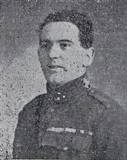

George James Brain, Private, 14028, South Wales Borderers. George was born in 1893, the son of George and Mary Brain, of 22, East Side, Cwmtillery. He worked as a collier prior to enlisting at Newport into the South Wales Borderers on 1 September 1914. George was initially posted to the 5th Battalion, South Wales Borderers, but was transferred to their 4th Battalion soon afterwards, embarking with the battalion for service at Gallipoli in July 1915. His health broke down during the terrible winter storms at Gallipoli during December 1915 and he was evacuated off the Peninsula after being diagnosed as suffering from Nephritis. George was discharged from the army as medically unfit on 17 August 1916 and eventually returned home to Abertillery, where he died of Nephritis on 22 December 1919, aged 26. His case was submitted to the CWGC as a result of my research, and he was accepted for commemoration by them on Friday 18 December 2020. He was originally commemorated in the United Kingdom Book of Remembrance at Maidenhead, but his grave has recently been found in Blaenau Gwent Baptist Chapelyard and a headstone will be erected in the coming months.
Harry Britton, Sergeant, 13508, Royal Welsh Fusiliers. Harry was born in 1895, the son of Henry Britton and Elizabeth Alice Britton (nee Knight), of 58, Winwick Road, Warrington, Lancashire. He worked as a wiredrawer prior to the war. Harry enlisted into the Royal Welsh Fusiliers at Warrington on 2 September 1914 and was posted to the 9th Battalion, Royal Welsh Fusiliers. The battalion had formed at Wrexham in September 1914, before moving to Tidworth to join 58 Brigade, 19th (Western) Division. On 19 July 1915 Harry landed in France with the battalion, and the entire 19th Division then moved to the Nursery Sector at Calonne for trench initiation alongside the Dehra Dun Brigade. The Division took part in the opening attack of the Battle of Loos on 25 September 1915, suffering heavily for no real gain. The following year the Division moved to the Somme, where it took part in the second wave of the attack on Ovillers-La Boiselle on 1 July, capturing the village at heavy cost. It then fought through the Somme Battles of Pozieres and the Ancre in 1916. In 1917 the Division moved North to Ypres, taking part in the Battle of Messines. After a brief rest, where the Division rebuilt its strength, it then took part in the main Passchendaele offensive, which was launched on 31 July 1917. By October the Division had moved to the Merris area, and carried out several weeks of training whilst rebuilding, before moving south in the first week of December, taking over a section of the front line in the Ribecourt Sector. The Division wintered here, holding this sector over the coming months. At dawn on 21 March 1918 the Division was hit hard by the opening assault of the German Spring offensive, Operation Michael, and suffered terrible casualties during a fighting withdrawal over the coming days. The battered Division was relieved by the Australians, before being sent to the quieter Messines sector again on 30 March, to rest and rebuild. Unfortunately, the second phase of the German offensive, Operation Georgette, was launched along the Lys valley on 9 April, and the Division once more became embroiled in desperate fighting. After suffering terribly again, they moved South to the quieter French sector to rebuild but were caught up in the German offensive on the Aisne, and suffered terrible losses once again. Harry survived these terrible battles and had married Ann Slater whilst on leave back home to Warrington in the summer of 1918. Upon his return to France, he fought during the great advance to victory. He was demobilised on 27 January 1919 and returned home to Warrington, but by then his health had begun to fail and Harry was diagnosed with heart disease. He died of heart disease at Warrington Infirmary on 28 June 1920, aged 25. Harry was buried in Warrington Cemetery. He was accepted for commemoration by the CWGC on 21 November 2022 as a result of my research. He will be commemorated in the United Kingdom Book of Remembrance at Maidenhead, until the location of his grave can be verified.
Samuel Brooks, Private, 11925, Devonshire Regiment. Samuel was born on 27 January 1885, the son of Samuel and Rebecca Brooks, of 95. Foxhole Road, Swansea. He worked at Swansea Docks prior to enlisting into the Royal Navy on 5 October 1903 and over the coming years served mostly on shore bases before being discharged in May 1907. He returned to Swansea and married Ellen Williams there on 13 May 1911. By the time war erupted the couple had two daughters and Samuel enlisted at Swansea into the 3rd Battalion, Devonshire Regiment on 10 September 1914. On 9 February 1915 he was posted to France to join the 2nd Battalion, Devonshire Regiment, which was attached to 23 Brigade, 8th Division. The division had recently arrived in France after being formed using battalions brought back from service around the Empire and would see its first major action during the Battle of Neuve Chapelle, which raged from 10 to 13 March 1915. It then took part in the Battle of Aubers Ridge on 9 May 1915. Samuel was badly wounded at Aubers Ridge after being shot in the leg and the shoulder. He returned home for lengthy hospital treatment and died at Swansea Hospital on 24 October 1918 aged 32, of pneumonia and influenza which had been accelerated due to his wounds. His case was forwarded to the CWGC as a result of my research and he was accepted for commemoration by the CWGC on Wednesday 17 October 2018 and Samuel was originally commemorated in the United Kingdom Book of Remembrance, although his grave was later traced to Danygraig Cemetery, Swansea.
Thomas Leslie Foster Brough, Private, DM2/130455, Army Service Corps. Thomas was born in Cumberland on 19 March 1900, the son of John Robert and Mary Brough. By 1911 the family had moved to 37, The Highway, Pontypool Road, Pontypool. Thomas worked at Baldwin’s Steel Works prior to enlisting Pontypool into the Army Service Corps on 18 October 1915. He was posted to France to join the BEF on 4 January 1916 and served overseas until 4 February 1917 when he returned to England and he remained on home service until being discharged as medically unfit on 10 September 1918 after having been diagnosed as having contracted tuberculosis. He died at home at Panteg on 15 March 1919, aged 18. His case was recently forwarded to the CWGC as a result of my research and he was accepted for commemoration by them on Friday 12 April 2019. He was originally commemorated in the United Kingdom Book of Remembrance, but his grave has recently been discovered in Pontypool (Panteg) Cemetery, Monmouthshire, and the CWGC have erected a new headstone for him there.
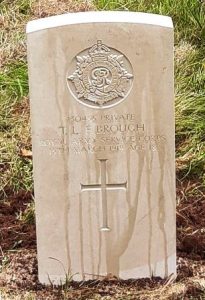
Harold Jackson Brown, Sergeant, M/300916, Royal Army Service Corps. Harold was born in Leicester in 1889, the son of Jonathan Stirtevant Brown and Alice Brown (nee Emerson). His father had served with the Imperial Yeomanry during the Anglo Boer War of 1899-1902, and upon his return, moved his family to 1, Deri Road, Roath, Cardiff. Harold worked as a motor driver prior to enlisting at Cardiff into the Army Service Corps on 12 February 1917 and was the Reserve Depot at Grove Park for training as a Motor Driver. On 27 April 1918 he was posted to the Western France, serving there until 19 November 1919, by which time he had been promoted to Sergeant. By the time that Harold was finally discharged from the army, on 8 February 1920, he had become ill with heart disease. He returned home to his mother at Cardiff, but his health continued to wane, and Harold eventually died of endocarditis at the National Heart Hospital, Westmoreland Street, London on 19 February 1921. The 22-year-old was reportedly buried in St. Edwards Churchyard, Cardiff, but there is a grave marker bearing his name in Welford Road Cemetery, Leicester. He was accepted for commemoration by the CWGC on Thursday 3 August 2023, as a result of my work, and will for now be commemorated in the United Kingdom Book of Remembrance at Maidenhead, Berkshire, unless the location of his grave can be verified.
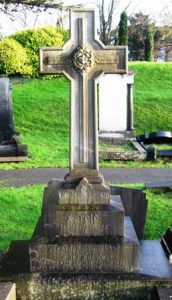
William Patrick Bryant, Sergeant, 348074, Royal Garrison Artillery. William was born at Bristol in 1883, the son of John Patrick Bryant and Mary Ann Bryant (nee Chappell). The family had moved to 5, James Street, Barry Dock by 1891 and William’s father was working there as a ships rigger. William married Emily Sheppard at Barry in 1903 and the couple set up home at 25, Morgan Street, Barry. William worked as a ships engine repairer at Barry. He had enlisted into the Glamorgan Battery, Royal Garrison Artillery upon the formation of the Territorial Army in 1908, so when war was declared he was mobilised with his battery. He served on home defence duties for the duration of the war, but the cold, damp conditions in many of the coastal forts used by the RGA meant that his health suffered badly. By the time he was demobilised in February 1919 William was found to have contracted tuberculosis and was in poor health. He returned home to his wife and children, but his health continued to fail before he died of phthisis and a gastric ulcer at 25, Morgan Street, Barry on 21 July 1920, aged 42. William was accepted for commemoration by the CWGC on 21 November 2022 as a result of my research. His place of burial has not yet been traced, so he will be commemorated for the time being in the United Kingdom Book of Remembrance, at Maidenhead.
William Cain, Private, 1550, Welsh Regiment. William was born on 23 February 1880, the son of William Cain and Elizabeth Cain (nee Foster), of 22, King Street, Whittington, Derbyshire. He enlisted into the army as a young man and had served for several years prior to the war with the 2nd Battalion, Sherwood Foresters. William re-enlisted into the army soon after the outbreak of war, joining the 2nd Battalion, Welsh Regiment. The battalion entrained for the south coast within days of war breaking out and on 13 August 1914 landed in France. The battalion was attached to 3 Brigade, 1st Division and entrained for the Belgian frontier, near the town of Mons. The Division then took part in the Battle of Mons on 23 August, following the German invasion of the low countries, and in the epic withdrawal from Mons to the River Marne, where the German drive on Paris was halted. The Germans then withdrew north and took up defensive positions north of the River Aisne, along the Chemin des Dames Ridge and the BEF advanced before launching a frontal attack upon the German positions. The BEF then began moving to Flanders on 17 October, before advancing from Poperinghe past endless numbers of refugees and took up positions guarding the strategically vital city of Ypres, the 1st Division taking up positions near Langemarck by 21 October. Later that day the division was attacked by hordes of Germans, mainly young student-soldiers, who were mown down by the highly trained British soldiers. The Germans maintained their attacks over the coming days but were held at bay, sustaining terrible losses, and the line here stabilised, so by 27 October the 1st Division moved to positions near Zandvoorde, guarding the Menin Road. On 31 October 1914 the 1st Division faced its sternest test so far, when the Germans attacked its positions on the Menin Road, behind a fearsome artillery bombardment and the 1st Division was virtually annihilated. William served with the 2nd Welsh throughout all of this terrible fighting, then took part in further actions with the battalion at Neuve Chapelle, Loos and on the Somme during the next 18 months, where he suffered gassing. The gassing had a serious impact on his health, so on 28 December 1916, following several periods undergoing hospital treatment, William was transferred to the Northumberland Fusiliers, his service number changing to 89373, before being discharged from the army as medically unfit. Upon returning home, he married Emma Wallace in the summer of 1917, and the couple set up home together at 32, Unstone Green, in the village of Unstone, near Chesterfield. William’s health continued to fail him over the coming years and he died as a result of his gas poisoning at the Chesterfield and North Derbyshire Royal Hospital on 16 January 1920, aged 39. William was accepted for commemoration by the CWGC on 21 November 2022 as a result of my research. His place of burial has not yet been traced, so he will be commemorated for the time being in the United Kingdom Book of Remembrance, at Maidenhead.
James Carne, Fireman, Mercantile Marine. James was born in Swansea in 1884, the son of Susan Carne, of 3, Punch Court. His father died when he was a young boy and James went to sea, and lived while ashore at 5, Yorke Street, Liverpool. By the outbreak of the Great War he was serving with the Mercantile Marine as a Fireman aboard the Cunard liner, SS Lusitania. She had been built with the help of government subsidies and at the outbreak of war was requisitioned by the Admiralty for used as an armed merchant cruiser, but remained on her usual route between Liverpool and New York. She left New York on 1 May 1915 with 1,959 people aboard, including her crew of 694. On 7 May 1915, Lusitania was nearing safety, and was sailing past the Old Head of Kinsale, off Ireland, when she was hit by a torpedo from the German submarine U-20, and sank with the loss of 1,198 lives. James was 30 years old when he died in the sinking. He has never been commemorated by the CWGC, but following some research for my latest books I came across his name on the Swansea Cenotaph and carried out some research into him in order to get him properly commemorated as a war casualty. On Thursday 18 January 2018 he was officially accepted as a war casualty by the CWGC and his name will be added to the Tower Hill Memorial in London in due course.
Archibald Casswell, Rifleman, 40560, Worcestershire Regiment. Archibald was the son of William and Janet Casswell, of 44, Trafalgar Terrace, Swansea. He worked on the clerical staff of the Midland Railway prior to enlisting at Swansea into the Monmouthshire Regiment on 17 November 1915. He landed in France on 14 September 1916 and was posted to the 7th Battalion, Worcestershire Regiment, which was attached to 144 Brigade, 48th (South Midland) Division. He fought on the Somme that summer but on 27 December 1916 returned to England after falling ill and being diagnosed as suffering from heart disease. Archibald was hospitalised for a while and died at 10, Gwendolen Road, Leicester on 7 July 1918, aged 35. His body was brought home to Swansea for burial in Danygraig Cemetery. His case was forwarded to the CWGC as a result of my research and he was accepted for commemoration by the CWGC on Friday 19 October 2018. His name was added to the United Kingdom Book of Remembrance until the location of his grave was verified, and a new CWGC headstone has recently been erected for him.
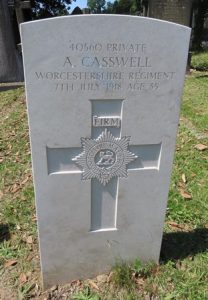
Alfred James Charles, Private, 13119, South Wales Borderers. Alfred was born in 1878, the son of John and Elizabeth Charles, of 31, Merthyr Road, Abergavenny. He worked as a labourer prior to enlisting into the South Wales Borderers at Newport on 24 August 1914. Alfred was posted to the 4th Battalion, South Wales Borderers and embarked with the battalion for service at Gallipoli in July 1915. He took part in the Gallipoli campaign and in the campaign in Mesopotamia with the battalion, but the terrible conditions in Mesopotamia damaged his health and he was discharged from the army on 16 May 1918 after having been diagnosed as suffering from tuberculosis. Alfred died of pthisis and heart failure at Abergavenny on 8 August 1920, aged 44. His case was recently forwarded to the CWGC as a result of my research and he was accepted for commemoration by the CWGC on Wednesday, 3 February 2021. His name was originally added to the United Kingdom Book of Remembrance, but his grave has recently been found in Llanwenarth Citra (St. Peter) Churchyard, so the CWGC are in the process of manufacturing a grave marker for him.
Richard Charles, Private, 2996, Welsh Regiment. Richard was the son of Joseph and Mary Ann Charles, of 1, Jenkins Court, Union Street, Neath. He worked as a collier prior to enlisting at Swansea into the 6th Battalion, Welsh Regiment on 25 January 1915. He was posted to Bedford for training but was discharged as medically unfit on 29 January 1916 after having been diagnosed with tuberculosis and returned to Neath. Richard died at 57, Union Road, Neath on 13 July 1918, aged 29. His case was recently forwarded to the CWGC as a result of my research and he was accepted for commemoration by them on Saturday 10 November 2018. He will be commemorated in the United Kingdom Book of Remembrance unless the location of his grave can be traced.
Albert Chesters, Private, 46766, Royal Welsh Fusiliers. Albert was born on 9 November 1889, the son of Thomas Chesters and Ann Jane Chesters (nee Reed), of 23, Peter Road, Walton, Liverpool. He worked as a stonemason prior to enlisting at Liverpool into the 12th Battalion, The King’s (Liverpool Regiment) on 4 September 1914 and joined the battalion at Seaforth, before it moved to Aldershot to join 61 Brigade, 20th (Light) Division. The division embarked for France in July 1915, and moved to the Fleurbaix Sector for trench familiarisation and training. When the Battle of Loos was launched on 25 September 1915 the Division fought a diversionary attack towards Fromelles. Albert was shot in the shoulder during the attack and was evacuated back home. Upon recovering from his wound, he was transferred to the Depot Battalion at Pembroke Dock. From there was transferred to the 4th (Garrison) Battalion, Royal Welsh Fusiliers on 11 May 1916. He then spent a year on garrison duties before being drafted to France again on 7 August 1917 and was posted to the 9th Battalion, Royal Welsh Fusiliers, which was at Messines, attached to 58 Brigade, 19th (Western) Division. Albert then fought with the battalion throughout the Passchendaele offensive. The Division wintered in the Cambrai sector, following the closure of the Battle of Cambrai, and was holding a section of the line in the Flesquières Salient. On 21 March 1918 the Germans launched the first of three offensives on to the section of the front running from Flesquières to St. Quentin, and the 19th Division was thrown into desperate fighting as it was pushed back over the coming days. Albert was reported as missing on 22 March 1918 and was later found to have been taken prisoner of war by the Germans. On 14 December he was repatriated home and was posted to the Depot at Wrexham. Unfortunately, his time incarcerated in Germany had taken its toll on his health and Albert died of pneumonia on 24 February 1919. The 29-year-old was buried in Everton Cemetery. He has today, Saturday 17 December 2022, been accepted for commemoration by the CWGC. He was originally commemorated in the United Kingdom Book of Remembrance at Maidenhead, but the location of his grave has recently (9 Dec 2023) been verified.
Sidney Coker, Private, MS/4006, Army Service Corps. Sidney was the son of George and Margaret Coker, of 41, Brunswick Street, Swansea. He worked as a mechanic prior to enlisting at Swansea into the Army Service Corps on 28 September 1914 and was posted to the Depot at Bulford for training as a driver. Sidney served at home for almost four years before being discharged from the army as medically unfit after being found to be suffering from heart problems. He died at 157, King Edward Road, Swansea on 26 September 1919, aged 36. His case was forwarded to the CWGC as a result of my research and he was accepted for commemoration by the CWGC on Friday 19 October 2018. His name will be added to the United Kingdom Book of Remembrance.
Reginald Wilfred Collard, Private, 321150, Royal Army Service Corps. Reginald was the son of Edward John Collard and Emily Collard (née Harwood), of 3 Summerfield Place, Whitchurch, Cardiff. He enlisted at Cardiff into the Army Service Corps on 16 December 1916 as a motor driver, after having worked as a driver/ mechanic at Cardiff, and was posted to their Grove Park depot. He was posted to 623 Company on 11 May 1917, but on 26 December 1917 was discharged as being deemed unfit for military service after having been found to be suffering from heart disease. His sickness was adjudged to have been aggravated by his military service, so Reginald received a small pension. His health continued to deteriorate even further, and he died of heart disease at home at 3, Summerfield Place on 18 October 1918, aged 19. The location of his grave has not yet been identified, so Reginald will be commemorated in the United Kingdom Book of Remembrance in the CWGC offices at Maidenhead. He was accepted for commemoration by the CWGC as a result of my research on Saturday 3 March 2018. Tragically, a brother, William Ernest Collard, was killed on the Somme on 21 October 1916, whilst a second brother, Edward John Collard, died of sickness whilst serving with the RAF on 18 February 1919.
Patrick Connell, Lance Corporal, 23204, South Wales Borderers. Patrick was the son of Margaret Connell, of 20, Church Street, Tredegar. He worked as a steelworker prior to enlisting at Tredegar into the 10th Battalion, South Wales Borderers on 22 April 1915. Patrick trained with the battalion at Colwyn Bay where it had formed as part of the 38th (Welsh) Division, and moved with the battalion to Winchester before landing in France on 3 December 1915. The division took up positions in the ‘Nursery Sector’ near Fleurbaix, where it was initiated into trench warfare in sodden conditions, and during this time Patrick’s health broke down and he was diagnosed as having contracted tuberculosis. He was discharged from the army as medically unfit on 15 April 1916 and returned to Tredegar where he died of tuberculosis on 27 August 1918, aged 34. His case was recently forwarded to the CWGC as a result of my research and he was accepted for commemoration by them on Wednesday, 3 February 2021. His name will be added to the United Kingdom Book of Remembrance until his grave can be located.
Richard Cook, Private, 1810, South Wales Borderers. Richard was from Cinderford. He worked as a miner prior to enlisting at Brecon into the 5th Battalion, South Wales Borderers on 16 October 1914, which became the Pioneer Battalion to the 19th (Western) Division. On 17 July 1915 he landed in France with the battalion, which proceeded to the Givenchy sector, north of Loos. On 25 September 1915 the division took part in a futile attack, intended to divert German attention away from the offensive to the south at Loos, but suffered terrible casualties without making any gains. On 22 December 1915 Richard was sent back to England after falling ill and he was discharged as medically unfit on 19 February 1916, after being diagnosed as having contracted tuberculosis. He died at 14, Norman Street, Caerleon on 17 January 1918, aged 25. His case was submitted to the CWGC as a result of my research and he was accepted for commemoration on Wednesday 5 December 2018. He will be commemorated in the United Kingdom Book of Remembrance.
Sam Cooper, Private, 30613, Royal Field Artillery. Sam was the son of John and Hannah Cooper, of Trevethin, Monmouthshire. He married Mary Ann Hughes in 1894 and the couple raised six children at their home in 8, Morgan Street, Abertillery. Sam was an army reservist with eight years’ service with the South Wales Borderers and had then worked as a collier for many years prior to the war and enlisted at Newport into the Royal Field Artillery on 5 September 1914. He was posted to the Depot at Preston for training before landing in France on 6 October 1915, serving with the 10th Division Ammunition Column and then the 56th Division Ammunition Column. He became ill soon after the division was posted to the Somme sector and was discharged as medically unfit on 18 June 1916 after being diagnosed as suffering from heart disease. He returned home and died at 8, Morgan Street, Abertillery on 10 January 1917, aged 53. His case was forwarded to the CWGC as a result of my research and he was commemorated by the CWGC on Thursday 15 November 2018. Sam will be commemorated in the United Kingdom Book of Remembrance unless his grave can be found.
Robert Corfield, Gunner, Royal Field Artillery. Robert was born in 1887, the son of Elizabeth Corfield of 43 North Parade, Aberystwyth. He was a hairdresser prior to the war, and was a pre-war Territorial with the Cardigan Battery, Royal Garrison Artillery. Robert was mobilised at the outbreak of war, and moved with the Battery to Bedford. On 26 August 1915, the Battery was on manoeuvres when Robert fainted whilst sat on a gun carriage, and fell backwards, under the wheels. He received a broken jaw and depression to the back of the head, which killed him instantly. Robert was 27 years old, and was buried with full military honours in Aberystwyth Municipal Cemetery. Robert’s case has just been submitted to the CWGC. (5 August 2012). On Friday 7 February 2014, Robert’s case has finally been accepted for commemoration by the CWGC, although they show him as being commemorated by the United Kingdom Book of Remembrance, he is definitely buried in Aberystwyth Cemetery.
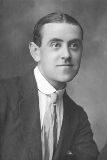
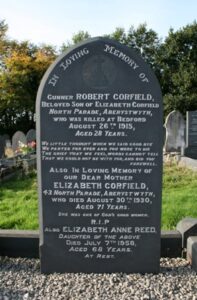
Edward Coughlin, Private, 38576, Royal Welsh Fusiliers. Edward was the son of Edward and Kate Coughlin, of Newport, Mon. He worked as a haulier prior to enlisting at Newport into the Royal Welsh Fusiliers on 17 November 1914 under the assumed name of Edward James. He was posted to the 2nd (Garrison) Battalion, Royal Welsh Fusiliers on 17 December 1915 and embarked for Egypt with the battalion on 6 March 1916. Edward was serving in Egypt when he became ill and was diagnosed as suffering from pleurisy in May 1916. He struggled with his health afterwards and was hospitalised and diagnosed as having contracted tuberculosis, so was sent back to England on 5 December 1916, to attend a sanatorium. Edward returned to Newport to live with his sister Ellen and died at her home at 4, Crindau Road on 21 October 1917, aged 38. His case was forwarded to the CWGC as a result of my research and he was accepted for commemoration by the CWGC on Friday 22 February 2019. He will be commemorated in the United Kingdom Book of Remembrance, in the CWGC Offices at Maidenhead unless the location of his grave can be found.
David Edward Court, Private, 389355, Labour Corps. David was born in 1896, the son of James and Ann Court, of Ffynnon Ddewi, Wolfs Castle. He worked as a stockman prior to enlisting at Haverfordwest into the King’s Shropshire Light Infantry on 19 February 1916 and served in Salonika with the 2th Battalion, KSLI, from 26 October 1916. He was transferred to the 90th Company, Labour Corps on 4 October 1917 and served at Salonika continuously thereafter, suffering several spells in hospital after contracting malaria. David was demobilised on 20 November 1919 and returned home to Wolfscastle, but his health deteriorated quickly and he died of the effects of malaria at Haverfordwest County Hospital on 22 March 1921, aged 24. His case has recently been forwarded to the CWGC. His case was recently forwarded to the CWGC as a result of my research and he was accepted for commemoration by them on Wednesday, 3 February 2021. His name was originally added to the United Kingdom Book of Remembrance, but the location of his grave was recently found and a new headstone will be erected by the CWGC in St. Lawrence’s Churchyard, Welsh Hook, Pembrokeshire.
Frederick Robert Crimp, Gunner, 54224, Royal Garrison Artillery. Frederick was born in 1889, the son of Robert John Crimp and Sarah Anne Rogers Crimp (nee Witheridge), of 32, Salop Street, Penarth. He worked as a labourer prior to enlisting at Penarth into the Royal Garrison Artillery on 27 November 1914 and was posted to Great Yarmouth for training. On 25 January 1915 he was posted to the 24th Heavy Battery, RGA and on 25 May landed with the battery in France. Frederick later transferred to the 16th Heavy Battery, RGA and served in France for almost three years before his health broke down. He was discharged from the army as medically unfit at Dover on 3 May 1918 after being diagnosed as suffering from diabetes. He returned home to Penarth, but he died at home at 32, Salop Street, as a result of his diabetes and exhaustion on 3 May 1919, aged 30. Frederick was buried at St. Augustine’s Churchyard, Penarth on 21 May. He has today, Friday 1 December 2023, been accepted for commemoration by the CWGC as a result of my work and will be commemorated in the United Kingdom Book of Remembrance, at Maidenhead until the location of his grave can be verified.
Albert Edward David, Private, 14879, Welsh Regiment. Albert was born in 1889, the son of Edward and Janet David, of 37, Turner Road, Canton, Cardiff. He enlisted at Cardiff into the 11th Battalion, Welsh Regiment and embarked with the battalion for France on 5 September 1915. After just a month in France the battalion moved to Salonika with the 22nd Division and remained there throughout a difficult campaign against the Bulgarians. Albert was discharged from the army on 19 April 1919 and returned to Cardiff, but died at Beechwood House Hospital, Newport of tuberculosis which had been contracted as a result of his wartime service on 17 April 1921, aged 31. His case was submitted to the CWGC as a result of my research, and he was accepted for commemoration by them on Friday 18 December 2020. He will be commemorated in the United Kingdom Book of Remembrance at Maidenhead, until the location of his grave can be verified.
Albert Davies, Private, 278442, Labour Corps. Albert was born in 1881, the son of Jenkin Davies and Mary Ann Davies, of 27, Bwlfa Road, Cwmdare. He worked as a collier prior to enlisting into the King’s Shropshire Light Infantry on 15 January 1916 and served on the Western Front with the Labour Corps. Albert was discharged from the army as medically unfit on 17 May 1918 after being diagnosed with nephritis. He returned home to his parents at 27, Bwlfa Road, Cwmdare, but died there of nephritis, influenza and heart failure on 8 December 1918, aged 37. He has today, Friday 1 December 2023, been accepted for commemoration by the CWGC as a result of my work and will be commemorated in the United Kingdom Book of Remembrance, at Maidenhead unless the location of his grave can be traced.
Andrew Davies, Private, 347646, Labour Corps. Andrew was born in 1895, the son of David Davies and Ann Davies, of Awelfryn, Wern Road, Skewen. He worked as a boiler maker and repairer prior to enlisting into the army on 15 February 1916 and was placed on the Army Reserve. He was mobilised on 26 March 1917 and posted to the King’s (Liverpool) Regiment Depot unit in Liverpool, but within months of enlisting, his health began to fail. Andrew was then transferred to the Labour Corps, but continued to struggle with his health, and was discharged from the army as medically unfit on 4 January 1918. He returned home to his parents at Wern Road, Skewen and died there of nephritis on 29 March 1918, aged 23. Andrew was buried in St. John’s Churchyard, Skewen. He has today, Friday 1 December 2023, been accepted for commemoration by the CWGC as a result of my work and will be commemorated in the United Kingdom Book of Remembrance, at Maidenhead until the location of his grave can be verified.
Edgar Blewitt Daniel, Private, 16272, Royal Welsh Fusiliers. Edgar was born on 9 October 1889, the son of Robert Daniel and Sarah Jane Daniel (nee Thomas), of 3, Lower Alma Place, Ystradfodwg. The family later moved to 21, Llewellyn Street, Pentre, where Edgar was educated prior to becoming a schoolteacher. He enlisted into the 13th Battalion, Royal Welsh Fusiliers on 7 October 1914. The battalion had been raised at Rhyl on 3 September 1914 by the Denbigh & Flint T.F. Associations and transferred to the Welsh National Executive Committee on 10 October 1914, moving to Llandudno to join 128 Brigade, 43rd (Welsh) Division and began training at Rhyl and Colwyn Bay. On 29 April 1915 the formation became renumbered to 113 Brigade, 38th (Welsh) Division, before moving to Winchester in the summer of 1915 to complete its training. Daniel married Annie Mary Lewis at Pentre whilst home on leave on 17 August 1915. The Division moved to France on 2 December 1915 and moved to the Nursery Sector near Fleurbaix for trench initiation alongside the Guards Division. The Division then held a sector of the line near Cuinchy before marching south to the Somme sector in June 1916 to take part in the assault on Mametz Wood. The first attack on the wood was launched on a two-battalion front on 7 July, but failed, and the Divisional Commander, Sir Ivor Philipps, was replaced before the Division attacked again on a two Brigade front on 10 July 1916. After two days of ferocious hand-to-hand fighting, the wood was cleared up to its northern edge, before the battered Division was relieved. It then took over a section of the front at Hébuterne before moving to the Ypres Salient, and taking over the Canal Bank sector at Boesinghe. The infantry battalions of the Division then began carrying out the normal pattern of rotation in the trenches, four days in the front, four in support and four in reserve, whilst also working on trench improvement, digging new trenches, and also carrying out regular patrols and trench raids. On 18 January 1917 Daniel left the battalion for a two week spell of leave, after falling ill at Ypres and whilst back in Wales transferred to the Depot at Wrexham. He was diagnosed as having contracted tuberculosis, so was discharged from the army as medically unfit on 19 March 1917, returning home to Pentre. Sadly his health continued to deteriorate over the coming years and Daniel died of tuberculosis at Heanton Hill, Barnstaple on 4 January 1920, aged 30. He has today, Saturday 17 December 2022, been accepted for commemoration by the CWGC, who will commemorate him in the United Kingdom Book of Remembrance at Maidenhead, unless the location of his grave can be located.
Aneurin Davies, Private, 34583, Rifle Brigade. Aneurin was born on 9 August 1893, the son of Thomas and Rachel Davies, of 29, Long Row, Swansea Road, Llanelli. He had been a tin-worker before enlisting into the 7th (Queen’s Own) Hussars on 10 July 1912. Aneurin was badly injured when his horse reared up and fell on him while training at Shorncliffe riding school, and spent several months in hospital before being discharged from the Hussars as unfit on 8 December 1913 after having been diagnosed with pleurisy. Aneurin then took up work as a Draper at Seaford, Sussex, and re-enlisted at Winchester on 15 March 1915 into the Rifle Brigade. Aneurin was posted to France with the 1st Battalion, Rifle Brigade on 1 June 1915. He was shot in the right hand at Ypres on 9 July 1915, and was discharged from the Rifle Brigade on 8 June 1916, before returning to Llanelli. Undeterred, Aneurin again re-enlisted at Carmarthen on 23 October 1917 into the 6th Battalion, Rifle Brigade. Aneurin was discharged from the army again on 12 February 1918 after being deemed unfit for service, being diagnosed with tuberculosis, and again returned to Llanelli. He died at 29, Long Row, Llanelli on 12 April 1919, aged 24, and was buried at Box Cemetery. Aneurin’s case was submitted to the CWGC in August 2013 and he was accepted for commemoration on 2 October 2015. He is commemorated on the Glenalla Chapel war memorial in Llanelli.
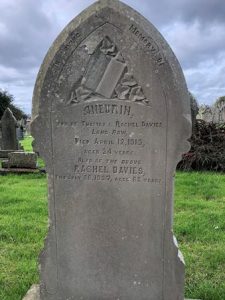
Benjamin Oscar Davies, Private, 1644, Welsh Regiment. Benjamin was the son of Henry and Maria Davies, of Long Island Farm, Camrose. He enlisted at Hafod, Swansea on 29 November 1913 into the 6th Battalion, Welsh Regiment. Benjamin landed in France with the battalion on 28 October 1914. He reportedly became ill whilst at Le Bassée after being gassed, and was sent to the 2nd General Hospital at Richmond for treatment in May 1915, before being discharged from the army on 9 June 1915. Benjamin died of tuberculosis, brought on by his gas poisoning, on 2 June 1916. His case was submitted to the CWGC on 5 August 2012, and he has been accepted for commemoration by the CWGC on Tuesday 22 July 2014. He was temporarily commemorated in the United Kingdom Book of Remembrance, until he was found to be buried in Haverfordwest (St. Thomas A Beckett) Churchyard and a new CWGC Portland headstone has recently been erected. His brother, Harding Melbourne Davies, also fell, and is commemorated on the Camrose War Memorial.
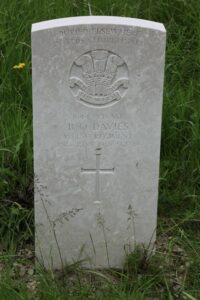
Evan Davies, Private, 29211, South Wales Borderers. Evan was born in 1896, the son of John and Jane Davies, of Penwaendwr, Cray, Breconshire. He worked as a shepherd prior to enlisting into the South Wales Borderers on 22 January 1917. He was posted to France during the summer and joined the 1st Battalion, South Wales Borderers, which was attached to the 1st Division and served with the battalion during the Third Battle of Ypres later that year. He continued to serve with the battalion throughout the 1918 battles and the advance to victory in 1918, but by then his health had begun to suffer. Evan was discharged from the army on 27 May 1919 but had contracted tuberculosis due to the harsh conditions in the trenches and he died at Llwynhir, Cray of tuberculosis on 13 April 1920, aged 24. His case was forwarded to the CWGC as a result of my research and he was accepted for commemoration by them on Tuesday 14 May 2019. He will be commemorated in the United Kingdom Book of Remembrance unless his grave can be found.
Frederick William Davies, Private, 15709, Royal Welsh Fusiliers. Frederick was born in 1890, the son of Robert Davies and Mary Eliza Davies (nee Bidder), of John Street, Oystermouth. He worked as a carpenter prior to enlisting into the Royal Welsh Fusiliers at Liverpool on 24 September 1914 and was posted to the 10th Battalion, Royal Welsh Fusiliers. The battalion had formed at Wrexham in September 1914, joining 76 Brigade, 25th Division at Codford St. Mary, Salisbury Plain. In November 1914 the battalion moved to billets at Bournemouth, then at the end of April 1915 moved to Romsey before moving again to Aldershot to complete its training. On 31 July 1915 Frederick was transferred to the 3rd Battalion, Royal Welsh Fusiliers at Pembroke Dock after having been found to be unfit for service overseas. Oddly, five months later he was drafted to France and was posted to the 9th Battalion, Royal Welsh Fusiliers, which was in the Givenchy area, attached to 58 Brigade, 19th (Western) Division. Over the coming months, Frederick began to suffer with his health and at the beginning of March was invalided back to Britain after being diagnosed as suffering from pthisis. He was discharged from the army as medically unfit on 28 April 1916 and returned home to reside with his sister Ruth at 4, Castleton, Mumbles. Unfortunately his health continued to fail him and Frederick died of tuberculosis at home on 14 January 1919, aged 29. He has today, Saturday 17 December 2022, been accepted for commemoration by the CWGC, who will commemorate him in the United Kingdom Book of Remembrance at Maidenhead, unless the location of his grave can be located.
Griffith Henry Davies, Sapper, 268735, Royal Engineers. Griffith was born in 1871, the son of David and Catherine Davies, of Pontypridd. He married Catherine Davies there in 1905 and the couple set up home at 3, Han Park Road, where their three children were born over the coming years. Griffith worked as a builder prior to enlisting into the Royal Engineers on 19 March 1917. After completing his training, Griffith was drafted to France, but soon started to fall ill. He was hospitalised that summer and was found to be suffering from a gastric ulcer, as well as having contracted tuberculosis, so was discharged from the army as medically unfit on 21 November 1917. He then returned home to his family, who had by then moved to 34, The Parade, Pontypridd. His health continued to wane over the coming years, directly due to his wartime service, and he eventually died of his gastric ulcer and pthisis at home on 15 July 1920, aged 48. Griffith was accepted for commemoration by the CWGC on Thursday 27 April 2023 and will be commemorated in the United Kingdom Book of Remembrance at Maidenhead unless the location of his grave can be traced.
Gwilym John Davies, Private, PS/7294, Royal Fusiliers. Gwilym was born in 1896, the son of Jonah Davies and Ann Davies (nee Rees), of 20, Newland Street, Barry. He worked as a railway clerk after leaving school, but then found work as a clerk for a local coal exporter prior to enlisting into the 18th (Public Schools) Battalion, Royal Fusiliers at Barry on 19 May 1915. The battalion had been raised at Epsom by the Public Schools and University Men’s’ Force on in September 1914, joining 98 Brigade, 33rd Division at Clipstone Camp, then moved with the division to Tidworth to complete its training. In November 1915 the division landed in France, then soon afterwards the Public Schools Battalion transferred to 19 Brigade, in the same 33rd Division, alongside the 2nd Battalion, Royal Welsh Fusiliers, who soon nicknamed the men of the battalion the Chocolate Soldiers, due to the ample gifts of food sent to them from home. The division wintered in the notorious Cuinchy sector in terrible conditions. On 11 February 1916 Gwilym was sent back to Britain and posted to the Depot Battalion, but was discharged from the army as medically unfit on 14 June 1916 after being diagnosed as suffering from chronic bronchitis and asthma. Gwilym returned home to Barry and died of acute bronchitis and asthma and heart failure at 157, Gladstone Road, Barry on 16 November 1917, aged 21. He has today, Saturday 17 December 2022, been accepted for commemoration by the CWGC, who will commemorate him in the United Kingdom Book of Remembrance at Maidenhead, unless the location of his grave can be located. His brother, David Walter Davies, had been killed at Ypres early in 1917. Note: 23 Sep 2023 – Gwilym’s grave has recently been found in Merthyr Dyfan Burial Ground at Barry. The CWGC are currently in the process of properly commemorating him there.
James Lloyd Davies, Corporal, 371137, Royal Garrison Artillery. James was the son of Hugh James Davies and Margaret Davies, of 3, Cross Street, Dyffryn, Goodwick. He enlisted into the Pembroke Battery, Royal Garrison Artillery on 29 May 1913, and went to France with the battery on 14 June 1916. He was wounded within a month of being in France, and returned home for treatment, before heading back to France on 1 April 1918. James was wounded again on 24 September 1918, and again returned home for treatment. He survived the war, but died of Pthisis brought on by his war service, on 7 February 1920. James has just been accepted for commemoration by the CWGC (Friday 13 January 2012). His name was originally destined to be added to the Brookwood (United Kingdom 1914-1918) Memorial, although the location of his grave was discovered in Fishguard (Hermon) Baptist Chapelyard, and a new CWGC headstone has recently been erected by the CWGC.
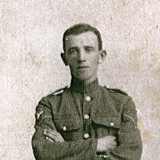
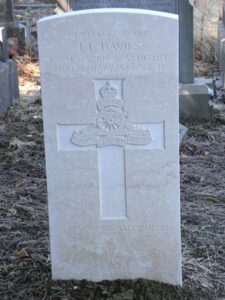
John Davies, Private, 214777, South Wales Borderers. John was the son of Thomas and Anne Davies, of Minyrafon, Blaenau Road, Llandeilo. He worked as an ironmonger prior to enlisting at Colwyn Bay on 22 February 1915 into the 10th Battalion, South Wales Borderers. The battalion was attached to the 38th (Welsh) Division and during the summer of 1915 moved to Winchester with the division to commence training in preparation to move to France. On 23 July John was training with his battalion at Hazeley Down Camp when he began coughing up blood and was sent to hospital at Winchester where he was diagnosed as suffering from tuberculosis. He was discharged as medically unfit on 22 October 1915 and returned to Llandeilo, but his health deteriorated to the extent that he was sent to Neath Hospital in 1918, and died there on 26 April 1918, aged 34. John was buried in Bethel Cemetery, Rhosmaen. Following the submission of evidence regarding John’s death to the CWGC earlier this year by myself, he was finally accepted for commemoration by them on Friday 30 October 2015. He will be commemorated in the United Kingdom Book of Remembrance until the location of his grave is verified.
John Charles Davies, Private, 53782, Welsh Regiment. John was born in 1895, the son of David Davies and Rachel Davies, of 8, Greenfield Street, Pontlottyn. He worked as a coal hewer prior to enlisting into the 3rd Battalion, Monmouthshire Regiment at Abergavenny on 1 September 1914. The battalion mobilised at Abergavenny attached to the Welsh Border Brigade, Welsh Division, before moving to Pembroke Dock. On 10 August 1914 the Division moved to Oswestry before moving to Northampton, then spent Christmas at Bury St. Edmunds before moving to Cambridge. In February 1915 the 3rd Monmouth’s left the Welsh Division and landed in France on 14 February, before moving to the Ypres Salient. On 3 March 1915 the battalion joined 83 Brigade, 28th Division. On 8 April the 3rd Monmouth’s relieved a French Division in the sector east of the Polygon Wood to begin its first tour in the trenches and over the coming weeks became embroiled in desperate fighting. John survived this terrible period at Ypres, but was invalided home after falling ill. Upon recovering, he was drafted back out to France on 21 September 1916 and was posted to the 9th Battalion, Welsh Regiment, which was on the Somme, attached to 58 Brigade, 19th (Western) Division. The division was on the Somme, taking part in the great offensive there when John arrived. During the last few days of September and the first week in October, the British made notable advances to the north of Thiepval and towards Bapaume, capturing the villages of Le Sars and Eaucourt L’Abbaye. Winter then fell upon the Somme, yet the fighting raged on and British attention turned towards the Ancre valley. The 19th Division, which had moved to the Bailleul area to refit, was brought back south at the beginning of October and took part in the final operations which ended with the capture of Beaumont Hamel. The Division wintered on the Somme and in February followed the German withdrawal to the Hindenburg Line. During the middle of March 1917 the Division was relieved from the line and began to move north, taking over positions in the Ypres Salient, and on 7 June took part in the assault on Messines Ridge, which was famously preceded by the blowing of a series of 19 huge underground mines. The 19th Division saw heavy fighting during the battle, then enjoyed a short spell in reserve before moving back into the line on 11 September, taking over a section of trenches running from the Ypres-Comines Canal to Belgian Wood. John became ill in September 1917 and was sent back to the Welsh Regiment Depot at Cardiff. On 23 August 1918 he was discharged from the army as medically unfit, after being diagnosed as suffering from tuberculosis and returned home to his parents at Greenfield Street, Pontlottyn. John died there of tuberculosis and exhaustion on 29 March 1919, aged 24. He has today, Friday 1 December 2023, been accepted for commemoration by the CWGC as a result of my work and will be commemorated in the United Kingdom Book of Remembrance, at Maidenhead unless the location of his grave can be traced.
Rees Davies, Private, 8275, Grenadier Guards. Rees was born on 14 August 1877, the son of Edwin Davies and Ann Davies (nee Bassett), of 8, George Street, Seaside, Llanelli. He had served with the 1st Volunteer Company, Welch Regiment prior to enlisting in Cardiff into the 3rd Battalion, Grenadier Guards on 14 September 1899. Rees served with the Grenadier Guards in South Africa during the Boer War until returning home on 7 October 1902, and was still serving when war was declared on 4 August 1914. By then he had married Emily Mary Lanman, a domestic servant, at Llanelli on 20 February 1913, and Emily set up the family home at 20, Copperwork Road, Llanelli, where their two sons were born. Rees embarked for France with the Grenadier Guards on 4 November 1914, seeing action during the First Battle of Ypres. On 3 February 1915 Rees was invalided home after being wounded at Neuve Chapelle, and remained on home service with the 5th Reserve Battalion until being discharged as medically unfit on 2 May 1917. He died at the Lunatic Asylum in Carmarthen on 4 May 1918, his cause of death being stated as general paralysis of the insane. The 41-year-old was buried in Box Cemetery, Llanelli. His case was put forward to the CWGC on 4 August 2013 and he was finally accepted for commemoration on 29 October 2022.
Robert Davies, Private, 2300, Royal Welsh Fusiliers. Robert was born in 1885, the son of Edward and Elizabeth Ellen Davies, of 21, Garden Place, Mold, Flintshire. He worked as a collier filler prior to enlisting into the 5th Battalion, Royal Welsh Fusiliers at Flint on 3 October 1914. The battalion was a Territorial Army unit, which mobilised at the Drill Hall, Flint on 4 August 1914, attached to North Wales Brigade, Welsh Division and moved to Conway until the end of the month, before moving to Northampton. In December the Division moved to Cambridge and then in May 1915 to Bedford, where the Division was numbered and the formation became 158 Brigade, 53rd (Welsh) Division. On 19 July 1915 the entire Division sailed from Devonport for Imbros and on 9 August 1915 landed at Suvla Bay. The infantry moved off the beaches across the Salt Lake, under shellfire, into the scrub covered Chocolate Hill, but due to a lack of maps and no knowledge of the terrain, many of the units became disorientated, and the situation became chaotic. Robert survived the initial fighting at Gallipoli but on 19 August was admitted to the 2nd Welsh Field Ambulance, suffering from dysentery. Five days later he left Gallipoli aboard the Hospital Ship Alamia, which sailed via Mudros back to England. His health began to fail him as a result of the debilitation he suffered and Robert was discharged from the army as medically unfit on 30 June 1916. He returned home to Mold, but his health continued to fail, and he eventually died of bronchitis and pneumonia at 21, Garden Place, Mold on 16 March 1919, aged 34. Robert was accepted for commemoration by the CWGC on Thursday 3 August 2023, as a result of my work, and will for now be commemorated in the United Kingdom Book of Remembrance at Maidenhead, Berkshire, unless the location of his grave can be located. A nephew, William Henry Hughes, of Mold, was killed during the war.
Thomas Davies, Corporal, 16317, Welsh Regiment. Thomas was born at Brynonen, near Bwlchnewydd Chapel, Laugharne in 1886, the son of John and Margaret Davies. The family moved to St. Clears when Thomas was young, and resided at Penpitch, with John working as a Platelayer with the GWR. The family later moved again, to 38, Henry Street, Bargoed. Thomas enlisted there soon after the outbreak of war into the 10th (Service) Battalion, Welsh Regiment. The Battalion had formed in 1914 and trained at Rhyl, then moved to Winchester, where it became part of 114 Brigade, 38th (Welsh) Division. Thomas landed with the battalion at Le Havre on 2 December 1915, and the Division moved to the Armentieres sector, where they were initiated into trench warfare. In June 1916 the Division marched south to the Somme, where on 7 July 1916 it launched its assault on the fortified Mametz Wood. The initial attack was repulsed at a heavy cost of lives due to well positioned German machine guns, and after a change in Commander renewed its assault on 10 July. The initial assault was renewed by 114 Brigade on the right, with two battalions of 113 Brigade on the left. Thomas was with the 10th Welsh in reserve, on the ground overlooking the wood. Later in the morning the 10th Welsh were sent into the wood to reinforce the Brigade. Thomas was wounded in the head at Mametz, and sent back to the UK via Hospital Ship. He died of his wounds at the 1st Welsh General Hospital, Liverpool on 23 July 1916. His body was brought back to Bargoed for burial, but he is commemorated on the Brookwood Memorial, Surrey, so his place of burial was not reported to the authorities. Following a lot of work, I have finally discovered that he is buried in Bedwellty (St. Sannan) Churchyard. I forwarded my evidence to the CWGC in order for them to amend their records and this enabled Thomas to have a CWGC headstone, after 101 years without one, as the CWGC then manufactured and installed a Special Memorial in the Churchyard for him.
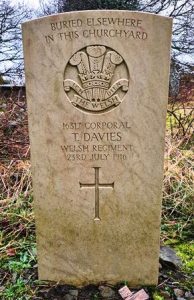
Thomas Davies, Private, 36852, Labour Corps. Thomas was born in 1877, the son of John Davies and Sarah Davies, of Kinnersley, Herefordshire. His father died soon after his birth and his mother married James Sheward, before moving in with him at Eccles Green, Norton Canon, Weobley, Herefordshire. Thomas worked as a farm labourer for his stepfather at Weobley prior to the war, then left home to enlist into the Cheshire Regiment. He was then transferred to the Labour Corps and appears to have remained on home service. Thomas became ill during his time in the army and was discharged from the army as medically unfit. He died of pulmonary tuberculosis at home at Eccles Green on 9 November 1919, aged 42. He has today, Friday 1 December 2023, been accepted for commemoration by the CWGC as a result of my work and will be commemorated in the United Kingdom Book of Remembrance, at Maidenhead unless the location of his grave can be traced.
Thomas Henry Davies, Smith Gunner, 1938, Royal Garrison Artillery. Thomas was the son of William and Margaret Davies, of 45, Merlin’s Hill, Haverfordwest. He married Sarah John on 5 October 1905 and the couple moved in with Thomas’s parents, where they had four children. Thomas was a Carriage Smith, and also a reservist, and on 5 September 1914 had rejoined the Royal Garrison Artillery. He was posted to the RGA Depot before joining the 5th Siege Battery in France on 23 December 1914. On 15 May 1915 he was hospitalised after taking ill in France, and returned to England where he was found to have contracted tuberculosis. On 7 February 1916 he was discharged as medically unfit, and returned to Haverfordwest. He died on 29 August 1917 aged 43, and was buried in St. Thomas’ Cemetery, Haverfordwest. Thomas was accepted for commemoration by the CWGC on Thursday 5 March 2015, and was commemorated in the United Kingdom Book of Remembrance until the CWGC verified his burial at St. Thomas’s and a new white Portland headstone has recently been erected in the Churchyard.
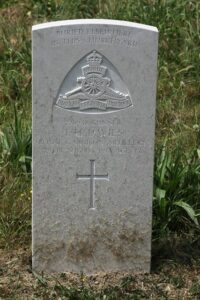
Thomas Owen Davies, Lance Corporal, 428278, Canadian Infantry. Thomas was born on 14 February 1893, the son of Owen Davies and Mary Ann Davies (née Hurley), of Garden Village, Machynlleth. The family later resided at 55, Bridge Street, Aberystwyth, while Thomas migrated to Canada at some time after 1911. He enlisted at New Westminster, British Columbia on 7 April 1915 into the 7th Battalion, Canadian Infantry. He sailed for England with his battalion on 13 November 1915 and after training on Salisbury Plain the Canadians moved to France. Thomas served at Ypres and on the Somme with the battalion before his health began to fail and he was transferred to the Canadian Forestry Corps in February 1918. He was later found to have contracted tuberculosis and returned to Canada for treatment before returning to Wales after the war. Thomas died at Machynlleth on 1 March 1921, aged 29 and was buried in Penegoes Churchyard, Machynlleth. His case was submitted to the CWGC on 5 December 2016 and he was accepted for commemoration on Tuesday 20 December 2016. He was reported to have been awarded the Distinguished Conduct Medal for his gallantry during a German gas attack at Ypres on 3 June 1916, for bringing in wounded men whilst under heavy rifle and machine-gun fire, but the award cannot be traced.
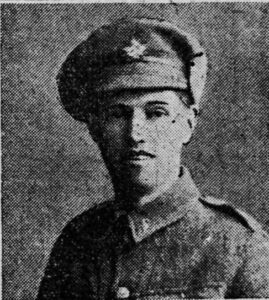
William Henry Davies, Rifleman, C/108, King’s Royal Rifle Corps. William was the son of Joseph and Martha Davies, of 68, Alexandra Terrace, Brynmill, Swansea. He enlisted into the King’s Royal Rifle Corps at Swansea on 16 September 1914 and married Norah Peer Calladine at Swansea on 12 October 1914, while on leave. William was posted to the 16th Battalion, King’s Royal Rifle Corps, which was known as the Church Lads Brigade, and was attached to 100 Brigade, 33rd Division. The battalion embarked for France on 16 November 1915 and saw its first major action during the Battles of the Somme, from July 1916 onwards. The division then moved north and fought at the Battle of the Scarpe and at Bullecourt, before heading to Ypres, and took part in the Battles of the Menin Road and Polygon Wood. On 30 November 1917 the battalion was in the line near Passchendaele village when it came under heavy artillery fire, suffering a number of casualties. William was among the men killed that day. He was 27 years old and is commemorated on the Tyne Cot Memorial, Belgium. While trying to identify William, it appeared at first that he was another un-commemorated case, but after extensive research into him, I discovered that he had been incorrectly commemorated as Herbert Davies by the CWGC, and with no family details being held by them, was almost impossible to identify. As a result of my work enough evidence was found to enable the CWGC to correct his name, after 100 years of him being wrongly named on their debt of honour, and this has recently been corrected.
William James Davies, Leading Seaman, D1701, Royal Naval Reserve. William was born on 7 April 1875, the son of Evan and Ann Davies, of 5, Crynfryn Row, Aberystwyth. He married Hannah Annie Parkes in 1905 and the couple resided at 25, Portland Road, Aberystwyth. William had worked as a fisherman at Aberystwyth for many years prior to the war and on 25 January 1911 had enlisted into the Royal Naval Reserve. He trained with the local RNR at Aberystwyth at many times during the coming years, then when war broke out was posted to the Majestic-class battleship HMS Caesar. He served aboard Caesar for four years, mostly in the North America and West Indies stations, before returning to England aboard her and transferred to HMS Duke of Edinburgh. After four months aboard her, William was posted to the shore base at HMS Vivid, then joined HMS President, from where he was invalided home on 5 March 1919 after having been diagnosed with tuberculosis. William returned home to his wife at Aberystwyth but sadly died of tuberculosis at Cambrian Square on 11 August 1919, aged 44. He was most probably buried in Aberystwyth, but for now, the CWGC will commemorate him in the United Kingdom Book of Remembrance, at their HQ at Maidenhead, until his grave can be located. William was accepted for commemoration by the CWGC on Friday 13 October 2023, after having been forgotten for over a hundred years.
William John Davies, Gunner, 76998, Royal Garrison Artillery. William was born in 1896, the son of John Davies and Rebecca Davies, of Garw Villa, South Road, Porthcawl. He enlisted into the Royal Garrison Artillery on 27 April 1916 and was posted to Salonika with the 153rd Heavy Battery, RGA on 25 July 1916. William served in Salonika for the remainder of the war, before being discharged from the army as medically unfit on 10 January 1919 after being diagnosed as suffering from tuberculosis. William returned home to his parents at Garw Villa, but died of tuberculosis there on 13 November 1919, aged 24. He has today, Friday 1 December 2023, been accepted for commemoration by the CWGC as a result of my work and will be commemorated in the United Kingdom Book of Remembrance, at Maidenhead unless the location of his grave can be traced.
Godfrey Dorey, Private, 62453, South Lancashire Regiment. Godfrey was born on 8 March 1885, the son of William James Dorey and Mary Dorey (nee Thomas), of Neath. He worked as a mason at the Cape Copper Works and married the widowed Catherine Ann Howells at Neath in 1908. Godfrey enlisted at Neath into the South Lancashire Regiment on 8 March 1915 and was posted to their 15th (Transport) Battalion, on home service in the Mersey Docks. Godfrey served on the Mersey for three years before his health began to break down and he was discharged from the army as physically unfit on 8 March 1918 due to bronchitis and emphysema. Godfrey died at 33, Wind Street, Neath on 24 March 1918, aged 33, leaving his widow, a step-daughter and two sons. His case was forwarded to the CWGC as a result of my research and he was accepted for commemoration by them on Wednesday 14 November 2018. He will be commemorated in the United Kingdom Book of Remembrance unless his grave can be found.
George Henry Downer, Company Sergeant Major, 3074, Royal Garrison Artillery. George was born in Carisbrooke, Isle of Wight in 1859, the son of Charles and Ann Downer. He originally enlisted into the Royal Garrison Artillery at Landport on 12 June 1877 and during his years with the colours spent much of his career in India, where he met and married Agnes Emily Dyer on 31 March 1890. Over the coming years Agnes bore George seven children, while he served around the empire, in Afghanistan, Burma and Egypt. After completing his service George moved his family to Swansea after being transferred to the Glamorgan Royal Garrison Artillery on 16 November 1890. He re-enlisted at Swansea into the Royal Garrison Artillery on 1 October 1914 and was posted to No 3 Depot, RGA. He served on home defence until being discharged from the army on 20 June 1918 after falling ill and being diagnosed as suffering from a urethral fistula and returned to Swansea. George died in Swansea Hospital on 24 February 1919, aged 60. His case was forwarded to the CWGC as a result of my research and he was accepted for commemoration by them on 6 December 2018. He will be commemorated in the United Kingdom Book of Remembrance.
Harold Edwards, Private, 27428, North Staffordshire Regiment. Harold was born in Chester in 1899, the son of Louisa Edwards. By 1911 he was lodging at 6, Glan Elyrch Villa, Elliots Town, New Tredegar, together with three of his siblings. Harold worked as an engineer prior to enlisting into the army on 5 May 1915 and was posted to the North Staffordshire Regiment. Harold never served overseas, but spent the rest of his time at war on home service. During the winter of 1917-1918 he became ill and was discharged from the army as medically unfit on 11 February 1918 after being diagnosed as suffering from heart disease. He then went to live with his mother at 72, Elm Street, Aberbargoed and died there of heart disease on 31 January 1920. The 20-year-old was buried in Bedwellty Churchyard. He was accepted for commemoration by the CWGC on Saturday 29 October 2022 and will be commemorated in the United Kingdom Book of Remembrance at Maidenhead until the location of his grave is verified.
Thomas Edwards, Private, 53675, Welsh Regiment. Thomas was the son of Rees and Elizabeth Edwards, of Chapel House, Llandeilo. He had served with the Pembroke Yeomanry prior to the war and re-enlisted at Carmarthen on 2 January 1915 into the 3rd Battalion, Welsh Regiment. He served in France during 1916 but became ill and was posted back to Redcar, where he was discharged as medically unfit on 19 January 1917. He returned to his home at Llandeilo, where he died on 24 October 1918, aged 26. His case was initially rejected by the CWGC, but luckily I was able to find his service papers and re-submitted his case. Thomas was finally accepted for commemoration by the CWGC on 2 October 2015. He will be commemorated on the United Kingdom Book of Remembrance until the location of his grave can be located.
Silas Edward Ellis, Private, 372204, Royal Army Medical Corps. Silas was born in Jersey on 10 August 1873, the son of Silas Edward Ellis and Elizabeth Mary Ellis (nee Collas). He worked as a stonemason for Cardiff Council and married Mary Jane Pudge at Roath on 31 July 1897. The couple lived at 8, Tewkesbury Place, Cathays, Cardiff. Silas enlisted into the Royal Army Medical Corps at Cardiff on 19 July 1915. He worked at the 3rd Western General Hospital, but whilst there took ill and was diagnosed as having contracted pulmonary tuberculosis. Silas was discharged from the army as medically unfit on 9 October 1917, and returned home. His conditions worsened over the coming years, and Silas died of pulmonary tuberculosis and cardiac failure at home on 28 November 1919, aged 46. Silas was accepted for commemoration by the CWGC on Wednesday 31 March 1921, and will be commemorated in the United Kingdom Book of Remembrance, unless the location of his grave can be found and proven.
Anthony Evans, Guardsman, 1937, Welsh Guards. Anthony was the husband of Madeline Evans (nee Chivers), of 20, Gilfach Road, Tonyrefail. He enlisted at Tonypandy into the Welsh Guards and was posted to France at some time during 1916. Anthony survived the attack of the Guards Division on Pilckem Ridge on 31 July but was killed just before his battalion was relieved from the front line in the Langemarck sector on 4 September 1917. He is buried in Canada Farm Cemetery, Belgium. Since his death the details of his widow have been mistakenly attached to another guardsman (below) by the CWGC and Anthony was commemorated with no details of his next of kin. Following research by myself for my attest book I came across this error and sent the details to the IFCP who informed the CWGC. The details of the two men have subsequently been corrected on 2 April 2016.
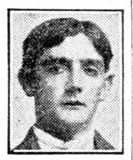
Daniel Oscar Evans, Corporal, 27005, Royal Army Medical Corps. Dan was born in Ystrad in 1885, the son of John and Mary Ann Evans. He worked as an electrician and was one of the founder members of the St. John’s Ambulance Brigade at Ystrad prior to enlisting into the Royal Army Medical Corps at Pembroke on 24 September 1914. Dan was promoted to Corporal within six months of enlisting but after just a year of serving became ill and was discharged as medically unfit on 30 September 1915 after being diagnosed as having contracted tuberculosis. He died at 12, William Street, Ystrad, Rhondda on 30 January 1918, aged 32. His case was submitted to the CWGC as a result of my research and he was accepted for commemoration on Wednesday 5 December 2018. He will be commemorated in the United Kingdom Book of Remembrance.
David Christmas Evans, Private, 4220, London Regiment. David was born in London, the son of David and Anne Evans. His parents were from Cwmann and the family had returned home prior to 1911, living at Cilgell Isaf Farm. David then returned to London and was living at 90, Blackfriars Road, Lambeth when he enlisted on 9 June 1915 into the 3rd/21st Battalion, London Regiment. He deserted the battalion after spending some time in hospital some weeks later and received 28 days detention as a result. Re-joining the battalion after his release, he was posted to France and on 10 July 1916 embarked at Southampton to join the 1st/2nd Battalion, London Regiment on the Somme. Within a week his health began to break down and David was admitted to the 16th General Hospital at Le Treport after being diagnosed with pleurisy. He returned to England on 2 August where he was diagnosed as having contracted tuberculosis and was discharged from the army as medically unfit on 31 August 1916. David spent some time at the West Wales Sanatorium at Llanybydder before being discharged and sent home. He died of pthisis at Cilgell Isaf on 8 May 1918, aged 20 with his aunt Letitia Williams by his bedside. He is buried in Brondeifi Chapel, Lampeter. Jennifer Cairns, of Lampeter, managed to trace his service papers, which were used by myself to forward his case to the CWGC in order to get him properly commemorated as a casualty of the Great War. He was accepted for commemoration on 2 July 2020, and will be commemorated in the United Kingdom Book of Remembrance, until the location of his grave can be verified.
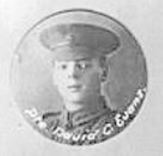
Edmund Evans, Guardsman, 1398, Welsh Guards. Edmund was the son of William and Hannah Winifred Evans, of 1, Cledwyn Terrace, Trecynon. He enlisted at Aberdare into the Welsh Guards and embarked for France with the battalion on 17 August 1915 and served through all its major actions, at Loos, the Somme and at Pilckem Ridge. He was killed in action at Langemarck on 3 September 1917 aged 20 and is buried in Canada Farm Cemetery, Belgium. Since his death he has been commemorated by the CWGC as A. Evans, and had the wife of another Guardsman, Anthony Evans (above) attached to him. Following research by myself for my next book, I came across these errors and carried out deeper research on both men in order to prove to the CWGC that the details they had were incorrect. These mistakes were corrected with the help of the IFCP on 2 April 2016.
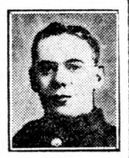
Edward Idris Evans, Sergeant, 49945, Royal Welsh Fusiliers. Idris was born in 1890, the son of William Evans and Rhoda Martha Evans (nee Davies), of Penygare, Kidwelly. He enlisted at Kidwelly on 3 September 1914 into the 9th Battalion, Welsh Regiment, which was attached to 58 Brigade, 19th Division. The battalion landed in France on 18 July 1915, moving to positions near Festubert. It took part in the opening attack of the Battle of Loos on 25 September 1915. Idris was promoted to Sergeant that day, after having showed good leadership qualities during the disastrous attack. The following year the Division moved to the Somme, where it took part in the second wave of the attack on Ovillers-La Boiselle on 1 July, capturing the village at heavy cost. It then fought through the Somme Battles of Pozieres and the Ancre in 1916. Idris was wounded on the Somme, and invalided home, being posted to the Depot Battalion at Cardiff after recovering. When he was sent back to France on 11 August 1917 he was transferred to the 9th Battalion, Royal Welsh Fusiliers, in the same brigade as his old unit. Idris caught up with his new battalion at Ypres, in time to take part in heavy fighting, at the Battles of the Menin Road, Polygon Wood, Broodseinde, Poelcappelle and Passchendaele Village itself. For his bravery during the fighting at Ypres, Idris was awarded the Military Medal, the award of which was published in the London Gazette of 17 December 1917. In 1918 the division was caught up in the German Spring Offensive near St. Quentin, where they suffered terrible casualties, during a brave rearguard action near Bapaume. Idris was wounded here on 25 March 1918, and was invalided home. While in hospital recovering from his wounds, a persistent cough which he had developed in France was found to be tuberculosis, so Idris was discharged from the army on 30 August 1918. He died of tuberculosis at 2, Priory Street, Kidwelly on 1 November 1919, aged 29 years, and was buried with full military honours at Capel Sul Chapelyard. Edward has just been accepted for commemoration by the CWGC (Saturday 5 April 2014).
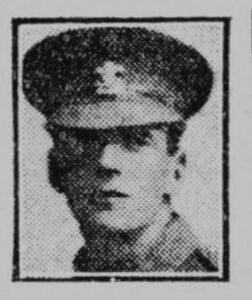
George Arthur Evans, Private, 49583, Welsh Regiment. George was born on 20 January 1893, the son of John and Fanny Maria Evans, of 50, Waterloo Road, Hakin, Milford Haven. He married Elinor James at Milford in 1915. George enlisted into the 3rd Battalion, Welsh Regiment and served at the Depot in Cardiff before becoming ill. He was discharged as medically unfit on 11 December 1915 and returned to Milford, to his wife Elinor, at St Lawrence Cottage, Hubberston Hill. George died of tuberculosis on 18 March 1921, aged 28. His case was recently forwarded to the CWGC, and he was accepted for commemoration by them on Tuesday 25 August 2020. He was originally commemorated in the United Kingdom Book of Remembrance at Maidenhead, but his grave has recently been found in Milford Haven Cemetery, Wales.
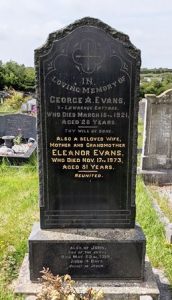
Francis Ficken, Company Sergeant Major, 12260, Welsh Regiment. Francis was born in Whitechapel on 25 May 1878, the son of Francis and Sarah Ficken. As a child he was living in the borough when the infamous Ripper killings took place ten years later. He had served during the Boer War and after retiring from the army had settled at Pengwern Road, Clydach, marrying Catherine John in 1914. He re-enlisted at the outbreak of the war and joined the 19th Battalion, Welsh Regiment, which was the Pioneer Battalion to the 38th (Welsh) Division and was given the army number 12260. With his military experience he was soon promoted, becoming a CSM in the battalion. He had served in France from June 1916, and did not join the battalion in the field until after the 38th (Welsh) Division had been evacuated from Mametz Wood. He served with the battalion throughout its long period on the Canal Bank at Ypres, and saw action at Pilckem Ridge on 31 July 1917 and later moved with the battalion to Armentieres before returning home on leave on 9 March 1918. By 5 August the strains of life on the Western Front had taken their toll on his health, and he was evacuated from the 130th Field Ambulance to hospital, before returning to England on 19 August 1918 and sent to the Royal Herbert Hospital at Woolwich. Over two years on active service had caused his health to deteriorate rapidly and he was seconded to a desk job with the Food Control Office, but he suddenly became worse and he died of heart disease on 31 December 1918 aged forty two. Ficken was buried with full military honours in Salem Calvinistic Methodist Chapel, Clydach. His case was forwarded to the CWGC on 8 July 2015 and he was accepted for commemoration on Friday 30 October 2015. I am presently trying to locate the burial register for Salem to prove that Francis is buried there, otherwise he will be commemorated in the United Kingdom Book of Remembrance.
William Henry Fisher, Private, 17053, Welsh Regiment. William was the son of William Henry Fisher, ambulance driver, of 9, Hall Terrace, Swansea. He was an engineer and married Elizabeth Maud Norman at Swansea on 25 January 1913. William enlisted at Swansea into the 14th Battalion, Welsh Regiment on 28 September 1914. The battalion trained at Rhyl as part of the Welsh Division. On 6 February 1915 William became ill and was rushed to hospital, where he was diagnosed as suffering from tuberculosis. He was invalided from the army on 10 July 1915 and died at his father’s home on 25 November 1915, aged twenty four. William was buried with full military honours in Swansea (Cockett) Cemetery. His case was forwarded to the CWGC by myself on 8 July 2015 and he was accepted for commemoration on Wednesday 28 October 2015.
Edwin Charles Fitzgerald, Private, 5131, Royal Welsh Fusiliers. Edwin was born in 1875, the son of William Francis Fitgerald and Mary Fitzgerald (nee Phillips), of 9, Hawthorn Road, Llandaff, Cardiff. By 1901 Edwin was lodging at Firs Glen, Skerry Road, Newtown, where he worked as a registration agent, but by 1911 he was living back with his parents at Cardiff, after gaining a position as a club secretary locally. Edwin enlisted into the 5th Battalion, Royal Welsh Fusiliers on 2 March 1916, and served on home service for almost a year, before being discharged as medically unfit, as a result of tuberculosis, on 28 February 1917. He returned home to Cardiff, but over the coming years his health broke down and Edwin eventually died of tuberculosis at his sisters home at 32, Pendarren Street, Aberdare on 27 January 1921, aged 45. He was accepted for commemoration by the CWGC on Thursday 3 August 2023, as a result of my work, and will for now be commemorated in the United Kingdom Book of Remembrance at Maidenhead, Berkshire, unless the location of his grave can be located.
Henry Flower, Sapper, 111611, Royal Engineers. Henry was born in Pontypool in 1868, the son of Albert Flower and Rachel Flower (nee Davies). His father died when he was young, so Henry became the main breadwinner for the family, who resided at 6, Waterfall Row, Bedwellty. He married Elizabeth Cummings at Bedwellty Registry Office on 6 August 1912 and the couple initially set up home at 3, Gantra, Ebbw Vale. Henry enlisted into the Royal Engineers in Cardiff on 12 August 1915 and after completing his training, embarked for France on 22 August 1915. He served on the Western Front with a Labour Battalion for almost a year before his health began to fail, and after being diagnosed as suffering from tuberculosis, was sent back to Britain for treatment at the Royal Hospital, Chelsea. Henry was discharged from the army on 9 January 1917 and returned home to his wife at Ebbw Vale. Henry’s health continued to deteriorate, and he died of tuberculosis of the hip at Park Row Infirmary, Tredegar on 2 January 1919, aged 51. Henry is commemorated on the St. David’s Church War Memorial at Beaufort. He has today, Saturday 17 December 2022, been accepted for commemoration by the CWGC, who will commemorate him in the United Kingdom Book of Remembrance at Maidenhead, unless the location of his grave can be located.
Frank Francis, Driver, 42159, Royal Field Artillery. Frank was born in 1891, the son of William and Annie Francis, of 13, Ethel Street, Melincrythan, Neath. He worked as a teamster at Neath prior to enlisting into the Royal Field Artillery at Deptford on 6 November 1914. Frank was posted to No. 2 Depot, RFA at Preston for training before joining A/105th Battery, but deserted on 25 April 1915. He returned to his battery four months later and was sentenced to 84 days detention. He escaped but was caught several months later and spent a further six months in detention before being released for duty on 4 July 1917 and joined R/43rd Battery at Christchurch. Frank continued to have an interesting military career, deserting twice more and incurring two more spells in detention, and remained on home service for the rest of the war. After the Armistice he remained with the colours, but his mental health had broken down and he was imprisoned again on 9 March 1920 before being declared as insane. Frank died in Victoria Hospital, Netley, Hampshire of general paralysis of the insane on 5 April 1920, aged 28. Despite his chequered service history, Frank was a serving soldier who was obviously suffering from mental illness which was worsened by his military service and as a result died. His case was recently forwarded to the CWGC as a result of my research, and he was accepted for commemoration by them on Friday 4 December 2020. He will be commemorated in the United Kingdom Book of Remembrance until the location of his grave is found.
Samuel French, Sapper, 387877, Royal Engineers. Samuel was born in 1891, the son of Richard and Elizabeth French, of 23, Portland Street, Newport, Mon. He worked as a Railway Guard prior to enlisting at Newport into the Royal Monmouthshire Royal Engineers on 12 October 1915 and was posted to the Depot at Monmouth for training. He embarked for France with No 6 Siege Company, RMRE, aboard the SS Caesarea on 27 May 1916, disembarking at Le Havre the following day. The Company then moved to Abbeville before entraining for Rouen, before moving to Étaples. The Company remained here over the coming months, supplying working parties and skilled craftsmen to camps around the area, carrying out a wide variety of work. Samuel took ill just before Christmas 1917 and was evacuated to hospital in England from the 8th Stationary Hospital in France. Upon recovering he was posted back to the Depot at Monmouth, and on 28 February 1918 Samuel transferred to G Company, Royal Engineers at Chatham. His health continued to fail, and Samuel was diagnosed as having contracted pulmonary tuberculosis. He was discharged from the army as medically unfit on 18 June 1918, and returned home to 23, Portland Street, Newport, where he died of tuberculosis on 7 September 1919, aged 28. Samuel was buried in Newport (St. Woolos) Cemetery, Wales. He was accepted for commemoration by the CWGC because of my research on 6 July 2021 and will be commemorated in the United Kingdom Book of Remembrance at Maidenhead, until the location of his grave is verified.
John Garvin, Private, 11737, South Wales Borderers. John was born at Abersychan in 1876, the son of William and Mary Garvin. He married Ada Williams at Pontypool on 1 April 1899 and the couple lived in 62, High Street, Pontypool. John worked as a collier and had served with the Royal Monmouth Royal Engineers (Territorials) prior to enlisting into the 3rd Battalion, South Wales Borderers at Brecon on 10 August 1914. He was initially posted to the 1st Battalion, South Wales Borderers and embarked for France on 13 September 1914, joining the battalion after it had withdrawn from Mons to the Marne, with 3 Brigade, 1st Division. He was wounded at Ypres on 9 November 1914 and returned home before being posted to the 2nd Battalion, South Wales Borderers, joining the battalion at Gallipoli on 10 May 1915. He was wounded again in Gallipoli and returned home on 7 August 1915 after treatment at hospital in Giza. As well as being wounded twice, John’s papers show that he had begun to suffer from ill-health and was discharged as medically unfit on 3 July 1916 after having been found to have contracted tuberculosis. John returned home and died in 62, High Street, Pontypool on 30 September 1916, aged 40, leaving his widow and seven children. His case was forwarded to the CWGC as a result of my research and he was accepted for commemoration by them on Wednesday 14 November 2018. He will be commemorated in the United Kingdom Book of Remembrance for now, but following information sent in by his family, his grave has been found in St. Cadoc’s Churchyard at Trevethin and evidence has been forwarded to the CWGC to prove so.
Thomas William George, Corporal, 6758, Royal Engineers. Thomas was born in Swansea in 1884, the son of Daniel and Harriett George. He married Mary Ellen Heffron in Swansea on 24 August 1907 and the couple lived in 37, Dyfatty Street, Swansea. Thomas worked as a labourer prior to enlisting at Swansea into the Royal Engineers on 22 August 1914 and was posted to the Royal Monmouthshire Royal Engineers. He was posted to France on 13 December 1914 and served with the unit on the Western Front until being taken ill on 22 July 1915 and was diagnosed as suffering from nephritis. He returned home for treatment at the 1st London General Hospital for several months and returned home after being discharged from the army as medically unfit on 8 May 1916. Thomas died at 14, Caebricks Road, Cwmbwrla on 15 November 1916, aged 32, and was buried with full military honours in Cwmgelly Cemetery, Swansea. His brother Emin Stanley Jones and Mary’s brother, Thomas James Heffron were killed in 1915. His case was forwarded to the CWGC as a result of my research and he was commemorated by the CWGC on Thursday 15 November 2018. Thomas was commemorated in the United Kingdom Book of Remembrance until the location of his grave was verified by the CWGC, and a new headstone has recently been installed to mark his grave.
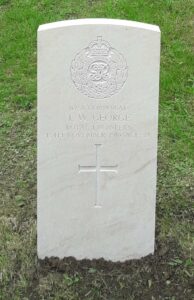
Alfred Gilmore, Private, 20660, Welsh Regiment. Alfred was born in St. Mary’s, Monmouth in 1866, the son of Samson and Ann Gilmore. He had worked as a labourer prior to enlisting into the Welsh Regiment on 15 September 1882, serving with the 2nd Welsh in Ireland, Mauritius, South Africa, Egypt and Malta until being discharged on 10 September 1894 after spending a short time in prison for desertion. He then worked as a miner prior to enlisting into the Royal Monmouth Royal Engineers on 23 March 1898, but was discharged for misconduct two years later. At the outbreak of war Alfred re-enlisted, joining the 5th Welsh and was posted on garrison duty to St. Fagan’s. On 13 March 1915 Alfred was on guard duty at St. Fagan’s railway station when he fell into the path of a train and was killed. The 52 year old was buried with full military honours in St. Mary’s Church, St. Fagans. His case was forwarded to the CWGC by myself last year and he was accepted for commemoration on Wednesday 25 March 2016.
David Evan Gough, Private, 206079, London Regiment. David was born at Tirphil in 1900, the son of George and Mary Gough, of 23, Railway Terrace, Tirphil. He worked as a collier prior to enlisting into the army and was called up on 10 April 1918, joining the Territorial Force Cyclists Depot. On 15 November 1918, four days after the armistice, he was posted to the 1st Reserve Battalion, London Regiment at Aldershot, but soon became ill and was hospitalised there. He was discharged from the army as medically unfit on 15 January 1919 after having been diagnosed as having contracted tuberculosis. David died at 23, Railway Terrace, Tirphil on 8 May 1919, aged 18. His case has recently been forwarded to the CWGC as a result of my research and he was accepted for commemoration by them on Saturday 10 November 2018. He was originally commemorated in the United Kingdom Book of Remembrance at Maidenhead, but his grave has recently been found in St. Sannan’s Churchyard, Bedwellty, and the CWGC are in the process of producing a CWGC headstone for him.
George Kedgwin Francis Gough, Sergeant, S4/146221, Royal Army Service Corps. George was born in Hammersmith on 18 June 1878, the son of Kedgwin Elliott Kaye Gough and Frances Temperance Gough (nee Parkinson). By 1901 George was living at Pontypridd, where he worked for a local auctioneer, and on 11 June 1908 he married Sarah Hannah Hathaway Jones, at Treforest. By 1911 the couple had moved to Brynteg, Llantwit Road, Treforest, where George had gained a position as a Traffic Clerk on the electric tramways. By then his father had died, and his mother and two sisters were living at Wyecliffe, Dinas Powis. George enlisted into the Army Service Corps at Cardiff on 4 November 1915 and was posted to Aldershot. George was posted to East Africa, embarking at Avonmouth aboard the SS City of Chester on 25 January 1916, and upon disembarking joined the East African Force. He served there until after the Armistice, suffering bouts of malaria in the meantime, before embarking at Dar es Salaam for England aboard the MT Salamis on 3 January 1919. On 7 April 1919 George was demobilised and returned home, but by now his health had broken down. George and his wife Sarah then went to live with her brother at Brynteg, Ashburnham Road, Pembrey, but George died of malaria there on 12 August 1919, aged 41. George was accepted for commemoration by the CWGC on Wednesday 31 March 1921, and will be commemorated in the United Kingdom Book of Remembrance, unless the location of his grave can be found and proven.
Ralph Stratford Goulden, Gunner, 166583, Royal Garrison Artillery. Ralph was the son of Henry and Jane Goulden, of Hill Brow, Cowbridge. He worked as a Postman and lived at Brynteg Villa High Street, Ammanford prior to the war. Ralph enlisted into the Royal Field Artillery at Ammanford on 18 March 1917, and on 1 June 1917 landed in France where he was transferred to the Royal Garrison Artillery. Ralph served with the Base Details, but took ill whilst awaiting a positing to a Siege Battery and was hospitalised, where he was diagnosed as having contracted tuberculosis. He returned to England and on 24 September 1917 he was admitted to the 2nd Western General Hospital at Manchester for treatment, before being brought to the Cimla Hospital, Neath. Knowing he was dying, Ralph requested that he be taken back to Ammanford, and he died of tuberculosis at 2, Maerdy Road, Betws on 26 June 1919, aged 25. Ralph was buried with full military honours in St. Michael’s Churchyard, Ammanford. Ralph was accepted for commemoration by the CWGC on 30 March 2021, and will be commemorated in the United Kingdom Book of Remembrance, until the location of his grave can be found and verified.
John Graham, Gunner, 200393, Royal Garrison Artillery. John was born in 1898, the son of Henry and Elizabeth Graham, of 17, Penyard, Penydarren, Merthyr Tydfil. He worked as a Coal Hewer prior to enlisting into the Royal Garrison Artillery. John did not embark for service overseas, but took ill whilst undergoing his training, and was discharged from the army as medically unfit on 16 September 1918, after having been diagnosed as suffering from pulmonary tuberculosis. He returned home and was taken to Pontsarn Sanatorium at Merthyr for treatment, but died there of tuberculosis on 25 September 1918, aged 21. John was buried in Merthyr Tydfil (Ffrwd) Cemetery, Penderyn five days later. He was accepted for commemoration by the CWGC as a result of my research on 6 July 2021 and will be commemorated in the United Kingdom Book of Remembrance at Maidenhead, until the location of his grave is verified.
Samuel Arthur Griffiths, Telegraphist, J22443, Royal Navy. Samuel was born in Wrington, Somerset on 25 September 1897, the son of Arthur and Mary Jane Griffiths. He worked as a cattle dealers assistant at Tredegar prior to enlisting into the Royal Navy on 25 September 1915 as a Boy 2nd Class. He was based at HMS Vivid I for his initial training before being posted aboard the dreadnaught HMS Erin. On 6 November 1915 he was transferred to the super-dreadnaught HMS Canada and served on her before his health begun to fail. Samuel was hospitalised at Devonport before being discharged from the Royal Navy and died at Tredegar of tuberculosis on 14 May 1917, aged 19. He is buried in Tredegar (St James) Churchyard. His case was submitted to the CWGC following my discovery of him and he was accepted for commemoration on Wednesday 8 March 2017.
Stanley Griffiths, Private, 2252, Welsh Regiment. Stanley was the son of David and Sarah Ann Griffiths, of 50, Iorwerth Street, Swansea. He worked as a labourer prior to enlisting at Swansea into the 6th Battalion, Welsh Regiment on 10 August 1914. He was posted to France on 7 February 1915, joining the 1st/6th Welsh, which was serving on Lines of Communication. On 5 July 1915 the battalion was transferred to 84 Brigade, 28th Division, and took part in the Battle of Loos, which opened on 25 September 1915, alongside the 1st Welsh. The 6th Welsh transferred to the 1st Division, alongside the 2nd Welsh, and wintered near Loos. Stanley was shot in the chest here while at work digging trenches on 28 December 1915. He was evacuated home for treatment, but was discharged from the army as medically unfit on 3 October 1916 after having been found to have also contracted tuberculosis. Stanley died at 50, Iorwerth Street on 4 June 1917, aged 20. He was buried with full military honours in Danygraig Cemetery, Swansea. His brother, David Daniel Griffiths, had been killed during the opening day of the Battle of the Somme in 1916. His case was forwarded to the CWGC as a result of my research and he was accepted for commemoration by them on Wednesday 14 November 2018. He was temporarily commemorated in the United Kingdom Book of Remembrance, but a re-dedication cemetery has recently been held by the CWGC at Danygraig.
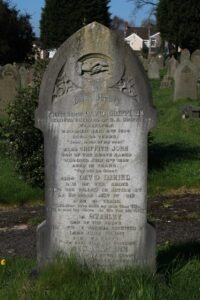
Edward Jenkin Gulliford, Private, 19963, South Wales Borderers. Edward was born on 31 May 1884, the son of George and Elizabeth Gulliford, of 13, Chapel Row, Blaenavon. He worked as a colliery haulier prior to enlisting at Newport into the South Wales Borderers on 31 May 1915. He embarked at Devonport to join the MEF on 16 October 1915 and joined the 4th Battalion, South Wales Borderers at Gallipoli. He was evacuated from Gallipoli on 14 December 1915 after contracting dysentery and was taken aboard the Hospital Ship Soudan, which took him to Malta. Edward was treated at St. George’s Hospital and was sent back to England to recuperate. Edward was then posted to France and embarked at Marseilles on 1 November 1916 to join the 8th Battalion, South Wales Borderers in Salonika. He joined the battalion on 13 November, but within weeks had taken ill again and was sent to the 29th Stationary Hospital, Salonika before being transferred back to St. George’s Hospital in Malta. Edward was then taken aboard the Hospital Ship Goorkha, which set sail from Malta for England on 10 October 1917 but struck a mine and sank, luckily without loss of life. Edward was taken back to Malta before being sent to England aboard the Hospital Ship Wandilla and he was discharged from the army as medically unfit on 20 February 1918 after being diagnosed as suffering from spinal caries. He died at the Pontypool and District Hospital, Abersychan on 21 June 1918, aged 35 and was buried with full military honours in St. Peter’s Churchyard, Blaenavon. His case was forwarded to the CWGC as a result of my research and he was accepted for commemoration by the CWGC on Friday 29 November 2019.
Thomas John Hale, Private, 34342, South Wales Borderers. Thomas was the son of Samuel and Mary Lizzie Hale, of 30, Marion Street, Newport. He worked as a dock labourer prior to enlisting at Newport into the South Wales Borderers on 15 September 1915. He was initially posted to the 14th Battalion, South Wales Borderers at Prees Heath before being posted to the 12th Battalion, South Wales Borderers on 2 November 1915. The battalion was attached to 119 Brigade, 40th (Bantam) Division and landed in France in June 1916. He was tried by FGCM in France for refusing to obey an order by a superior officer and was awarded 3 months Field Punishment No 1 by the tribunal. He served throughout the battalions time in France, taking part in its famous action at Bourlon Wood. The battalion was disbanded on 10 February 1918 and Thomas was transferred to the 4th Battalion, Bedfordshire Regiment. He became ill soon afterwards and was sent back to England and was discharged from the army as medically unfit on 16 August 1918 after being diagnosed as having contracted tuberculosis. Thomas died at 30, Marion Street, Newport on 6 September 1919, aged 32. His case was forwarded to the CWGC as a result of my research and he was accepted for commemoration by them on Tuesday 13 November 1918. He will be commemorated in the United Kingdom Book of Remembrance, until the location of his grave can be found.
John Harness, Private, 22560, Welsh Regiment. John was born in 1894, the son of Jane Harness. The family appears to have worked in the fairgrounds, having lived at the Fairground at Barry Dock and at Coney Beach, Porthcawl. John enlisted into the Welsh Regiment under the name of John Honess on 23 November 1914 and was drafted to France on 26 May 1915, joining the 1st Battalion, Welsh Regiment, which was attached to 84 Brigade, 28th Division. The battalion had suffered terrible casualties at Bellewaarde in the days prior to John’s arrival, and was billeted behind the line when he arrived. The division moved south over the summer and on 25 September took part in the Battle of Loos, suffering terrible casualties once again. During October 1915, the Division embarked at Marseilles, and proceeded to Egypt, and in November moved on to Salonika where the Division then remained until the end of the war. John survived the war but the terrible conditions at Salonika had taken their toll on his health. He was discharged from the army on 4 February 1919 as a result of malaria contracted on active service and returned home to his mother, who was by then living at Coney Beach. John’s health continued to wane over the coming years and he eventually died of a lung abscess and asthenia at Penrhiewtyn Infirmary, Neath on 7 June 1921, aged 27. He was accepted for commemoration by the CWGC on Thursday 3 August 2023, as a result of my work, and will for now be commemorated in the United Kingdom Book of Remembrance at Maidenhead, Berkshire, unless the location of his grave can be located.
William Ronald Hastings, Private, 78599, Welsh Regiment. William was the son of Robert and Annie Hastings, of 13, Chapel Street, Milford Haven. William worked as a Butcher’s Assistant prior to enlisting into the Welsh Regiment on 24 June 1918, and was posted to the 52nd Training Reserve Battalion at Kinmel Park. Within months he became ill, and was invalided to Norfolk War Hospital in Norwich where he was found to be suffering from tuberculosis, and he was discharged from the army as medically unfit on 7 November 1918. William died of tuberculosis at Hubberston on 16 March 1919, aged just 18, and is buried in Milford Haven Cemetery. William’s case was passed onto the CWGC on 5 August 2012. He was initially rejected through lack of evidence on 21 July 2014, but has today, Tuesday 22 October 1914 been accepted for commemoration after further evidence was uncovered. He was temporarily commemorated in the United Kingdom Book of Remembrance, pending confirmation of his burial at Milford, but this has since been confirmed and a new CWGC headstone has been erected over his grave.
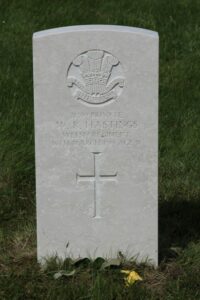
William Harold George Henshaw, Private, O7946, Royal Army Ordnance Corps. William was the son of David Henshaw (a policeman) and Mary Ann Henshaw, of 82, Swansea Road, Llanelli. He enlisted at Llanelli on 23 May 1915 into the Army Ordnance Corps, and was posted to Woolwich. He served there until discharged due to ill health on 22 April 1916 and returned to Llanelli. William died on 12 December 1917 aged 23 as a result of tuberculosis brought about by his military service. William is buried in Llanelli District Cemetery. He was accepted for commemoration by the CWGC on Saturday 26 April 2014.
Ivor John Hiley, Gunner, 164946, Royal Field Artillery. Ivor was the son of James and Elizabeth Hiley, of 6, Barry Road, Cadoxton. He ran his own drapery business at Ebbw Vale prior to the war and married Maud Williams in 1912. The couples only child, Mollie, was born in the family home at 41, Wern Road, Sebastopol in 1914 prior to Ivor enlisting into the Royal Field Artillery. Ivor was posted to France in 1916 and joined the 63rd Division Ammunition Column, which was attached to the famous 63rd (Royal Naval) Division. He took part in the divisions offensive on the Ancre, during the latter stages of the Somme offensive in 1916 and the following year took part in its actions during the Battle of Arras and the Third Battle of Ypres. He survived the war and came home on leave after the armistice but became ill and came down with pneumonia. Sadly, while he was in his sick bed, his wife and daughter died of pneumonia on 1 December 1918. Ivor himself died at Sebastopol on 16 December 1918 aged 33. His case was forwarded to the CWGC as a result of my research and he was accepted for commemoration by them on Tuesday 14 May 2019. He will be commemorated in the United Kingdom Book of Remembrance unless his grave can be found.
Alfred James Hobbs, Private, 115250, Royal Army Medical Corps. Alfred was born on 14 March 1898, the son of Alfred Hobbs and Amelia Hobbs (nee Smith), of Dorset Place, Panteg. The family had moved to 8, Commercial Street, Griffithstown by 1911 and Alfred gained work as a cleaner for the Great Western Railway after leaving school there. He enlisted into the Royal Army Medical Corps on 27 April 1917 and served for almost nine months before being discharged as medically unfit on 4 January 1918, as a result of contracting tuberculosis. Alfred returned home to his parents at Griffithstown, but his health continued to fail him, and he eventually died of tuberculosis at home there on 6 June 1920, aged 22. He was accepted for commemoration by the CWGC on Thursday 3 August 2023, as a result of my work, and will for now be commemorated in the United Kingdom Book of Remembrance at Maidenhead, Berkshire, unless the location of his grave can be located.
David Alfred Hodges, Z/2750, Ordinary Seaman, Royal Naval Reserve. David was born on 17 February 1896, the son of Thomas and Mary Hodges, of 41, Robinson Street, Llanelli. He worked for the GWR at Llanelli prior to the war, and enlisted into the Royal Naval Reserve on 24 December 1915, training as a Wireless Operator. He was posted to Milford Haven, where he served as a Wireless Operator aboard HM Trawler Imelda, which had been requisitioned by the Admiralty for use as a minesweeper. David survived the war, but died of tuberculosis on 3 June 1919, aged 23. He is buried with his parents at Box Cemetery, Llanelli. His details were passed to the CWGC on 6 February 2013, and he has finally been accepted for commemoration by them on Friday 5 July 2013, after almost 94 years of being forgotten. David was temporarily commemorated on the UK Book of Remembrance at Maidenhead, Berkshire, until the location of his grave was verified.
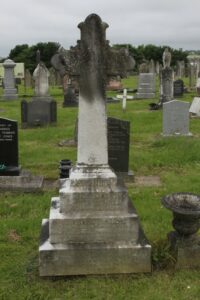
Thomas John Hodson, Sergeant, 8621, South Wales Borderers. Thomas was born in Brecon on 4 September 1885, the son of George Hodson and Margaret Hodson (nee Lewis). His father had served in the army and as a result the family was well travelled, having lived at Gibraltar and Ireland, but following George’s retirement from the army moved to 1, Ffrwdgrech Road, Llanfaes, Brecon. Thomas joined the South Wales Borderers as a young man and by 1911 was based in Brecon Barracks. He married Gwladys Evangeline May Webster at Brecon on 3 November 1912. Thomas left the army soon after his marriage and found work for the Midland Railway at Brynamman. As a Special Reservist, Thomas was called up soon after the outbreak of war and joined the 1st Battalion, South Wales Borderers. The battalion moved to France at the outbreak of war, attached to 3 Brigade, 1st Division. The Division had been one of the first to arrive in France, fighting at the Battle of Mons, and took part in the retreat to the Marne, where the Germans were stopped. The division then fought at the Aisne, and during the famous action at Chivy Ridge, before the BEF was moved north to Flanders, to hold the vital Belgian city of Ypres. Thomas never reached Ypres, as he was shot in the chest on 23 September, during the Battle of the Aisne, the bullet piercing his lung. He was taken prisoner by the Germans, but somehow managed to escape and eventually reached England for hospital treatment at Lincoln. Upon his release from hospital he was discharged as medically unfit on 2 April 1916 and returned home to Brecon. Thomas soon gained a position working for the Royal Mail at Twickenham, but became ill soon afterwards, due to his previous wounds, and died of tuberculosis at 73, Godstone Road, Twickenham on 4 July 1916. The remains of the 30-year-old were brought back to Brecon by rail and he was buried with full military honours in St. David’s Churchyard, Brecon on 8 July. His brother, Lewis George Hodson, died of sickness contracted on active service in 1920, while his brother-in-law, Douglas Gordon Webster, was killed in France in 1918. Thomas has today, Saturday 17 December 2022, been accepted for commemoration by the CWGC, who will commemorate him in the United Kingdom Book of Remembrance at Maidenhead, until the location of his grave is verified.
Dennis Holland, Private, 21441, Welsh Regiment. Dennis was born at Newport, Monmouthshire on 3 May 1876, the son of James and Ellen Holland. He married Elizabeth Lewis in 1900 and the couple lived at 58, Ynyscynon Road, Trealaw, where Dennis worked as a builders haulier. He had served with the 3rd Battalion, South Wales Borderers prior to moving to Trealaw, but had deserted before marrying Elizabeth. He re-enlisted into the 5th Battalion, Welsh Regiment at Tonypandy on 3 December 1914 and was posted to the 2nd/5th Battalion, which was a reserve unit. Dennis served with the battalion at Cardiff until 10 September 1915 when he was posted to Pembrey with the battalion, which left for coastal defence duties at Liverpool on 28 October 1915. He served at Liverpool until 5 May 1916 by which time his health had broken down and he was discharged after having been diagnosed as suffering from tuberculosis. Dennis returned to Trealaw where he died of tuberculosis on 8 February 1919, aged 43. His case was submitted to the CWGC as a result of my research, and he was accepted for commemoration by them on Friday 18 December 2020. He will be commemorated in the United Kingdom Book of Remembrance at Maidenhead, until the location of his grave can be verified.
Fred Holland, Private, 46417, Welsh Regiment. Fred was born at Newport, Monmouth and enlisted there into the Welsh Regiment. He was posted to France at some time during the winter of 1916-17, joining the 17th Battalion, Welsh Regiment, which was attached to 119 Brigade, 40th (Bantam) Division. The Division was in position ready for an assault on Villers Plouich by 23 April. Their attack began at 4.15 am on 24 April and met with little opposition except at Beaucamp, with the 17th Welsh advancing a mile before being forced to dig in along a spur east of the village where the men came under heavy artillery fire. One officer and thirty men were killed during the day, including Fred Holland. Oddly all but one of the men of the 17th Welsh killed at Villers Plouich on 24 April have known graves. One man, Fred Holland, was commemorated on the Thiepval Memorial. In Fifteen Ravine British Cemetery, Villers Plouich is a headstone marked: A Soldier of the Great War, Welsh Regiment. 24th April 1917. Following some detailed research I presented the CWGC with evidence to prove that Fred Holland was buried in this grave. On 30 November 2015 I received a letter from the MoD confirming that they agree with his research and on 23 March 2016 a new headstone was erected and rededicated for Private Holland. After almost 99 years this missing fallen soldier’s grave had been found and he now has a named headstone.
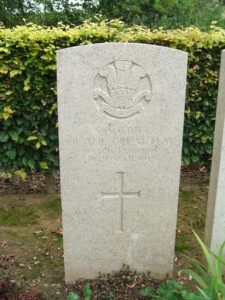
Richard Stephen Holloway, Private, 44693, Welsh Regiment. Richard was the son of Stephen and Mary Ann Holloway, of Bryn, Llangennech. He worked as a shoemaker prior to enlisting into the Welsh Regiment and was posted to the 23rd Battalion, Welsh Regiment, which was known as the Welsh Pioneers and was attached to the 28th Division. He served in Salonika with the 23rd Welsh before contracting Malaria and was sent back to England for treatment before being discharged as physically unfit. He died of malaria on 18 March 1920, aged 23. His case was recently forwarded to the CWGC as a result of my research, and he was accepted for commemoration by them on Tuesday 25 August 2020. He was originally commemorated in the United Kingdom Book of Remembrance at Maidenhead, however he was then found to be buried in Llanelli District Cemetery, so the CWGC are in the process of installing a headstone for him.
William Arthur Hopkins, Private, 41944, Royal Army Medical Corps. William was the son of John and Elizabeth Hopkins, of Talywain, Monmouthshire. He married Clara Williams at Pontypool in 1897 and the couple had three children over the coming years, in their home at 7, Edward Street, Conway Road, Pontypool. William worked as a haulier prior to enlisting at Newport into the Royal Army Medical Corps on 19 October 1914 and on 16 February 1915 embarked for France to join the BEF, joining the 4th Division and served with No 12 Field Ambulance. He served continuously in France until being admitted to the 1st Canadian Casualty Clearing Station on 30 April 1918 where he was found to have lost his memory and be suffering from dementia due to the stress of military service. On 4 May 1918 he returned to England aboard the Hospital Ship Pieter de Coninck and was discharged from the army as physically unfit on 21 August 1918. He died at Abergavenny Lunatic Asylum on 27 May 1920, aged 44. His case was forwarded to the CWGC as a result of my research and he was accepted for commemoration by the CWGC on Friday 16 November 2018. He will be commemorated in the United Kingdom Book of Remembrance unless his grave can be located.
William Henry Hopkins, Private, 13301, Royal Welsh Fusiliers. William was born in Swansea in 1893, the son of William and Hannah Hopkins. By 1911 the family was living at 15, Trebanog Road, Cymmer. William worked as a coal miner prior to enlisting at Tonypandy into the Royal Welsh Fusiliers on 2 September 1914 and initially joined the 9th Battalion, Royal Welsh Fusiliers, which was attached to 58 Brigade, 19th (Western) Division. He was then transferred to the 1st Battalion, Royal Welsh Fusiliers and landed in France on 27 September 1915, joining the battalion in Flanders. Within weeks, on 1 December 1915, William was admitted to hospital at Bethune after becoming ill and was diagnosed as suffering from valvular heart disease. He was sent to Étretat, where he remained for three weeks before being sent to the 2nd Western General Hospital at Manchester. He was discharged from the army as medically unfit on 25 July 1916 and returned home. William died of heart disease at 144A Trebanog Road, Cymmer on 16 October 1918, aged 24. His case was forwarded to the CWGC as a result of my research and he was accepted for commemoration by the CWGC on Friday 16 November 2018. He was originally commemorated in the United Kingdom Book of Remembrance, but he has recently been found to have been buried in Trealaw Cemetery, Rhondda, so the CWGC are in the process of manufacturing a CWGC headstone to mark his grave.
John Rees Horan, Seaman, WZ/4708, Royal Naval Volunteer Reserve. John was born at Fishguard on 20 November 1899, the son of Edmund Horan and Elizabeth Ann Horan (nee Rees). He worked as a fitters assistant at Goodwick before enlisting into the RNVR on 17 November 1917 and was posted to HMS Victory VI for training. Following his training he was posted to HMS Pembroke I, before being posted to the shore establishment HMS Wildfire, at Sheerness, on 1 July 1918, where he served as a stationary engine driver. John served here until his health began to break down and he was demobilised from the RN Hospital, Plymouth on 19 March 1919 after being diagnosed as having contracted tuberculosis. He was invalided to Beechwood Hospital at Newport where he died of tuberculosis on 20 September 1919, aged 19. His body was brought back to Goodwick for burial at St. Mary’s Church Cemetery, but John will be commemorated in the United Kingdom Book of Remembrance until I can get hold of copies of the burial register to prove this. His grave is behind that of his fathers, below. He was accepted for commemoration by the CWGC on 1 October 2019, over 100 years after his death.
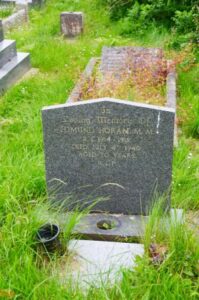
Robert Hosking, Private, 29214, Welsh Regiment. Robert was born in 1888, the son of Thomas and Margaret Hosking, of Swansea. He married Beatrice Luxton on 24 March 1915 and later that year enlisted into the 14th Battalion, Welsh Regiment (Swansea Pals). He landed in France with the Swansea Pals on 2 December 1915 and served on the Western Front until becoming ill in 1917. He was sent home for hospital treatment after being found to have contracted tuberculosis and died in Swansea on 8 January 1920. Whilst researching non-commemorated men on the Swansea Cenotaph I came across this man but he had been wrongly recorded as having died on 10 January 1921. The purchase of his death certificate and his service papers confirmed that he did die on 8 January 1920, so the details on his CWGC entry will now be changed.
Richard Thomas Hoskins, Private, 86668, Welsh Regiment. Richard was born in 1902, the son of Margaret Jane Hoskins, of 10, Woodland Terrace, Mountain Ash. He enlisted into the 1st Battalion, Welsh Regiment after the war and embarked with the battalion for service in India. Richard drowned at Ferezopore on 2 March 1920, aged just 17. His case was recently forwarded to the CWGC after I found him whilst looking through the pension records. Richard was accepted for commemoration by the CWGC on Wednesday 14 October 2020 as a result of my research. He will be commemorated on the Delhi 1914-1918 Memorial, India.
James Howells, Private, 38169, Welsh Regiment. James was the son of Hugh and Elizabeth Howells, of Waunbeddau, St. Davids. He enlisted into the Welsh Regiment on 1 June 1915 and was posted to the 9th Battalion, Welsh Regiment, which was attached to 58 Brigade, 19th (Western) Division. The division moved to France in July 1915 and James took part in its costly assault during the Battle of Loos on 25 September. By January 1916 trench life had taken its toll on his health and James was hospitalised at Rouen. He was diagnosed as having contracted tuberculosis and returned to England, dying on 11 May 1916 aged twenty. James is possibly buried in Croesgoch. His case was forwarded to the CWGC by myself on 8 July 2015 and James was accepted for commemoration on Tuesday 27 October 2015. He will be commemorated in the United Kingdom Book of Remembrance until proof of his burial can be found.
Sam Hughes, Second Lieutenant, Welsh Regiment. Sam was the son of Isaac and Selina Hughes, of Bagillt. He trained as a solicitor and was articled to Jagger & Clement Jones, of Wrexham and lived with his brother, Isaac Newton Hughes, at 53, Erddig Road. He enlisted as Private into the 15th Battalion, Royal Welsh Fusiliers and landed in France on 2 December 1915, serving at Mametz Wood the following year. On 24 January 1917 Sam was commissioned into the Welsh Regiment and was posted to the 10th Battalion, Welsh Regiment, which was attached to 114 Brigade, 38th (Welsh) Division. Sam served at Pilckem Ridge with the battalion and remained with it when the division moved to a quieter sector on the Lys to rebuild after its ordeals. Early in the morning of 6 November 1917 the battalion was in the front line in the Boutillerie sector. Sam was sent out on patrol with eight men when they were fired upon by German machine-gun fire. Hughes was killed and two of his men wounded and got lost in the darkness. They were brought back in at 7 a.m. on the following morning by a party led by Sgt James [33247] of ‘D’ Company, and ten men. Sergeant James and Private Edgar Lewis were awarded the Military Medal for this act. According to the CWGC records, Sam Hughes has no known grave and is commemorated on the Ploegsteert Memorial. I was “treating” my family to one of many battlefield tours around France some years ago when I stumbled across the grave of an unknown officer of the Welsh Regiment, with the date 5 November 1917, in Pont-du-Hem Military Cemetery, La Gorgue, Plot 4, Row D, Grave 2. When I got home I carried out some research to see who this officer could be and found it could only be one man, Sam Hughes, of Wrexham. The evidence was gathered together to prove this and, despite being turned down once, the CWGC have finally agreed that Hughes is the man buried in this grave and passed the case onto the MoD for consideration. After 8 years of waiting, on 7 March 2019 I received confirmation that the MoD has agreed with my findings and that a new headstone with Sam’s name on was eventually installed and dedicated on 10 March 2022, together with that of CSM David Jones, DCM.
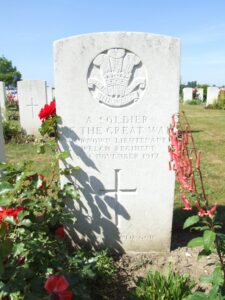
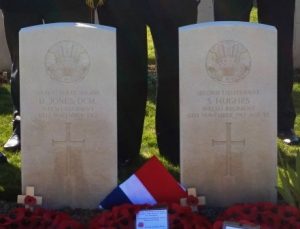
David Humphreys, Gunner, 30296, Royal Field Artillery. David was the son of Thomas and Elizabeth Humphreys, of Pontymoile, Pontypool. He worked as coal hewer prior to the war and enlisted at Newport into the Royal Field Artillery on 4 September 1914, stating previous service with the Panteg Battery, Royal Field Artillery. He served with the 26th Reserve Battery until being posted to France on 12 May 1915, joining the 96th Battery, RFA. On 11 January 1916 he was posted to B Battery, 81st Brigade, RFA and in May joined D Battery, 79th Brigade, RFA. David served throughout the Somme offensive of 1916 and on 30 October 1917 was struck in the head by a shell fragment while his battery was at Ypres. After a spell in hospital David was discharged from the army as physically unfit on 18 January 1918 due to having a fractured skull. He returned home and died at 43, Front Street, Pontymoile on 5 January 1919, aged 38. His case was forwarded to the CWGC as a result of my research and he was accepted for commemoration by the CWGC on Wednesday 17 October 2018 and David will be commemorated in the United Kingdom Book of Remembrance.
Arthur George Ireland, Sapper, 196898, Royal Engineers. Arthur was born in 1884, the son of Arthur Ireland and Emily Jane Ireland (nee Gunningham), of Somerset House, Oystermouth, Swansea. The family had moved to Ystradfodwg by 1901, and Arthur gained work there as a painter and decorator. He married Mary Palmer on 24 August 1911 and the couple set up home at 24, Syphon Street, Porth. Arthur enlisted at Porth into the Royal Engineers on 30 November 1915 and was posted to the Inland Waterways and Docks branch. He served at home until April 1917, by which time his health had begun to break down. Arthur was discharged from the army as medically unfit on 3 May 1917, after being diagnosed as suffering from tuberculosis and returned home to his wife at Porth. Sadly, his health continued to fail him, and Arthur died of tuberculosis at 12, Rickard Street, Cymmer on 16 May 1920, aged 35. His place of burial is currently unknown, so Arthur will be commemorated in the United Kingdom Book of Remembrance, at their HQ at Maidenhead, until his grave can be located. Arthur was accepted for commemoration by the CWGC on Friday 13 October 2023, after having been forgotten for over a hundred years.
Morgan Price James, Private, 14833, King’s Own Yorkshire Light Infantry. Morgan was the son of Mary Thomas, of Cilrhedyn Villa, Colbren Road, Gwaun-cae-Gurwen. His story is one of some mystery, as it has taken a lot of work to finally identify him, due to errors in official records. Morgan enlisted at Cardiff into the army, and was posted to the 7th Battalion, King’s Own Yorkshire Light Infantry. The battalion was attached to 61 Brigade, 20th (Light) Division, and moved to France in September 1915. The division was thrust into action at Fromelles within weeks of landing, before being transferred to Ypres. It remained here for several months, taking part in the Battle for Mount Sorrel, before being posted to the Somme sector in September 1916. Morgan was killed while the battalion was in the line near Ypres on 30 June 1916, while attempting to rescue a wounded comrade. The battalion must have been attacked by German flamethrowers, as an article in a local newspaper stated that a charred photograph of Morgan with his family was taken from his pocket and sent home to his mother. Morgan was 22 years old, and is buried at White House Cemetery, St. Jean-les-Ypres. He is shown on both SDGW and the CWGC website as being named James Morgan, which has made identifying him impossible, until a small article was discovered while trawling through archives of Llais Llafur. He is also incorrectly shown as serving with the 9th KOYLI, which was on the Somme when he died, so I have passed my research onto the CWGC in order to get his name and headstone corrected. Some poetry was published in his honour in the ‘Amman Valley Chronicle’ of 24 August 1916, entitled ‘Deigryn Hiraeth’, which translates as ‘A tear in grief’. (As of today, Monday 17 October 2016, his name has been corrected by the CWGC).
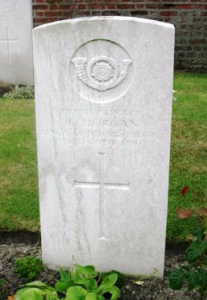
Bertie Jenkins, M22936, Royal Navy, HMS Victory II. Bertram (Bertie) was born on 15 August 1895, the son of William and Anne Jenkins, of Guildford, Burton. Bertie and his father worked at Pembroke Dockyard prior to the war, and on 19 September 1916, Bertie enlisted into the Royal Navy. After training at HMS Victory, in Portsmouth, Bertie was posted to HMS Amphitrite. HMS Amphitrite was a Diadem-class Cruisers, which had been built at Vickers Limited, Barrow in Furness and launched on 5 January 1898. At the outbreak of was she was part of the Ninth Cruiser Squadron, serving in the Atlantic. In June 1915 she was placed in reserve, but reactivated as a minelayer in 1917, which is when Bertie joined her crew. Bertie took ill with chronic bronchitis while serving aboard Amphritrite, and was hospitalised at Portsmouth. He was discharged on 14 February 1918, but died at 24, Prospect Place, Pembroke Dock of Bronchitis on 5 May 1918, aged 21. Bertie was accepted for commemoration by the CWGC on 6 April 2012. There is a headstone in Llangwm Cemetery commemorating Bertie but the burial register does not show him being interred there, so Bertie is commemorated on the Addenda Panel of the Portsmouth Naval Memorial, Hampshire. Many thanks to Richard Horton for finding Bertie’s commemorative headstone and for sending photographs of it in. Bertie’s case was unwittingly forwarded to the CWGC independently by Jonny Woodhouse and myself at the same time.
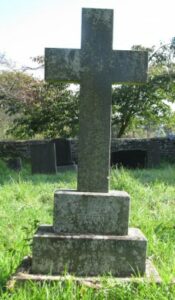
David Morgan Jenkins, Private, 213156, Royal Engineers. David was the son of Margaret Jenkins, of 77, Carmarthen Road, Swansea. He married Margaretta Brace at Llanelli on 26 September 1908 and the couple lived at 1, Waunwen Road, Swansea. David worked as a carpenter before enlisting at Swansea into the Royal Engineers on 30 November 1915, stating that he had previously served with the 7th Battalion, Welsh Regiment (Cyclists). He remained on home service with the 1/3rd Glamorgan Electric Lighting Company, Royal Engineers for the duration of the war and was discharged from Chatham on 18 January 1918 after falling ill and being diagnosed as having contracted tuberculosis. He returned home and died at 1, Waunwen Road on 22 January 1918, aged 37. His burial service was held on the following Saturday. His case was forwarded to the CWGC as a result of my research and he was accepted for commemoration by the CWGC on Friday 12 October 2018, after 100 years of being forgotten. His name will be added to the United Kingdom Book of Remembrance, until the location of his grave can be found and proven.
Evan Ivor Isaac Jenkins, Private, 5174, Welsh Regiment. Evan was the son of Isaac John Jenkins and Mary Jane Jenkins (nee Treharne), of Hillston House, 1, Clifton Terrace, Box, Llanelli. He worked as a boiler maker prior to enlisting at Llanelli into the 4th (Reserve) Battalion, Welsh Regiment on 29 October 1914. He served with the battalion at Pembroke until being transferred to the 3rd/4th Battalion, Welsh Regiment at Milford Haven on 9 November 1915. Evan became ill whilst stationed at Hearson Camp and was discharged from the army as physically unfit on 22 August 1916 after having been diagnosed as having contracted diabetes mellitus. He returned home and died at 48, Alban Road, Llanelli on 4 March 1918, aged 20. Evan is buried in the old section of Llanelli District Cemetery. His case was submitted to the CWGC as a result of my research and he was accepted for commemoration on Wednesday 5 December 2018. He was originally commemorated in the United Kingdom Book of Remembrance, but recently the location of his grave has been verified and the CWGC are in the process of installing a CWGC headstone for him.
Arthur Gwilym John, Lance Corporal, 3438, Welsh Regiment. Arthur was born on 3 April 1884, the son of Thomas and Mary John, of Roadside, Ludchurch. He married Mary Jane Gronow in 1906 and the couple resided at 106, Bonvilstone Road, Pontypridd. He enlisted at Pontypridd on 12 March 1915 into the 2/5th Battalion, Welsh Regiment, which was a reserve battalion and remained on home service throughout the war. He was discharged as medically unfit on 8 April 1916 after contracting chronic bronchitis and returned home to Pontypridd where he died on 7 March 1919 aged 34, just three days after his wife Mary died of influenza. Arthur’s case was submitted to the CWGC on 7 November 2015 and he was accepted for commemoration on Wednesday 9 December 2015. Arthur is buried in Pontypridd (Glyntaff) Cemetery.
Henry William John, Private, 529049, Labour Corps. Henry was born in 1899, the son of William John and Mary Jane John (nee Hoskins), of 18, Clifton Street, Roath, Cardiff. He worked as a Porter in Cardiff prior to enlisting in the city into the Royal Garrison Artillery on 14 February 1917 and was transferred to the infantry before being posted to Kinmel Park for training with the 64th Training Reserve Battalion. On 31 August Henry was posted to the 207th Infantry Battalion at Kinmel before being drafted to France to join the BEF on 22 March 1918, joining the Infantry Base Depot. He was deemed as being unfit for infantry work and was then transferred to the Labour Corps, first joining the 131st Labour Company, then the 729th Labour Company after the Armistice. On 26 February 1919 Henry was posted to the 380th Prisoner of War Company, serving with them for almost six months before being discharged from the army as medically unfit on 12 August 1919, having been diagnosed as suffering from tuberculosis. Henry returned home to Cardiff, before going to live with his uncle, Alfred Hoskins, at 68, The High Way, New Inn, Panteg. Sadly, his health continued to fail him, and Henry died of tuberculosis there on 14 February 1921, aged 21. His place of burial is currently unknown, so Henry will be commemorated in the United Kingdom Book of Remembrance, at their HQ at Maidenhead, until his grave can be located. Henry was accepted for commemoration by the CWGC on Friday 13 October 2023, after having been forgotten for over a hundred years.
William John, Sapper, 63065, Royal Engineers. William was the husband of Margaret John (nee Owen), of Glyn-y-Mel Road, Lower Town, Fishguard. He enlisted into the Royal Engineers on 6 March 1915 and was posted to North Wales to join the 38th Signal Company, which was attached to the 38th (Welsh) Division. The division moved to Winchester soon after William joined his unit, and it began training as a complete unit in preparation for its move to France in December 1915. On 17 September 1915 William was among a large number of men inoculated for typhoid, but within days he began to suffer from some sort of reaction and was hospitalised. He was finally discharged from the army as medically unfit on 10 May 1916, suffering from breathlessness and heart problems. He returned to Fishguard where he died on 6 May 1917, aged 31. William’s details were passed onto the CWGC on 7 November 2015 and he was accepted for commemoration on Wednesday 9 December 2015. He is commemorated on the Brookwood Memorial, as his place of burial is not known.
Ben John Jones, Private, 69527, Royal Army Medical Corps. Ben was born at St. Ishmaels, Carmarthenshire. He resided at Als Park, Pontyberem, and was a Medical Student prior to enlisting into the Royal Army Medical Corps. Ben served in Italy, before becoming ill with tuberculosis, and was admitted to Bermondsey Military Hospital on 5 September 1918. He was then transferred to Hospital at Cardiff, but returned home, where he died of Tuberculosis on 10 March 1920, aged 25. The location of Ben’s grave has not yet been identified. Ben has just been accepted for commemoration by the CWGC (Saturday 14 January 2012), and will be commemorated on the Brookwood (United Kingdom 1914-1918) Memorial.
Charles Jones, Private, 201637, Welsh Regiment. Charles was born in 1897, the son of David Thomas Jones and Hannah Jones (nee Williams), of 10, Dyffryn Road, Alltwen. He enlisted into the 4th (Reserve) Battalion, Welsh Regiment on 15 February 1916 and after completing his training was drafted out to Palestine, to join the 1/4th Battalion, Welsh Regiment, which was attached to 158 Brigade, 53rd (Welsh) Division. Charles most probably served with the battalion through the three Battles of Gaza in 1917, but by the end of that summer had become ill. He was diagnosed as suffering from tuberculosis, so was discharged from the army as medically unfit on 20 August 1917. Charles shipped back to England before returning home to Alltwen. His health waned over the coming years, and Charles died of tuberculosis at home at 10, Dyffryn Road on 10 May 1920, aged 23. His place of burial is currently unknown, so Charles will be commemorated in the United Kingdom Book of Remembrance, at their HQ at Maidenhead, until his grave can be located. Charles was accepted for commemoration by the CWGC on Friday 13 October 2023, after having been forgotten for over a hundred years.
David Jenkin Jones, Private, 26567, Welsh Regiment. David was the son of David and Catherine Jones, of 14, Exhibition Row, Llwydcoed. He worked as a coal miner prior to enlisting at Aberdare into the Welsh Regiment on 25 November 1914. He was posted to the Rhondda Battalion and trained at Porthcawl before going to Rhyl where he transferred to the 15th Battalion, Welsh Regiment (Carmarthen Pals). He did not move to Winchester with the battalion but remained at Kinmel Park with the 21st Battalion, Welsh Regiment. He became ill at Kinmel Park and was discharged from the army as medically unfit on 9 March 1916 after being diagnosed as suffering from diabetes mellitus. He returned home and died at 11, Exhibition Row, Aberdare on 4 May 1918, aged 31. David was buried in Aberdare Cemetery. His case was forwarded to the CWGC as a result of my research and he was accepted for commemoration by the CWGC on Wednesday 17 October 2018. The CWGC are in the process of verifying the location of his grave, so until then David will be commemorated in the United Kingdom Book of Remembrance.
David Thomas Jones, Driver, 29983, Royal Field Artillery. David was born in 1880, the son of Mary Ann Jones, of Barmouth. He had served in the Boer War of 1899-1902. Upon returning home he trained as a French Polisher, and lodged at Tybie Villa, Llandybie. He married Elizabeth Gwilt at Abermule on 6 May 1905. David served in France with the 37 Brigade, Royal Field Artillery, with the BEF, from August 1914 and was discharged on 23 February 1916 after being gassed and was sent to Alltamynydd Sanatorium at Llanybydder for treatment. He died of tuberculosis at his Aunt’s home at Dryslwyn on 5 July 1918, aged 38. He was buried with full military honours in Llandeilo Fawr Parish Churchyard. He will be commemorated in the United Kingdom Book of Remembrance until the location of his grave has been verified. His case was recently forwarded to the CWGC as a result of my research and he was accepted for commemoration by them on Tuesday 11 June 2019.
Edward Jones, Sergeant, 200808, Welsh Regiment. Edward was born at Dryslwyn Station, Llangathen, the son of David and Margaret Jones. He was a student at Carmarthen Training College when he enlisted on 15 October 1912 into the 4th Battalion, Welsh Regiment, which was the local Territorial unit. He didn’t serve overseas, as he was deemed to be unfit, and was discharged on 23 October 1917 as being no longer physically fit for war service. Edward died of Tuberculosis at Station House, Dryslwyn on 14 January 1918, aged 28. Edward was accepted for commemoration by the CWGC on Saturday 14 January 2012, as a result of my research and was to be commemorated on the Brookwood (United Kingdom 1914-1918) Memorial. After a lot of work I finally managed to find that Edward was buried in Llanarthne Churchyard, and the details were forwarded to the CWGC who have recently installed this headstone to commemorate him.
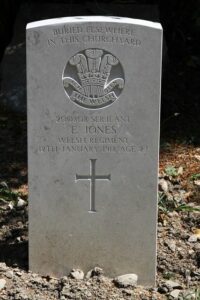
Ernest Jones, Private, G/11743, The Buffs (East Kent Regiment). Ernest was the son of Jessie Jones, of Broughton. He married Florence Myfanwy Lewis at Wrexham on 19 December 1903 and the couple moved from Wrexham to Kidderminster where Ernest worked as an assistant chemist. He enlisted into The Buffs at Mill Hill on 7 June 1916 and was posted to France on 3 June 1916, joining the 7th Battalion, The Buffs, which was attached to the 18th (Eastern) Division. Ernest served in France until 18 April 1917, when he was invalided home aboard the Hospital Ship Panama after contracting dysentery and he was invalided out of the army on 19 June 1917. Ernest and his family returned to Wrexham but his health broke down completely and Ernest was taken into the North Wales at Denbigh when his mental health also failed him. He died of general paralysis of the insane at the Asylum on 22 February 1919, aged 42. His case was recently forwarded to the CWGC as a result of my research, and he was accepted for commemoration by them on Friday 4 December 2020. He was originally commemorated in the United Kingdom Book of Remembrance, but his grave has recently been found in Wrexham Cemetery and the CWGC are in the process of erecting a CWGC headstone for him.
Francis Owen Jones, Private, 13211, Royal Welsh Fusiliers. Francis, known as Frank, was the son of Owen and Elizabeth Jones, of Llanddeiniolen, Caernarvonshire. He had moved to Llandebie at some time prior to 1911, along with his brother-in-law Owen Huxley Thomas, and his sister, Mary Eliza Thomas, and they all lived at Gwynfa, Campbell Road, Llandybie. Frank enlisted at Ammanford on 1 September 1914 into the 9th Battalion, Royal Welsh Fusiliers. The battalion moved to France in July 1915 attached to 58 Brigade, 19th Division, and moved to positions north of Loos. Frank had only been in France for three months, when ill health forced him to return home, and he died in Llandebie on 27 May 1916, aged 23. Frank was buried with full military honours in Llandebie (St. Tybie) Churchyard. Evidence of his service and death have recently been forwarded to the CWGC by myself, and Francis was accepted for commemoration by the CWGC on Thursday 12 February 2015, after almost 99 years of being forgotten. I have today, 16 April 2018, been sent this photograph of his new headstone by Dave Hanson. Seeing Francis commemorated at last on this new headstone makes all of the work worthwhile!
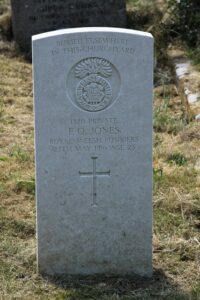
Frank Jones, Private, 12838, Royal Welsh Fusiliers. Frank was born at Openshaw, Manchester in 1886. He enlisted at Welshpool into the 9th Battalion, Royal Welsh Fusiliers and departed for France with the battalion on 19 July 1915. The battalion was attached to 58 Brigade, 19th (Western) Division and saw its first major action during a diversionary attack near Givenchy on 25 September 1915. Frank was mortally wounded during the attack and died at the 59th Field Ambulance later that day. He is buried in Vieille-Chapelle New Military Cemetery, Lacouture, France. Probate was granted to his widow, Isabella, at 21, Dawson Street, West Gorton, Manchester. For many years another soldier has been identified as being buried in that grave and Frank has not been commemorated at all, but following my research, the CWGC has today, 30 March 2016, accepted Frank for commemoration.
John Jones, Private, 72681, Royal Welsh Fusiliers. John was born in 1899, the son of Ann Harriet Jones, of Gwalchmai. By 1911 the family had moved to South Wales and were residing at 16, Henry Street, Gilfach Goch, but by November, John and his four siblings had been taken into the Bridgend Workhouse. John enlisted into the army on 12 January 1918, soon after his eighteenth birthday, and after completing his training was posted to the Royal Welsh Fusiliers. He did not get a chance to go to war, as his health began to fail him soon afterwards and on 30 May 1918 John was discharged from the army as medically unfit, after having been diagnosed with tuberculosis. He returned home to his mother, who by now had married John Owen, and was residing with him at 21, Thomas Street, Gilfach Goch. John’s health continued to fail, and he died there of tuberculosis on 13 June 1920, aged 21. His place of burial is currently unknown, so John will be commemorated in the United Kingdom Book of Remembrance, at their HQ at Maidenhead, until his grave can be located. John was accepted for commemoration by the CWGC on Friday 13 October 2023, after having been forgotten for over a hundred years.
John Evan Jones, Private, 202040, South Lancashire Regiment. John was born in 1893, the son of Ellis Jones and Elizabeth Jones, of Ty Newydd, Garnedd, Dolwyddelan. He left home as a young man and by 1915 was residing at 16, Gorsey Lane, Warrington, where he worked as an agricultural implement maker. John enlisted into the 2/4th Battalion, South Lancashire Regiment at Warrington in November 1915 and was initially placed on the Army Reserve. John was mobilised on 24 January 1916 and joined the battalion at Ashford, where it was attached to 172 Brigade, 57th (West Lancs) Division. He embarked for France with the battalion on 15 February 1917, and upon disembarking at Boulogne, the battalion entrained with the rest of the division for Bailleul, before the division moved into the Bois Grenier Sector for trench initiation and training. The division later moved to positions near Ypres, where it took part in the Second Battle of Passchendaele later that year. In 1918, the division took part in the 1918 Battle of the Scarpe, and at the Battle of Drocourt-Queant, fighting on the Hindenburg Line during the Battle of the Canal du Nord, before taking part in the Battle of Cambrai, where the Division helped capture Cambrai itself. The division continued to advance and took part in the Final Advance in Artois, before occupying Lille. John survived the war but had contracted tuberculosis by the time he was discharged from the army on 4 February 1919, and he returned home to Dolwyddelan in poor health. He died of pulmonary tuberculosis at Gwernhywel Ganol, on 1 December 1920, aged 27. His place of burial is currently unknown, so John will be commemorated in the United Kingdom Book of Remembrance, at their HQ at Maidenhead, until his grave can be located. John was accepted for commemoration by the CWGC on Friday 13 October 2023, after having been forgotten for over a hundred years.
John Morgan Jones, Lance Corporal, 19247, Welsh Regiment. John was born at Carmarthen in 1886 but by the turn of the century had moved to the South Wales valleys to find work. He married Mary Ann Morgan in 1905 and the couple set up home at 59, Victoria Street, Caerau. John worked as a coal hewer prior to enlisting into the newly raised Rhondda Battalion, Welsh Regiment soon after the outbreak of war. On 23 January 1915 John was posted to Rhyl, together with almost 400 other men of the Rhondda Battalions, and was transferred to the 15th Battalion, Welsh Regiment, which was known as the Carmarthen Pals battalion, attached to 114 Brigade, 38th (Welsh) Division. On 2 December 1915 the battalion moved to France, and the entire Division moved to the Fleurbaix sector, where it was initiated into trench warfare. During June 1916 the Division marched south to the Somme, and on 7 July 1916 attacked Mametz Wood. The initial attack failed, and it was three days later, on 10 July, that a fresh attack was mounted. After two days of heavy hand to hand fighting within the wood, the Germans withdrew, and the battered Welshmen moved via Hébuterne to Boesinghe, on the Yser Canal, where it remained over the coming months. John was discharged from the army as medically unfit on 12 June 1917 after having been diagnosed as suffering from tuberculosis and returned home to his wife Mary at Caerau. John’s health continued to fail him over the coming years, and he died of tuberculosis at the home of his brother-in-law, Thomas Morgan, at 6, Alexandra Road, Caerau on 5 May 1921, aged 35. His place of burial is currently unknown, so John will be commemorated in the United Kingdom Book of Remembrance, at their HQ at Maidenhead, until his grave can be located. John was accepted for commemoration by the CWGC on Friday 13 October 2023, after having been forgotten for over a hundred years.
John William Jones, Private, 1432, Welsh Horse Yeomanry. John was born at Oswestry in 1865. He had moved to London to work as a Dairyman as a teenager and on 16 May 1887 married Mary Jones at St Pancras where they raised two sons. He had served with the London Imperial Yeomanry at some time and travelled to Welshpool to enlist on 5 October 1915 into the Welsh Horse Yeomanry. With his previous military service, John was soon promoted to Corporal and served with the Welsh Horse on home service until being discharged as medically unfit on 25 September 1916. He returned home to his family at 1, Salisbury Parade, West Malling. John died of heart disease, which had been brought about by the strain of his military service, on 7 March 1919, aged 54. His details were passed onto the CWGC on 7 November 2015 and John was accepted for commemoration on Wednesday 9 December 2015.
Stanley Jones, Private, 13837, King’s Shropshire Light Infantry. Stanley was born on 16 October 1888, the son of William and Ann Jones, of 93, Snatchwood Road, Abersychan. He worked as a collier prior to leaving him to enlist into the Royal Navy on 15 October 1906, and was posted to HMS Impregnable at Devonport for training. Stanley then deserted from Devonport and was on the run before being apprehended on 9 October 1908. After being released from custody, he returned to South Wales and on 17 March 1909 married Sophia Jane Jones. The couple then resided at Bridgend, where their son William was born the following year. Stanley enlisted into the 9th Battalion, Welsh Regiment at Cardiff on 6 October 1914, but was then posted to Shrewsbury to join the King’s Shropshire Light Infantry. He was posted from there to the 8th Battalion, King’s Shropshire Light Infantry, which had formed in Shrewsbury the previous month, joining 66 Brigade, 22nd Division. Stanley embarked for France with the battalion in September 1915, but after only a short time on the Western Front, the 22nd Division was sent to Macedonia, arriving on 6 November 1915. It spent the remainder of the war on the Salonika front around Doiran, suffering severely from malaria as well as from its encounters with the enemy. Periods of routine trench work along the Struma or in the defences of Salonika were interspersed with some severe fighting near Lake Dorian, in February 1917 and again in September 1918. The 8th KSLI took part in the final drives against the Bulgarian army in 1918 and after the Armistice was sent to Dorian and Dedeagatch and then into Bulgaria, ending the war near Stavros. Stanley served with the battalion for the entire war and was demobilised on 6 April 1919, by which time he had contracted malaria. He returned home to Wales but sadly died of malaria at 19, Bridge Street, Pyle on 24 December 1920, aged 31. His place of burial is currently unknown, so Stanley will be commemorated in the United Kingdom Book of Remembrance, at their HQ at Maidenhead, until his grave can be located. Stanley was accepted for commemoration by the CWGC on Friday 13 October 2023, after having been forgotten for over a hundred years.
Thomas Jones, Private, 20784, Welsh Regiment. Thomas was the son of Thomas and Mary Jones, of Maldwyn House, Talybont. He enlisted at Aberystwyth on 5 March 1915 into the 15th Battalion, Welsh Regiment, which was known as the Carmarthen Pals battalion, attached to 114 Brigade, 38th (Welsh) Division. On 2 December 1915 the battalion moved to France, and the entire Division moved to the Fleurbaix sector, where it was initiated into trench warfare. During June 1916 the Division marched south to the Somme in order to capture the heavily defended Mametz Wood. At the time I originally wrote my book, Carmarthen Pals, Thomas was commemorated by the CWGC as having been killed on 1 July 1916 and I wrote in the book that it was odd that he had been killed on that date, however I later discovered his service papers which stated that he had been killed during the fighting in Mametz Wood at sometime between 10 and 11 July 1916, aged 24, so I purchased his death certificate and sent it together with his papers to the CWGC in order to get his details amended. This was completed late in 2010 and his date of death was officially accepted to be 11 July 1916. He was already commemorated on the Thiepval Memorial, so only his details needed to be amended in the CWGC Debt of Honour register.
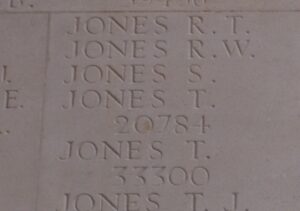
Thomas Jones, Private, 5268, Royal Welsh Fusiliers. Thomas was born in 1876, the son of William Thomas Jones and Margaret Jones (nee Williams), of Bee Hive, Brymbo. He worked as a collier prior to enlisting into the Royal Welsh Fusiliers on 27 January 1897 and was posted to Chester Barracks for training. Thomas was then posted to the 2nd Battalion, Royal Welsh Fusiliers, before being transferred to the 1st Battalion, to serve with his elder brother, Lloyd Jones. Over the coming years, Thomas continued to serve in both battalions, seeing active service in China, India and then in Malta. When war broke out, he embarked for France with the 1st Battalion, Royal Welsh Fusiliers on 6 October 1914 and saw terrible fighting with the battalion throughout the entire war. Thomas survived the war but the horrors he had seen took their toll on his mental health and after being demobilised on 21 March 1919 he was admitted to the Denbigh Asylum. Sadly, he died in the Asylum of cerebral haemorrhage and general paralysis of the insane on 30 April 1920, aged 43. His body was brought back home, and he was buried in Brymbo Churchyard. Thomas will be commemorated in the United Kingdom Book of Remembrance, at their HQ at Maidenhead, until the location of his grave can be verified. He was accepted for commemoration by the CWGC on Friday 13 October 2023, after having been forgotten for over a hundred years.
Thomas John Jones, Private, 389044, Labour Corps. Thomas was born in Blaenau Ffestiniog in 1880, the son of Griffith Jones and Ellen Jones. By 1911 he was lodging at 21, Wingfield Street, Aberfan, where he was working as a collier. He enlisted into the South Wales Borderers on 23 September 1914 and was posted from the Depot at Brecon to the newly raised 7th Battalion, South Wales Borderers, which was at Seaford, attached to 67 Brigade, 22nd Division. In December the battalion moved to St. Leonard’s in billets, then completed its training at Seaford and Aldershot before embarking for France and landed at Boulogne on 6 September 1915. The Division’s stay in France was to be very short, however, as on 27 October 1915 the Division, having been moved by train to Marseilles, began to embark for Salonika as part of an Anglo-French force sent to hold the Greek border, due to the invasion of neighbouring Serbia by a combined Austro-Hungarian force. The Division remained in the Salonika theatre for the rest of the war, taking part in the Retreat from Serbia during December 1915. Large battles were fought in August 1916, at the battle of Horseshoe Hill, then in September 1916 at the battle of Machukovo. Between 24 April and 9 May 1917, the Division fought in two large scale pitched Battles near Doiran. During October 1917 Thomas was transferred to the Labour Corps and posted to the 818th Labour Company. Thomas survived the war and was discharged from the army on 5 April 1919. He returned to South Wales, and resided with his elderly father at 20, Birchgrove, Porth. His health had been ruined by his time of war and Thomas died at the Brecon and Radnor Asylum, Talgarth, of exhaustion brought about by Bright’s Disease and Mitral Disease on 16 September 1920, aged 40. His place of burial is currently unknown, so Thomas will be commemorated in the United Kingdom Book of Remembrance, at their HQ at Maidenhead, until his grave can be located. Thomas was accepted for commemoration by the CWGC on Friday 13 October 2023, after having been forgotten for over a hundred years.
Tudor Emlyn Jones, Rifleman, S/2072, Rifle Brigade. Tudor was born at Mardy on 21 December 1892, the son of Thomas Evan Jones and Elizabeth Jones. The family later moved to 56, Byng Terrace, Brynhyfryd, Swansea. Tudor worked as an engine fitter prior to enlisting at Swansea into the 11th Battalion, Rifle Brigade on 7 September 1914. The battalion was attached to 59 Brigade, 20th (Light) Division and Tudor landed in France with the battalion on 21 July 1915. The division moved to the Fleurbaix Sector for trench familiarisation and training. When the Battle of Loos was launched on 25 September 1915 the Division fought a diversionary attack towards Fromelles. Later that year they moved north, and fought at the Battle of Mount Sorrel alongside the Canadian Corps. Tudor became ill at Ypres and was evacuated to hospital on 13 February 1916, after complaining of having bad legs and an unquenching thirst. He was diagnosed as suffering from diabetes mellitus and was discharged from the army as medically unfit on 23 May 1916. He died at 56, Byng Terrace, Brynhyfryd on 30 March 1917, aged 24 and was buried with full military honours in Cwmgelly Cemetery, Swansea. His brother, David Charles Jones, served with the same regiment and was killed at Ypres on 12 February 1916. His case was forwarded to the CWGC as a result of my research and he was accepted for commemoration by the CWGC on Wednesday 17 October 2018. The CWGC are in the process of verifying the location of his grave, so until then Tudor will be commemorated in the United Kingdom Book of Remembrance.
William Jones, Private, 2565, Welsh Guards. William was the son of Evan and Elizabeth Jones, of 9, Wellington Terrace, Rhyl. He worked as a butcher’s assistant prior to enlisting at Caterham into the Welsh Guards on 24 January 1916. He embarked at Southampton for France on 4 October 1916 and joined up with the 1st Battalion, Welsh Guards at Ypres. After two months in the sodden Flanders trenches, William was hospitalised with trench feet. He re-joined the battalion on 9 December 1916. After a week back in the trenches William took ill and was hospitalised with pleurisy. He was sent back to the Ontario Hospital, Orpington, Kent, where he was diagnosed as having contracted tuberculosis. And was discharged from the army as medically unfit on 9 April 1917. He died at West Street, Rhyl on 14 July 1918, aged 21. His case was recently forwarded to the CWGC as a result of my research and he was accepted for commemoration by them on Saturday 10 November 2018. He will be commemorated in the United Kingdom Book of Remembrance unless the location of his grave can be traced.
William John Jones, Driver, W/3765, Royal Field Artillery. William was born in 1892, the son of William and Jane Jones, of Bryn Y Mor, Borth. He lived at Gilfach Goch prior to the war, working as a bricklayer. William enlisted at Tonypandy on 23 April 1915 into the 38th (Welsh) Division Ammunition Column, Royal Field Artillery, and landed in France on 24 December 1915, joining up with the bulk of the 38th Division in the Fleurbaix sector. Very little is presently known of William, but he was discharged from the Royal Field Artillery on 11 December 1916 due to tuberculosis, and died at home in Craigfryn on 28 August 1917, aged 25. William’s case was passed onto the CWGC on 5 August 2012, and he was accepted for commemoration on Thursday 7 August 2014. He will be commemorated in the United Kingdom Book of Remembrance, although he appears to have been buried in Llandre on 1 September 1917.
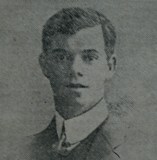
William John Jones, Private, 266570, Monmouthshire Regiment. William was from Abercarn. He married Florence Mabel Butland on 9 October 1913 and the couple resided at 7, Francis Street, Bargoed, where their two daughters were born. He worked as a collier before enlisting at Bargoed on 1 September 1914 into the 9th Battalion, Welsh Regiment. He was only in uniform for four weeks when he was discharged as medically unfit on 2 October 1914. Un-deterred he re-enlisted at Bargoed on 12 December 1915 into the 2nd/2nd Battalion, Monmouthshire Regiment. William landed in France on 11 January 1917 and was posted to the 1st/2nd Battalion, Monmouthshire Regiment. He was only in France for two months before his health began breaking down and he was sent back to England on 24 March 1917. William was discharged from the army on 27 June 1917 after having been diagnosed as suffering from tuberculosis and died at Mardy Hospital, Merthyr on 3 June 1918, aged 26. His case was submitted to the CWGC as a result of my research and he was accepted for commemoration on Wednesday 5 December 2018. He was originally commemorated in the United Kingdom Book of Remembrance but his grave has been found in Gwaelodybrithdir Cemetery.
William Llewelyn Jones, Private, 55685, Royal Welsh Fusiliers. William was born in Trawsfynydd in 1893, the son of Llewelyn and Catherine Jones. He married Blodwen Davies in 1916 whilst working in the Trawsfynydd army camp. He was conscripted at Blaenau Festiniog into the Royal Welsh Fusiliers and was posted to the 15th RWF, which was attached to the 38th (Welsh) Division. William was among a large number of casualties suffered by his battalion at Pilckem Ridge when he was killed in action at sometime between 31 July and 4 August 1917, aged 23. Probably due to a mix up in names, William has never been commemorated by the CWGC, as several men of his name, one with the same name and a similar number, were killed during the battle. Following evidence submitted by myself last year, William has been accepted for commemoration by the CWGC on 25 March 2016 and his name will be added to the Ypres (Menin Gate) Memorial.
David John Joseph, Private, R4/307951, Royal Army Service Corps. David was the son of Price Joseph and Margaret Joseph (nee Williams), of Myrtle House, Llangammarch Wells. He worked as a groom prior to enlisting into the Breconshire Constabulary as a young man and was posted at Crickhowell Police Station. David married Gertrude Elsie Jones at Abergavenny on 24 June 1913 and the couple set up home at the Police Station. David enlisted into the Army Service Corps (Remounts) at Bristol on 29 September 1915 and was posted to the Depot at Shirehampton. On 29 August 1916 he was posted to the 60th Remount Squadron at Bulford, but about six months later began suffering with his health. David was hospitalised at Bulford where he was found to be suffering from phthisis, contracted during his service, and he was discharged from the army as medically unfit on 18 June 1917, with a full pension. He returned home to his wife at Crickhowell and died there of tuberculosis on 18 February 1919. The remains of the 31-year-old were buried with his father in Llanlleonfel Churchyard, Garth. David has today, Saturday 17 December 2022, been accepted for commemoration by the CWGC, who will commemorate him in the United Kingdom Book of Remembrance at Maidenhead, until the location of his grave is verified.
Thomas John Joseph, Private, 27123, Welsh Regiment. Thomas was the son of Thomas and Mary Ann Joseph, of 50, Cwmbath Road, Morriston. He married Catherine Buckland at Swansea on 23 October 1910 and the couple had three children over the coming years. Thomas worked as a labourer prior to enlisting at Swansea into the 3rd Battalion, Welsh Regiment on 21 January 1915. On 22 April 1915 he was posted to France with the 2nd Battalion, Welsh Regiment but within a month went missing near L’Epinette on 9 May 1915 during the Battle of Aubers Ridge. He was found to be trapped in a shell-hole, wounded in the arm and was invalided to hospital at Boulogne before being sent back to England, and after a long spell in hospital was discharged from the army as medically unfit on 15 August 1916 after being diagnosed as suffering from heart disease. He died at 54, Cwmbath Road, Morriston on 17 June 1919, aged 35. His case was forwarded to the CWGC as a result of my research and he was accepted for commemoration by the CWGC on Friday 19 October 2018. His name will be added to the United Kingdom Book of Remembrance.
John Llewellyn Landeg, Private, 2544, Glamorgan Yeomanry. John was the son of David and Sarah Ann Landeg, of 11, Kendon Row, Cwmavon. He worked as a coalminer prior to the war. He enlisted at Bridgend into the 3/1st Battalion, Glamorgan Yeomanry on 31 December 1915, and after completing his training embarked for France on 4 August 1916, joining No 6 Infantry Base Depot, at Rouen. On 13 August 1916 John was posted to the 14th Battalion, Welsh Regiment, which was in positions on the Canal Bank sector, north of Ypres, attached to 114 Brigade, 38th (Welsh) Division. John was admitted to hospital on 9 March 1917, suffering from scabies, a common complaint in the trenches, but by 21 May had recovered and re-joined the 14th Welsh at Ypres. He took part in the Divisions famous assault on the Pilckem Ridge on 31 July 1917, but conditions on the battlefield were dire, and John was evacuated with trench feet on 6 August and sent to the 9th Red Cross Hospital in England. Upon his recovery, he was posted to Ripon on 12 February 1918, joining the Northern Command, Labour Corps. His health had by now failed, and on 19 March 1918 John was discharged from the army as medically unfit after being diagnosed as suffering from heart disease, brought about by exposure whilst in the trenches. He returned home, and died of heart disease at 20, Victoria Terrace, Michaelstown on 23 May 1919, aged 22. John was accepted for commemoration by the CWGC on 30 March 2021, and will be commemorated in the United Kingdom Book of Remembrance, until the location of his grave can be found and verified.
Edward Leach, Private, 2388, Montgomeryshire Yeomanry. Edward was the son of Charles and Elizabeth Leach, of Park Cottage, Leighton, near Welshpool. He worked as a cowman prior to enlisting into the Montgomeryshire Yeomanry on 7 September 1914. He served on home service with the 2nd/1st Battalion, Montgomery Yeomanry for over two years before his health began to deteriorate and he was discharged as medically unfit on 10 January 1917 after having been diagnosed with tuberculosis. He died in hospital in Newport, Monmouth on 5 September 1918, aged 23. His case was recently forwarded to the CWGC as a result of my research, and he was accepted for commemoration by them on Tuesday 25 August 2020. He will be commemorated in the United Kingdom Book of Remembrance at Maidenhead unless the location of his grave can be traced.
Thomas Lee, Private, 31731, Welsh Regiment. Thomas lived with his partner Elizabeth Ackery at Glyncorrwg and was a coalminer prior to enlisting into the 10th Battalion, Welsh Regiment on 15 July 1915. He landed in France with the battalion on 5 December that year and served through the fighting at Mametz Wood before taking ill during the winter of 1916-17. He returned home for treatment and was medically discharged from the army on 13 July 1917. He returned home to Glyncorrwg where he died on 26 February 1918 aged 38. His details were passed onto the CWGC on 7 November 2015 and Thomas was accepted for commemoration on Tuesday 8 December 2015.
George Lees, Deck Hand, 4871DA, Royal Naval Reserve. George was born on 26 August 1886, the son of George and Jane Lees, of 1, Old Pier, Stonehaven. He served at HMS Sabrina at Milford, and was attached to the crew of HM Drifter Comely Bank. George fell overboard and drowned while working the anchor on Comely Bank on 25 February 1916 aged 29. His body was recovered from the sea five weeks later, identified and buried at Milford Haven Cemetery. His grave was forgotten for many years until being recently discovered, and he was commemorated on the Portsmouth Naval Memorial, Hampshire, but a new CWGC headstone has recently been erected over his grave.
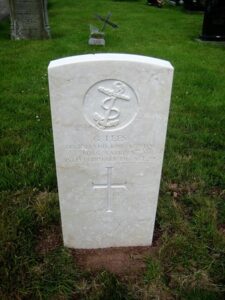
Tom William Augustus Legge, Private, 41154, East Yorkshire Regiment. Tom was the son of Tom Herbert Legge and Florence Margaret Legge, of 33, Lambert Street, Barrack Hill, Newport, Monmouthshire. He enlisted into the army on 19 June 1916 and was posted to the East Yorkshire Regiment. He served at home until his health began to deteriorate and was discharged from the army as medically unfit on 5 June 1918 after having been diagnosed with tuberculosis. He died at Newport, Monmouthshire on 5 November 1919, aged 20. His case was recently forwarded to the CWGC as a result of my research, and he was accepted for commemoration by them on Thursday 27 August 2020. Tom was originally commemorated in the United Kingdom Book of Remembrance at Maidenhead, but his grave gad recently been located in St. Woolos Cemetery, Newport, Mon.
David Spencer Lewis, Sapper, 643, Royal Engineers. David was the son of Henry and Anne Lewis, of 57, James Street, Llanelli. He was a Tinplate worker prior to enlisting at Llanelli on 14 October 1914 into the Welsh Field Company, Royal Engineers. He served for five months before falling ill and was diagnosed at Bedford Hospital as suffering from diabetes. He became very ill by the end of the year and spent some time in Cardiff Hospital before returning to Llanelli, and died at home on 11 March 1920, aged 24. His details were passed onto the CWGC on 7 November 2015 and David was accepted for commemoration on Wednesday 9 December 2015. He was buried in Llanelli District Cemetery.
Francis George Lewis, Private, 131732, Labour Corps. Francis was the son of Francis and Edith Lewis, of 8, Nelson Street, Chepstow. He worked as a baker prior to the war. He enlisted into the South Wales Borderers on 9 February 1916, but must have been medically downgraded, as he was posted to the 393rd Home Service Employment Company, Labour Corps. Francis served with the Company until his health began to fail, and he was discharged from the Army as medically unfit on 21 February 1918. He returned home to Chepstow, but died of pulmonary phthisis at 17, Nelson Street, Chepstow on 21 May 1919, aged 28. Francis was buried in Chepstow Cemetery, Monmouthshire. He was accepted for commemoration by the CWGC on 30 March 2021, and was originally commemorated in the United Kingdom Book of Remembrance, at Maidenhead. The location of his grave was finally verified in January 2022.
Jenkin Robert Lewis, Private, 28839, Welsh Regiment. Jenkin was the son of David and Catherine Lewis, of 4, Portia Terrace, Swansea. His father was a tailor and was originally from Pendine. Jenkin worked as a shop assistant prior to enlisting at Swansea into the 18th Battalion, Welsh Regiment on 12 June 1915. The battalion was a Bantam unit, attached to 119 Brigade, 40th (Bantam) Division and Jenkin landed in France with the battalion on 2 June 1916. Jenkin was not in France long as he took ill within months of landing and was evacuated to hospital in October 1916. He was discharged from the army as medically unfit on 20 November 1916 after being diagnosed as having contracted tuberculosis and returned to Swansea to live with his sister, Elizabeth Jane Hasquencort. He died of tuberculosis at her home at 66, St. Helen’s Road on 17 May 1918, aged 27. On the following month Jack Davies, a former hairdresser at Hasquencort’s barbers, was killed in France. His case was forwarded to the CWGC as a result of my research and he was accepted for commemoration by the CWGC on Friday 12 October 2018, after 100 years of being forgotten. His name will be added to the United Kingdom Book of Remembrance, until the location of his grave can be found and proven.
Robert Lewis, Aircraftman 2nd Class, 266568, Royal Air Force. Robert was born on 11 June 1900, the son of William Owen Lewis and Jane Lewis (nee Jones), of 18, Vulcan Street, Holyhead. He worked as a boot repairer prior to enlisting into the Royal Air Force on 8 July 1918, soon after his eighteenth birthday. Robert had several postings over the coming weeks as he trained as an aircraftman, then on 30 August was posted to Cranwell, before being posted to 16 Balloon Base, which was part of 72 Wing, No 9 Group. He continued to serve after the Armistice but by the summer of 1919 his health had began to deteriorate and he was discharged from the Royal Air Force as medically unfit on 9 July 1919 after being diagnosed with pulmonary tuberculosis. Robert returned home to Vulcan Street, Holyhead, where he died of tuberculosis on 27 August 1919, aged 19. His place of burial has yet to be identified. Robert was accepted for commemoration by the CWGC on Saturday 29 October 2022 and will be commemorated in the United Kingdom Book of Remembrance at Maidenhead, unless the location of his grave can be traced.
James Lightfoot, Private, 26118, Royal Welsh Fusiliers. James was born in Sale in about 1875. He married Elizabeth Jane Williams at Conway Wesleyan Chapel on 21 March 1901. He was a labourer, living with Elizabeth at 4, Bryn Bowydd, Blaenau Festiniog, who had served with the Volunteer Corps when he enlisted at Blaenau Festiniog into the Royal Welsh Fusiliers on 3 June 1915. He was posted to the 17th Battalion, Royal Welsh Fusiliers, which was training in North Wales with the 38th (Welsh) Division and embarked for France with the battalion on 4 December 1915. James served in France for a year, taking part in the divisions assault on Mametz Wood in July 1916, before his health began to fail and he was posted to the Royal Welsh Fusiliers Depot Battalion on 4 November 1916 before being transferred to the 553rd Home Service Employment Company, Labour Corps on 30 June 1917. He served at home until being discharged from the army as medically unfit on 5 September 1918. James returned to Blaenau Festiniog where he died of heart disease on 17 March 1919, aged 45. His case was recently forwarded to the CWGC as a result of my research and he was accepted for commemoration by them on Wednesday, 3 February 2021. His name will be added to the United Kingdom Book of Remembrance until his grave can be located.
William Henry Lippitt, Corporal, 60223, Welsh Regiment. William was born on 13 July 1898, the son of George James Lippitt and Margaret Ann Lippitt (nee Crockett), of Rowan’s Villa, Aberbeeg. He was studying to be a schoolteacher when he enlisted at Cardiff on 23 June 1917 into the Welsh Regiment and was posted to the 3rd Battalion, Welsh Regiment, which was attached to the Tees Garrison at Redcar. Soon after enlisting William became ill. He was sent to Redcar Military Hospital for treatment but was found to have contracted tuberculosis and was discharged from the army as medically unfit on 16 February 1918. William returned home to 23, High Street, Llanhilleth, where he died of tuberculosis on 6 July 1918, aged 19. His case was forwarded to the CWGC as a result of my research and William was accepted for commemoration on Tuesday 16 October 2018. He was originally commemorated in the United Kingdom Book of Remembrance at Maidenhead, but his grave has recently been found in Aberbeeg (Christ Church) Churchyard and the CWGC are currently in the process of manufacturing a headstone to mark it.
John Lloyd, Private, 101679, Canadian Pioneers. John Lloyd was born on 19 November 1873, the only son of Walter and Mary Lloyd, East Pool Farm, Eglwyscummin. He married Sarah Jane James of Crunwere in 1900 and the family eventually settled at Meline, Lampeter Velfrey. About 1910 John went to Alberta, Canada to work as a miner at a small, newly opened coal mine near Red Deer. On 22 February 1916 John enlisted at Edmonton, Alberta into the 66th Edmonton (Overseas) Battalion, and arrived in England on 7 May 1916. He was posted to 1st Canadian Pioneers and left for France on 5 July 1916. On 6 August 1916 he was posted to 1st Canadian Entrenching Battalion in the field. He paraded sick on 5 December 1916, suffering from exposure to shell fire on the Somme, and was hospitalised for 10 days with V.D.H. and epilepsy, before rejoining his unit. On 3 September 1917 John again reported sick at Vimy Ridge. He had severe pains in his legs and chest and was immediately sent back to base hospital. He had suffered with heart pain and palpitations for some months prior to this. After 12 days treatment at Etaples, John was evacuated to Bethnal Green Hospital for 12 days, then Bromley for 10 days, Buxton 2 months, and to Liverpool for 5 weeks. He then returned to Wetaskiwin, Alberta, Canada, where he received further treatment before being discharged from the service on 17 August 1918, with the intention to live at the GWVA (veterans home) in Edmonton. Sadly John died on Armistice Day, 11 November 1918. He is buried at Lovett, Alberta, Canada. John was accepted for commemoration on Wednesday 20 June 2012, and at the end of 2014 a new headstone was erected for him at Lovett.
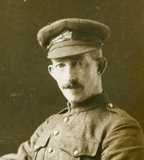
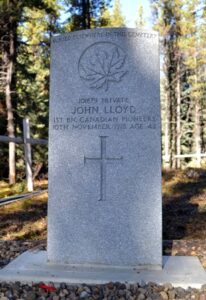
John Tyson Lloyd, Private, 435, Welsh Horse. John was the son of Peter and Ada Lloyd, of Parciau, Henllan Amgoed. He worked as a Groom for Dr. Thomas, at Hillside, Whitland prior to the war and enlisted at Cardiff on 10 September 1914 into the newly formed 1/1st Battalion, Welsh Horse Yeomanry. By early 1915 the Welsh Horse had moved to Diss, attached to the 1/1st North Midland Mounted Brigade, 1st Mounted Division. In September 1915 the Welsh Horse were dismounted and sailed from Liverpool in the S.S. Olympic on 25 September, and landed at Anzac Cove on 10 October 1915, joining the 54th Division as Pioneers. John was invalided with Gallipoli in November 1915 after taking ill, and was found to have contracted tuberculosis during the campaign. He was invalided to England, and sent to the Udal Torre Sanatorium at Yelverton, Devon for treatment. John was discharged from Udal Torre on 17 July 1916 and returned home, dying on 24 March 1917, aged 21. John’s case was submitted to the CWGC on 4 May 2013, and he was accepted as a war casualty on Friday 25 July 2014. He will be commemorated in the United Kingdom Book of Remembrance, but it is highly likely that he is buried in Henllan Amgoed.
Walter Everard Lloyd, Surgeon Lieutenant, Royal Navy. Walter was born on 7 December 1884, the youngest son of Dr. W. H. Lloyd of Llandilo. He was educated at the London Hospital, taking the diplomas of M.R.C.S. and L.R.C.P. London in 1908. Walter joined the Royal Navy on 5 November 1909, and at the beginning of the Great War was serving at Wei Hai Wei, the British Naval China Station Base. He was invalided home towards the end of the war, and died at Llandeilo on 20 March 1919, aged 34. Walter is buried at Llandilo Fawr (St Teilo) Churchyard. His case was sent in to the CWGC on 5 April 2013, and on Thursday 27 June 2013 Walter was officially accepted by them for commemoration, after 94 years of being forgotten.
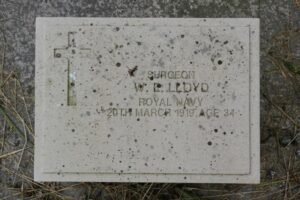
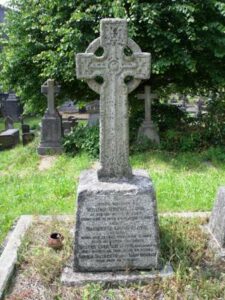
Wymond Howard Lloyd, Second Lieutenant, Herefordshire Regiment. Wymond was born on 20 March 1883, the eldest son of Mr and Mrs H. Meuric Lloyd of Delfryn, Carmarthenshire. Wymond was educated at Malvern and New College, Oxford, where he had completed two years’ residence, and was half way through his degree and studying for the Civil Service. He rowed for his college in the second eight, and was a member of the O.U.O.T.C., and so was commissioned into the Herefordshire Regiment as a Second Lieutenant in September 1914. Wymond embarked with his regiment to Gallipoli in August, 1915, and was five weeks at Suvla before contracting enteric fever and dysentery, which required his return home after many weeks in hospital. Upon his return, he was posted to Park Hall Camp, Oswestry, engaged on light duty and hoped to pass for active service at a medical board on 23 March, but on 18 March he was struck by a train while walking near the camp, and brought to Oswestry Cottage Hospital, where he died the following day, on 19 March 1916. He was 23 years of age, and was brought home to be buried with military honours in Llangadock Cemetery, on 23 March 1916. The Colonel commanding the Welsh Division Grouped Depots, T.F., wrote:- “Your son was a very fine young officer, and had gained the love and respect of all who came into contact with him, both in Gallipoli and here. I regret his loss personally, for I know what good work he was doing here in the training of the men.” Wymond was accepted for commemoration by the CWGC on 27 July 2007. Wymond’s case was put forward to the CWGC by Dave Hanson.
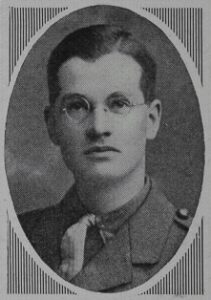
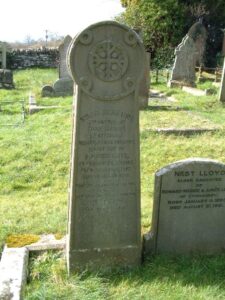
Evelyn Lovelock, Private, 60170, Cheshire Regiment. Evelyn was the son of Thomas and Sarah Ann Lovelock, of Northop, Flintshire. He worked as a coal miner prior to the war and lived with his wife Edith Lovelock (nee Bassett) at 5, Charles Street, Mold. Evelyn enlisted at Flint Castle on 7 October 1914 into the 5th Battalion, Royal Welsh Fusiliers and was posted to Egypt on 11 February 1916, joining the 1st/5th Battalion, Royal Welsh Fusiliers, which was attached to the 53rd (Welsh) Division and joined the battalion at Khatatbat. On 27 November he was admitted to hospital with flat feet and spent some time at the 26th Stationary Hospital, Ismailia before being transferred to the 2nd Garrison Battalion, Cheshire Regiment. He served in Egypt until 1 June 1917 when he was again hospitalised after taking ill and was at first diagnosed as suffering from bronchitis. On 17 August 1918 Evelyn was sent home aboard the Hospital Ship Formosat and was admitted to the Tooting Military Hospital where he was diagnosed as having contracted tuberculosis. Evelyn was discharged from the army as medically unfit on 9 November 1917 and returned home to 82, Wrexham Street, Mold, where he died of tuberculosis on 3 January 1918, aged 30. His case was forwarded to the CWGC as a result of my research and he was accepted for commemoration by the CWGC on Friday 29 November 2019. His grave has recently been found in Mold Cemetery, Flintshire and the CWGC are currently manufacturing a new headstone to mark it.
Albert Lowne, Private, 36304, South Wales Borderers. Albert was born in 1897, the son of Albert Lowne and Martha Lowne (nee Webb), of 38, Brenton Street, Limehouse, London. He worked as a builder’s mate prior to enlisting into the 14th battalion, South Wales Borderers at Stepney on 1 December 1915 and was initially placed on the Army Reserve. Albert was mobilised on 18 April 1916 and posted to Kinmel Park to join the battalion. On 27 August Albert was posted to the 3rd Battalion, South Wales Borderers at Hightown, Liverpool, then on 5 October 1916 he embarked for France, initially joining the 5th Infantry Base Depot, before being posted to the 2nd Battalion, South Wales Borderers, which was by then back on the Somme, attached to 87 Brigade, 29th Division. In the Spring of 1917 the Division fought at the Battle of the Scarpe, which was part of the Arras Offensive, seeing heavy fighting around Monchy-le-Preux, and then moved further north to Ypres, initially to hold the line whilst other units had been withdrawn for specialist training, in readiness for the Third Battle of Ypres, which opened on 31 July 1917. The 29th Division went into reserve whilst the first attacks, the Battle of Pilckem Ridge, took place, then on the night of 14-15 August the 2nd SWB moved into the line facing Langemarck, ready to launch another offensive. On the following day the battalion reconnoitred the ground in front of them, and laid white tapes in No Man’s Land, to guide the attacking troops, and at dawn on 16 August 1917 the 2nd SWB launched an attack on Langemarck. The battalion successfully took its two objectives, but had suffered 163 casualties. The Division then had another period out of the line to rest and refit before taking part in further fighting near Poelcapelle. By now Albert had begun to suffer with the physicality of life in the trenches and was transferred to the 2/70th Battalion, Labour Corps on 1 November 1917. He was then posted to the 784th Area Employment Company, Labour Corps. Soon afterwards he was diagnosed as suffering from pulmonary tuberculosis and returned to England on 6 February 1918, before being hospitalised at Eastbourne. On 18 March 1918 Albert was discharged from the army as medically unfit and was sent to a Sanatorium for treatment. His health continued to worsen over the coming months, then he was sent to the Western hospital at Fulham, where he died of tuberculosis on 7 December 1919, aged 22. His place of burial has yet to be identified. Albert was accepted for commemoration by the CWGC on Saturday 29 October 2022 and will be commemorated in the United Kingdom Book of Remembrance at Maidenhead, unless the location of his grave can be traced.
William Maloney, Gunner, 16730, Royal Garrison Artillery. William was born at Barryrow, Cork in 1885, the son of John and Ellen Maloney. He was an army reservist, but by 1903 he was living in Aberfan, working as a coal hewer, and married Ellen Condon there in 1907. The couple lived at 20, Thomas Street, Aberfan, with their twins, Ellen and John, who were born in 1909. He re-joined the colours on 7 August 1914 and was posted to the 20th Siege Battery, Royal Garrison Artillery. He served in France before being discharged from the army as medically unfit on 13 December 1915 after having been found to have contracted tuberculosis. He was sent to the Aberfan Merlyn Hospital, where he died on 23 November 1916, aged 34. William was buried in Aberfan Cemetery. His case was submitted to the CWGC in November 2016 and was originally rejected but following the discovery of more evidence, his case was resubmitted to the CWGC and he was accepted for commemoration by them on 1 July 2020. He will be commemorated in the United Kingdom Book of Remembrance unless the location of his grave is proved.
James William Manning, Private, 277854, Royal Engineers. James was the son of John and Elizabeth Manning, of Webbs Hills, Walton West. He married Dorothy Ellen Collins at Haverfordwest in 1909, and the couple resided at 28, North Crescent, Haverfordwest. James had worked as a monumental mason at Haverfordwest prior to the war and after failing a military tribunal, enlisted on 8 May 1917 into the Royal Engineers. James was posted to the 488th Field Company, Royal Engineers in February 1918, but was discharged due to ill health on 28 October 1918. James died at Haverfordwest on 13 March 1919 aged 33. It is not presently known where James is buried, but his details were passed to the CWGC on 6 February 2013, and he has been accepted for commemoration on Friday 15 August 2014. His name was originally added to the United Kingdom Book of Remembrance, but the location of his grave has recently been found in St. Martin’s Cemetery, Haverfordwest.
Harry Joseph Massey, Private, 36246, Training Reserve. Harry was born on 9 June 1879, the son of William Francis Massey and Maria Massey (nee Hollis), of 131, Frankwell, Shrewsbury. He worked as a printer in the town prior to enlisting at Shrewsbury into the 128th Company, Imperial Yeomanry on 6 January 1902, intent on serving in South Africa during the Anglo-Boer War. Harry arrived in South Africa too late to take part in the war, but remained there until 1908, when he sailed back for Britain, returning to Shrewsbury where he returned to his work as a printer. By the time that the Great War broke out, Harry was working as an engineers labourer in Burnley. He enlisted there into the Lancashire Fusiliers on 9 December 1915 and was posted to their 21st Battalion, which was a reserve battalion based at Prees Heath, in Shropshire and was attached to the 17th Reserve Brigade. On 1 September 1916 the battalion became the 72nd Training Reserve Battalion, remaining at Prees Heath. By now Harry was beginning to struggle with poor health and he was discharged from the army as medically unfit on 23 December 1916. He then went to live with his elderly father, who had by then moved to Rose Cottage, Old Church Lane, Newtown, Montgomeryshire. Harry’s health continued to fail him over the coming years and he was admitted to the Ministry of Pensions Hospital at Bangor, where he died of a combination of chronic bronchitis, dilated heart and syncope on 15 July 1921, aged 42. His father arranged for the return of his body to Newtown and Harry was buried there, in St. Michael’s Churchyard. Harry has today, Saturday 17 December 2022, been accepted for commemoration by the CWGC, who will commemorate him in the United Kingdom Book of Remembrance at Maidenhead, until the location of his grave is verified.
William Meredith, Driver, 74008, Royal Field Artillery. William was the son of Edwin and Susannah Meredith, of Commins, Trefeglwys. He worked as a collier in the Rhondda, and resided at Salisbury Terrace, Brithdir prior to the war. William enlisted into the Royal Field Artillery at Bargoed on 6 January 1915, and was posted to Preston for training. He was then posted to C Battery, 110th Brigade, Royal Field Artillery, which was attached to the 25th Division, and landed in France on 26 September 1915. The Division saw its first major action during the Somme offensive in the summer of 1916, before moving north to Ploegsteert, where it held the line for the months leading up the Battle of Messines in June 1917. After fighting at the Battle of Messines, the Division fought during the Battle of the Pilckem Ridge, before moving south again, and took up positions around Bullecourt in reserve. The Division saw heavy fighting during the German Spring offensive of 21 March 1918, before being relieved and moving north again, but was hit again when the Germans launched the second phase of their offensive along the Lys Valley. The battered Division was then moved south, to the peaceful Aisne sector to rest and refit, but on 27 May got caught up in the third, and last, phase of the German offensive, and the Division was virtually annihilated. By 25 June 1918 William had returned to England, and was attached to the 4th Reserve Brigade, Royal Field Artillery. He was demobilised after the Armistice and returned home to Trefeglwys, but his health had been ruined due to his service in the war, and William died of pulmonary phthisis at Commins on 20 July 1920. The 29-year-old was buried in St. Michael’s Churchyard, Kerry. William was accepted for commemoration by the CWGC on Friday 5 November 2021, following the submission of my research. He will be commemorated in the United Kingdom Book of Remembrance, until the location of his grave can be verified.
Milton Miller, Private, 46288, Welsh Regiment. Milton was the son of William and Emma Matilda Miller, of 7, Chamberlain Row, Eastbrook, Dinas Powis. He worked as a cement packer prior to enlisting into the 21st Battalion, Welsh Regiment at Penarth on 4 December 1915 and was posted to Kinmel Park for training. He was drafted to France on 13 December 1916, initially joining the Infantry Base Depot before being posted to the 9th Battalion, Welsh Regiment, which was in the Ploegsteert Sector, attached to 58 Brigade, 19th (Western) Division. Within four months his health had begun to suffer, due to the terrible conditions in the trenches, and Milton was invalided back to Britain to the Ontario Military Hospital at Orpington, Kent. He was diagnosed as suffering from nephritis and on 3 October 1917 was discharged from the army as medically unfit. Milton returned home, but his health continued to fail and he eventually died of nephritis at the King Edward VII Hospital on 9 June 1920, aged 39. Milton was buried in the Churchyard of St. Andrew’s Major, Glamorgan. Milton was accepted for commemoration by the CWGC on Friday 5 November 2021, following the submission of my research. He will be commemorated in the United Kingdom Book of Remembrance, until the location of his grave can be verified.
Domingo Mobile, Able Seaman, Mercantile Marine. Domingo was a Venezuelan who served with the Mercantile Marine aboard the S.S. Sofie, a London registered merchant steamer. On 2 February 1918 she was en route from Jersey to Cardiff in ballast when she was attacked in the Bristol Channel by the German submarine U-101. She was sunk by gunfire from the surfaced U-Boat with the loss of eight lives. Domingo was 39 years old when he died during the attack. His bullet-ridden body was discovered in a lifeboat which had washed ashore on Laugharne Sands, and he was buried in St. Martin’s Churchyard, Laugharne on 13 February 1918. Domingo was originally commemorated on the Tower Hill Memorial, London, but as a result of my research and the presentation of the evidence from myself to the CWGC on 4 May 2017 a Special Memorial was erected in the Churchyard at Laugharne.

William John Moore, Shoeing Smith, 121175, Royal Field Artillery. William was the son of George Frederick and Louisa Moore, of 70, Barn Street, Haverfordwest. The family moved to 40, St. John’s Street, Ogmore Vale prior to the war, where William found work as a blacksmith. William enlisted at Cardiff into the Royal Field Artillery on 8 November 1915and after completing his training was granted the rank of Shoeing Smith, before embarking for France on 22 November 1915. William served on the Western Front for the remainder of the war, but by the time he was discharged from the army on 4 September 1919, his health was beginning to fail and he was diagnosed as having contracted tuberculosis. William returned home to Ogmore Vale eventually and died of tuberculosis at home there on 26 June 1921, aged 27. William was accepted for commemoration by the CWGC on Friday 5 November 2021, following the submission of my research. He will be commemorated in the United Kingdom Book of Remembrance, unless the location of his grave can be identified.
Alfred Morgan, Private, 60203, Monmouthshire Regiment. Alfred was the son of James and Elizabeth Morgan, of 22, Bryntaf, Aberfan. He enlisted into the army and was posted to the Monmouthshire Regiment. Alfred served until his health broke down and he was discharged from the army after being diagnosed with tuberculosis. He died at Aberfan on 24 October 1920, aged 23. His case was recently forwarded to the CWGC as a result of my research, and he was accepted for commemoration by them on Thursday 27 August 2020.
Edwin Morgan, Able Seaman, 184874, Royal Navy. Edwin was born on 29 August 1877, the son of Henry and Ann Morgan, of 78, City Road, Haverfordwest. On his 18th birthday, on 29 August 1895, he enlisted into the Royal Navy for 12 years, and was posted to HMS Northampton. Over the following years he served aboard a multitude of ships, including HMS Revenge, Britannia, Majestic, Caesar and Minotaur, before completing his service on 29 August 1907. Edwin must have enjoyed life at sea, as he remained in the Royal Navy, and by the outbreak of war was back serving aboard HMS Britannia. He served at sea for a further two years during the war, but was discharged on 13 June 1916 after becoming ill, and was diagnosed with Pulmonary Tuberculosis. He died at Haverfordwest on 5 June 1917, aged 39, and was buried in St. Martin’s Cemetery, Haverfordwest. Edwin’s case was passed to the CWGC in August 2014, and he has been accepted for commemoration on Saturday 31 January 2015. His name will be added to the United Kingdom Book of Remembrance until the location of his grave has been verified by the CWGC.
William David Morgan, Private, 29412, Duke of Cornwall’s Light Infantry. William was the son of William and Margaret Morgan, of 23, Port Tennant Road, Swansea. He enlisted into the Duke of Cornwall’s Light Infantry on 26 April 1915 and served in France from 16 July 1915 with their 1st Battalion. He served in France for almost three years before taking ill and after being diagnosed as suffering from tuberculosis, was discharged from the army as medically unfit on 16 September 1918. William returned home to Swansea, where he died of tuberculosis on 26 July 1919, aged 23. His case was recently forwarded to the CWGC as a result of my research, and he was accepted for commemoration by them on Thursday 27 August 2020.
Plaskitt Charles Morris, Private, 68138, Machine Gun Corps. Plaskitt was born in Cwmyoy, Monmouthshire in 1896, the son of William and Elizabeth Morris, of Noyadd Farm. He worked as a shepherd for his father prior to the war. Plaskitt enlisted into the 3rd Battalion, South Wales Borderers at Abergavenny on 30 May 1916, but was placed on the Army Reserve. He was mobilised on 29 August 1916 and joined the 3rd SWB at Hightown, where it formed part of the Mersey Garrison. Plaskitt trained as a machine-gunner, and on 21 November 1916 was transferred to the Machine Gun Corps, and on 13 July 1917 embarked for France after being posted to the 31st Battalion, MGC, which was attached to the 31st Division. He saw his first major action when the Division was caught up in the heavy fighting which followed the German Spring offensive of 21 March 1918, and later that year took part in the great advance which ultimately won the war. Plaskitt was discharged from the army as medically unfit on 9 December 1918 after falling ill and being diagnosed as having contracted tuberculosis. He returned to Cwmvoy, where he died of tuberculosis on 14 April 1919, aged 21. He was buried in St. Martin’s Church, Cwmvoy. Plaskitt was accepted for commemoration by the CWGC on 30 March 2021, and will be commemorated in the United Kingdom Book of Remembrance, until the location of his grave can be found and verified.
William Henry Morris, Sergeant, 2789, Royal Field Artillery. William was born at Maesteg in 1879, the son of Morris and Elizabeth Morris. He resided with his sister Elizabeth and her husband Owen Phillips, at 23, Quay Street, Ammanford prior to the war, working as a collier in one of the local mines. He enlisted at Ammanford into the Royal Field Artillery on 1 September 1914 and was posted to France with C/65th Battery, Royal Field Artillery on 30 May 1915. On 20 January 1916 William was posted to the Mediterranean, but after six months there he returned home ill. William was discharged from the army as medically unfit on 15 August 1916. He died on 15 July 1919, aged 41, as a result of illness brought on by his war service. His case was forwarded to the CWGC as a result of my research and he was accepted for commemoration by them on Tuesday 4 February 2020.
James Murphy, Sapper, 62479, Royal Engineers. James was the son of Patrick and Mary Murphy, of 193, Dock Street, Newport, Mon. He worked as a plumber and gasfitter at Caerleon prior to enlisting into the Royal Engineers at Newport on 4 January 1915 and was posted to Porthcawl to join the 123rd Field Company, Royal Engineers. The Company then moved to Deganwy to join the 38th (Welsh) Division. Just before the 38th (Welsh) Division embarked for the Western Front, James took ill and was hospitalised at Bangor on 30 December 1915 where he was found to be suffering from tuberculosis. He was discharged from the army as medically unfit on 17 February 1916 and returned home to Caerleon. Unfortunately his health continued to fail and James died of tuberculosis at 54, Fair Oak Avenue, Newport on 11 July 1921, aged 41. He was accepted for commemoration by the CWGC on Saturday 6 November 2021 as a result of my research. He will be commemorated in the United Kingdom Book of Remembrance until the location of his grave can be found.
Sidney Joseph Murphy, Able Seaman, Z/1545, Royal Naval Volunteer Reserve. Sidney was born on 31 May 1892, the son of Daniel and Catherine Murphy, of 38, Brynmelin Street, Swansea. He enlisted into the Royal Naval Volunteer Reserve on 6 July 1915 and was based at Blandford before being posted to Gallipoli in October to join Hood Battalion, Royal Naval Division. He took part in the evacuation from the Peninsula within weeks of landing and moved to France with the battalion the following year. Sidney fought on the Somme with the Royal Naval Division during the winter of 1916 and the following year was shot in the leg. He was invalided via Camiers to the 2nd General Hospital at Manchester for treatment. After a spot of leave he re-joined his battalion in France at the end of July 1917. He was hospitalised again early in January 1918 and was diagnosed as suffering from shell-shock, which is not surprising. After receiving treatment, he rejoined Hood Battalion, but was gassed soon afterwards and invalided home again. Sidney was invalided out of the RNVR in February 1919 and returned to Swansea, dying of tuberculosis at his parents home on 30 November 1919, aged 27. He was buried in Danygraig Cemetery, Swansea. His death was deemed to have been brought on by his being gassed. His case was forwarded to the CWGC as a result of my research and he was accepted for commemoration by them on Thursday 3 January 2019. He will be commemorated in the United Kingdom Book of Remembrance until the location of his grave is verified.
John O’Brien, Lance Corporal, 448149, Royal Engineers. John was born in Llanelli in 1893, the son of Celia O’Brien, of 5, Dock Terrace. He was a tin worker prior to enlisting at Llanelli into the Welsh Field Company, Royal Engineers on 1 May 1914. He did not embark for overseas service with the 53rd (Welsh) Division, but joined the division in October 1915 on the Gallipoli Peninsula. He served on the Peninsula until the evacuation to Egypt and then took part in the Palestinian campaign before falling ill after contracting malaria, and was soon diagnosed as having contracted tuberculosis. John remained on home service before being discharged due to ill-health on 12 January 1918 and was sent to a sanatorium for treatment. He died of tuberculosis at Llanelli on 3 February 1919, aged 26 and was buried with full military honours somewhere in the town. His case was recently forwarded to the CWGC as a result of my research, and he was accepted for commemoration by them on Thursday 27 August 2020.
Jerome O’Leary, Rifleman, 1789, Monmouthshire Regiment. Jerome, who was also known as Jeremiah, was the son of Michael and Kate O’Leary, of Albion House, Albion Square, Chepstow. He worked as a painter prior to enlisting at Chepstow into the Monmouthshire Regiment on 15 January 1914. Jerome served at home for just under a year before his health deteriorated and he was discharged from the army as medically unfit on 14 January 1915 after having been diagnosed as having contracted tuberculosis. He suffered for years with his health before dying of tuberculosis at 14, Welsh Street, Chepstow on 31 May 1919, aged 24. An elder brother, Timothy, was killed in 1915 while another brother, William Michael O’Leary also served and died in 1915 but is not commemorated by the CWGC. Jerome’s case was recently forwarded to the CWGC as a result of my research and he was accepted for commemoration by them on Friday 12 April 2019. He will be commemorated in the United Kingdom Book of Remembrance unless the location of his grave can be traced. His brother Michael’s papers do not show his death to be service related.
Daniel Owen, Rifleman, 2762, London Regiment. Daniel was born at Llanberis in 1897, the son of Reverend Pierce Owen and Margaret Owen. The family later moved to Clywedog, Rhewl, near Ruthin. Daniel left home as a young man to be educated at Christ Hospital School, West Horsham, Sussex, where he served for three years in the OTC. Upon leaving school, Daniel gained work as a tax collector in London. He enlisted into the 5th City of London Rifles at 130, Bunhill Row, EC on 20 September 1915 and was posted to the 2/5th Battalion, London Rifle Brigade. Daniel never served abroad, as his health deteriorated over the coming months and after a spell in the County of London War Hospital at Epson, he was diagnosed as having contracted tuberculosis. Daniel was discharged from the army as medically unfit on 31 March 1916 and returned to his work as a tax collector. Unfortunately his health continued to fail, and Daniel was forced to return home to his parents at Rhewl after the Armistice. He died of tuberculosis at Clywedog on 3 January 1921. The 24-year-old was buried in Rhewl Chapel Cemetery. Daniel has today, Thursday 10 November 1922, been accepted for commemoration by the CWGC as a result of my research. He will be commemorated in the United Kingdom Book of Remembrance at Maidenhead until the location of his grave is verified.
Isaac Owen(s), Private, 2820, South Wales Borderers. Isaac was the son of Hugh and Ann Owen(s). The family was originally from Llangwyryfon, but by 1911 had moved to Gwynfryn House, New Road, Seven Sisters. Isaac married Minnie Turner, the daughter of George and Charlotte Turner, of Chirk, at Chirk in 1912. Isaac volunteered to serve with the Brecknock Battalion, South Wales Borderers and was posted to Pembroke Dock with their 2nd/1st Battalion soon after the outbreak of war. He became ill and died at Pembroke Military Hospital of TB on 23 September 1915, aged 24. Isaac has today, Tuesday 7 February 2017, been accepted for commemoration by the CWGC as a result of my research. His last resting place is not currently known, so Isaac will be commemorated in the United Kingdom Book of Remembrance.
Matthew Pate, Private, 28805, Royal Welsh Fusiliers. Matthew was the son of John and Mary Pate, of 3, Parry Street, Ton Pentre. He worked as a coalminer prior to enlisting at Pentre into the 19th Battalion, Royal Welsh Fusiliers on 12 April 1915 and was posted to Colwyn Bay to join the battalion. The battalion was originally attached to the 38th (Welsh) Division, but in September 1915 moved to Aldershot to join 119 Brigade, 40th (Bantam) Division. On 1 June 1916 Matthew embarked for France with the battalion, which moved to positions around Lillers with the 40th Division before taking over the North Maroc Sector, near Loos, for trench initiation. Matthew was attached to the 173rd Tunnelling Company, Royal Engineers for over two months, before re-joining the 19th Royal Welsh Fusiliers on 14 September. He then suffered a spell in hospital with scabies, a common problem in the trenches, but had received before the Division moved south to the Somme to take part in the Battle of the Ancre, remaining in the sector over the winter. In March 1917 the Germans withdrew to their shortened line, called the Hindenburg Line, and the 40th Division was among the units which followed the withdrawal. Later in the year the Division took part in the Battle of Cambrai and launched an attack on Bourlon Wood on 23 November 1917. The attack was carried out by 119 Brigade, led by the 12th SWB and 19th RWF. The 17th Welsh was in support for the initial assault, but was soon ordered to advance, to support the two attacking battalions. Heavy fighting raged within the wood over the coming days, with the 18th Welsh also being thrown forwards into the fight, and the Division suffered terribly. Matthew survived the horrors of Bourlon Wood, but its effects made him go absent without leave. Upon his capture he re-joined the battalion, but on 6 February 1918 the battalion was disbanded and Matthew was transferred to the 17th Battalion, Royal Welsh Fusiliers, which was attached to 115 Brigade, 38th (Welsh) Division, which was in the Sailly-sur-la-Lys sector. The Division moved to positions north of Albert, at Bouzincourt Ridge, at the end of March 1918, relieving the battered 2nd and 47th Divisions. It held this sector, again carrying out minor operations and trench raids, over the coming months. Matthew’s health had by now begun to break down and he was transferred to the 173rd Company, Labour Corps. He was then hospitalised at the 5th General Hospital at Rouen, where he was diagnosed as suffering from endocarditis. Matthew was not discharged from the army until 16 January 1919, by which time his extra service had done irreparable damage to his heart. He returned home but died of died of heart disease at 2, King Street, Gelli on 31 December 1920, aged 26. Matthew was accepted for commemoration by the CWGC on Friday 5 November 2021, following the submission of my research. He was commemorated in the United Kingdom Book of Remembrance, but his grave has recently been located in Treorchy Cemetery, Rhondda, and the CWGC are in the process of manufacturing a headstone.
Joseph Edward Pearce, Sergeant, TR5/8871, Northumberland Fusiliers. Joseph was born in 1881, the son of Charles and Hannah Pearce, of Sully, Cardiff. He married Alice Griffiths at Sully Parish Church on 26 May 1904, and the couple had three children over the coming years. Joseph was the Manager of the Charing Hotel at Cardiff for several years prior to the war, and enlisted at Cardiff into the 52nd Graduated Battalion, Training Reserve on 10 December 1915. He was initially placed on the Army Reserve, but was mobilised on 20 September 1916, joining the battalion at Rugeley Camp. Joseph was then posted to the Royal Field Artillery, and trained as a Gunner, before being posted back to the Training Reserve, and in March 1917 was attached to the 490th Home Service Employment Company, Labour Corps. He had been medically downgraded as unfit for infantry duty and remained in Britain for all his time in khaki, before taking ill in January 1918 and being hospitalised with chronic bronchitis. Upon recovering, he was posted to the Depot Battalion of the Northumberland Fusiliers. Joseph was discharged from the army as medically unfit on 31 December 1918 and returned home to Cardiff, but his health worsened, and he was taken to Glan Ely Hospital, where he died of pulmonary tuberculosis and heart failure on 3 September 1919, aged 38. He was accepted for commemoration by the CWGC as a result of my research on 6 July 2021 and will be commemorated in the United Kingdom Book of Remembrance at Maidenhead, until the location of his grave can be located.
Ismael Peregrine, Seaman, J77874, Royal Navy. Ismael was born at Pwll on 10 August 1899, the son of Evan and Catherine Peregrine. He served with the Royal Navy, but died of tuberculosis at Bay View, Pwll on 30 December 1918, aged 19. Ismael’s grave has just been traced to Pwll (Bethlehem) Baptist Chapelyard, but I am presently trying to locate the burial registers, so that proof can be forwarded to the CWGC. Ismael has been accepted for commemoration by the CWGC on Wednesday 28 November 2012, and his name will be added to the Addenda Panel of the Plymouth Naval Memorial, Devon, unless proof of his burial can be found.
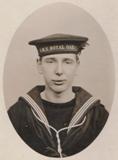
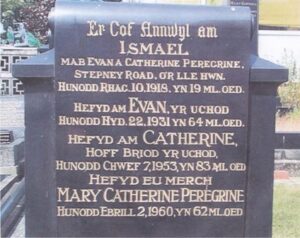
Robert Percival Perkins, Private, 14716, Durham Light Infantry. Robert was born on 30 June 1887, the son of Robert and Sarah Perkins, of Black Hole, Snailbeach, Minsterley, Shropshire. He had lived at Ruabon for several years prior to moving to Bishop Auckland to work as a waggoner just before the outbreak of war. Robert enlisted at Bishop Auckland into the 14th Battalion, Durham Light Infantry on 8 September 1914. The newly raised battalion moved to Aylesbury to join 64 Brigade, 21st (Light) Division and on 11 August 1915 landed at Boulogne. The Division’s first experience of battle was calamitous, being in France for only a few days, lengthy forced marches brought it into the reserve for the British assault at Loos, where it was sent into action on 26 September, and suffered over 3,800 casualties for very little gain. Robert, however, had not embarked for France with the Division, as his health had begun to suffer, and he had been hospitalised at Aylesbury. He was diagnosed as suffering from tuberculosis and was sent to the Hermitage Sanatorium on the Isle of Wight for treatment. Robert was discharged from the army as medically unfit on 29 October 1915 and upon being discharged from hospital moved to Chester-le-Street, County Durham. He then moved to live with his sister at 2, Chapel Street, Wrexham and died there of tuberculosis on 9 April 1920, aged 32. Robert was accepted for commemoration by the CWGC on Friday 5 November 2021, following the submission of my research. He will be commemorated in the United Kingdom Book of Remembrance, unless the location of his grave can be identified.
Alfred James Powell, Private, 267678, Monmouthshire Regiment. Alfred was the son of Thomas and Emma Jane Powell, of 44, Charles Street, Abertysswg. He worked as a collier prior to enlisting into the Monmouthshire Regiment at Porth on 8 August 1913. The regiment was a Territorial Army unit, so Alfred would have taken part in two annual TA summer camps prior to the outbreak of war. Alfred embarked for France on 7 December 1915 and was posted to the 3rd Battalion, Monmouthshire Regiment, which was by then the Pioneer Battalion to the 49th (West Riding) Division. He joined the battalion in billets at Reitveld soon afterwards. In February 1916 the Division moved south to the Somme, but soon in May 1916 Alfred transferred to the 2nd Battalion, Monmouthshire Regiment, which had joined the newly arrived 29th Division, a battle hardened unit which had seen extensive service at Gallipoli. Alfred probably saw action during the Divisions famous assault on Y-Ravine during the opening day of the Battle of the Somme on 1 July 1916. He survived the carnage of Y-Ravine, but was taken ill and invalided home to Britain in October 1916, where he was treated for pneumonia at Netley Military Hospital. His health had by now been broken by his time on the Western Front, and Alfred was deemed as being unfit for further front-line service. He was discharged from the army as medically unfit on 17 January 1919 and returned home. Alfred married Mena Smith, of Treharris, soon after gaining his discharge. His health continued to wane though and he died of heart disease at Swansea Hospital on 15 June 1921, aged 29. He was accepted for commemoration by the CWGC on Saturday 6 November 2021 as a result of my research. He will be commemorated in the United Kingdom Book of Remembrance until the location of his grave can be found.
William Preece, Private, 22261, South Wales Borderers. William was the son of Alice Preece, of 6 Hamilton Street, Pentrebach, Merthyr Tydfil. He worked as a coal miner prior to enlisting at Merthyr into the South Wales Borderers on 17 April 1915. William was posted to the 11th Battalion, South Wales Borderers, which was training in North Wales as part of the 38th (Welsh) Division. The division moved to France in December 1915 and William was posted to join the battalion on 18 January 1916 when it was in the trenches near Fleurbaix. On 10 February 1916 William was in trenches near Neuve Chapelle when the line was shelled by German trench mortars. William and four other men of D Company were wounded by the shelling and evacuated to hospital, where William’s wounds were found to be severe, suffering shrapnel in his neck, hand arm and left leg. The wounds in his thigh proved to be the worst and William spent almost a year in hospital before being discharged from the army as medically unfit on 26 July 1917. He returned home to Merthyr where he died as a result of his wounds on 5 March 1919, aged 27. His case was recently forwarded to the CWGC, and he was accepted by them for commemoration on Thursday 4 February 2021. He will be commemorated in the United Kingdom Book of Remembrance unless the location of his grave can be found.
Evan William Price, Private, 267516, Monmouthshire Regiment. Evan was the son of William and Charlotte Price, of Pencoylan, Beulah. He enlisted into the 2/1st Brecknockshire Battalion, South Wales Borderers at Brecon on 19 October 1914. In April 1915 the battalion moved to Dale, as part of the Milford Haven defences and at the end of 1915 moved to Bedford to join the 68th (2nd Welsh) Division. Evan then transferred to the Monmouthshire Regiment and was drafted to France on 30 July 1916, joining the 1/2nd Battalion, Monmouthshire Regiment, which was by then the Pioneer Battalion to the 29th Division. The Division had suffered heavy losses during the opening day of the Somme offensive, during its assault on Y-Ravine, and was then pulled out of the line to rest and rebuild before moving back into the line and taking part in the latter stages of the Somme offensive. Evan took ill during his first winter in France and was evacuated home after contracting enteric fever. He was sent to the 2nd Western General Hospital at Manchester where he was also found to be suffering from pthisis and on 10 April 1917 was discharged from the army as medically unfit. Evan returned home to Beulah, where he died of tuberculosis on 7 October 1917, aged 19. Evan is currently commemorated on the Brookwood 1914-1918 memorial in Surrey, but during recent research I was lucky enough to find proof of his burial in Eglwys Oen Duw Churchyard, at Beulah which has now been forwarded to the CWGC in order for them to investigate and manufacture a headstone.
William Price, Private, 8477, South Wales Borderers. William was the son of James and Elizabeth Price, of Abergavenny. He lived with his brother James at 8, Regent Street, Abergavenny prior to enlisting into the South Wales Borderers on 17 July 1904. He served with both the 1st and 2nd Battalions during the coming years, seeing service in India, South Africa and China, where he took part in the famous landing of the 2nd Battalion, South Wales Borderers at Lao Shan Bay in September 1914. He then took part in the battalions landing on Gallipoli on 25 April 1915 and on 8 May 1915 was shot in the back. He was hospitalised at Intarfa Hospital at Malta before being posted to Valetta Hospital, where he worked for several months before taking ill and returning to England on 24 November 1916 aboard the Hospital Ship Dover Castle. He was discharged from the army as medically unfit on 8 January 1917 after having been diagnosed as having contracted tuberculosis and returned home before being sent to Beechwood House, Hospital at Newport, where he died of tuberculosis on 13 October 1917, aged 31. His case was forwarded to the CWGC as a result of my research and he was accepted for commemoration by them on Wednesday 14 November 2018. His grave has been located in Abergavenny Old Cemetery and the CWGC are in the process of erecting a Special Memorial there to commemorate him.
Frank Probert, Gunner, 19995, Royal Field Artillery. Frank was born in 1892, the son of John and Mary Probert, of Smithfield, Coedkernew, Newport. He worked as a signalman for the GWR prior to enlisting at Newport into the Royal Field Artillery on 5 September 1914 and was posted to No. 2 Depot. He was posted to France to join the 12th Brigade Ammunition Column on 1 June 1915 and served on the Western Front until 10 October 1917, when his health had begun to break down due to recurring chest problems. Frank was diagnosed as having contracted tuberculosis and was discharged from the army as medically unfit on 31 December 1917. He died of phthisis and cardiac failure at home on 17 April 1919, aged 26. His case was recently forwarded to the CWGC as a result of my research, and he was accepted for commemoration by them on Thursday 27 August 2020. His brothers, George and Thomas also died as a result of the war, but were uncommemroated, although Thomas died just after the cut-off date for commemoration and George has just been commemorated (see below).
George Probert, Driver, 740052, Royal Field Artillery. George was born in 1893, the son of John Probert and Mary Probert (nee Goggin), of Smithfield Cottages, Coedkernow, near Newport. He worked as a farm labourer prior to enlisting into the Royal Field Artillery and was drafted to France on 24 November 1915, with a Territorial Army Battery. George served on the Western Front for the remainder of the war, but it had ruined his health and he had contracted tuberculosis by the time he was discharged from the army on 26 March 1919. George returned home to his parents home at Smithfield Cottages, but sadly died of tuberculosis there on 13 June 1921, aged 27. He was buried in Coedkernow Cemetery, Monmouthshire soon afterwards. George has today, Saturday 17 December 2022, been accepted for commemoration by the CWGC, who will commemorate him in the United Kingdom Book of Remembrance at Maidenhead, until the location of his grave is verified. His two brothers, Frank and Thomas also died as a result of their service during the war, and were also forgotten. Like George, Frank has recently been accepted for commemoration by the CWGC, but Thomas died just after the cut-off date for commemoration. Frank is the only one of the three brothers to be commemorated on their local war memorial at Coedkernow.
Edgar Protheroe, Able Seaman, Z/1058, Royal Naval Volunteer Reserve. Edgar was born at Mumbles on 24 May 1892. He married Nellie Hill in 1910 and the couple lived at 103, Rodney Street, Swansea. Edgar enlisted into the Royal Naval Volunteer Reserve on 21 May 1915 and trained at HMS Victory before being posted aboard the antiquated pre-dreadnaught battleship HMS King Edward VII. He was aboard the ship when she struck a mine and sunk en-route to Belfast on 6 January 1916 and was rescued before being posted aboard the armed merchant cruiser HMS Gloucestershire. Edgar became ill soon afterwards and was discharged from the RNVR after being diagnosed as suffering from mitral sterosis. He returned home to Swansea where he died on 16 October 1919, aged 29. He was buried in Danygraig Cemetery, Swansea. His case was forwarded to the CWGC as a result of my research and he was accepted for commemoration by them on Thursday 3 January 2019. He will be commemorated in the United Kingdom Book of Remembrance until the location of his grave is verified.
Brinley Pugh, Private, 84422, Cheshire Regiment. Brinley was born in 1900, the son of George Pugh and Jemima Pugh (nee Thomas), of 95, School Street, Llanbradach. He had enlisted into the Training Reserve early in 1918 and was posted to one of their battalions affiliated to the Cheshire Regiment. Brinley was too young to embark for overseas service, not turning eighteen until after the Armistice. By now his health had been ruined by his military service and he was found to have contracted tuberculosis. As a result Brinley was discharged from the army as medically unfit on 16 October 1919 and returned home to Llanbradach. He married Elsie Mary Hannah Morgan in the autumn of 1920 and the couple set up home together at 69, School Street, Llanbradach. Sadly his health continued to wane and Brinley eventually died of tuberculosis at 69, School Street on 23 May 1921, aged 20. He was buried soon afterwards in St. Martin’s Churchyard, Caerphilly. Brinley has today, Saturday 17 December 2022, been accepted for commemoration by the CWGC, who will commemorate him in the United Kingdom Book of Remembrance at Maidenhead, until the location of his grave is verified.
Thomas Arthur Edward Pugsley, Gunner, W/4968, Royal Field Artillery. Thomas was the son of James Parish and Mary Jane Pugsley, of 62, Avondale Street, Ynysboeth. He worked at Penrhiwceiber Colliery prior to enlisting at Mountain Ash into the 38th (Welsh) Division Artillery, and was posted to France with the division on 23 December 1915. He was wounded on the Somme in 1916, probably during the Mametz Wood assault, and was invalided to Aberdeen Hospital. He returned to France and was posted to Y/17th Trench Mortar Battery, Royal Field Artillery, which was attached to the 17th (Northern) Division. He re-joined the division in time to take part in the Battle of Arras, where the division helped captured Roeux. The division then moved north and took part in the First and Second Battles of Passchendaele. By March 1918 the Division was on the Somme, and came under attack during the German spring offensive, which was launched on 21 March 1918. The 17th Division was by then attached to V Corps of the Third Army and saw heavy fighting around Flesquières over the coming days. Thomas was killed in action during the retreat which followed, on 25 March 1918, aged 21. He has been forgotten for almost 100 years, until being accepted for commemoration by the CWGC on Tuesday 23 January 2018. His name will be added to the Addenda Panel of the Arras Memorial, France.
Reuben Maurice Ravenhill, Private, 8543, Gloucestershire Regiment. Reuben was born in 1889, the son of Charles Ravenhill and Lucy Ann Ravenhill, of Rosemary Lane, Tidenham, near Chepstow. He was a regular soldier who had enlisted into the army as a young man and by 1911 was serving in Malta with the 2nd Battalion, Gloucestershire Regiment. When war broke out, the battalion was stationed at Tientsin, in China, then in September sailed for Britain. Disembarking at Southampton, the battalion entrained for Winchester to join 81 Brigade, 27th Division and then on 18 December 1914 landed with the division at Le Havre, before entraining for Flanders, where it fought at the Action of St Eloi, and at The Second Battle of Ypres. In November 1915 the Division moved to Salonika, where it remained for the duration of the war. Reuben survived the war but by the time he had been discharged from the army on 28 July 1919, he had contracted tuberculosis. He returned home to Tidenham where he gained work as a horse keeper, but his health continued to fail until he died of tuberculosis at the Infectious Diseases Hospital, Gloucester. The body of the 31-year-old was buried in St. Mary and St. Peter’s Churchyard at Tidenham. Reuben has today, Saturday 17 December 2022, been accepted for commemoration by the CWGC, who will commemorate him in the United Kingdom Book of Remembrance at Maidenhead, until the location of his grave is verified.
Thomas David Rees, Private, 34190, South Lancashire Regiment. Thomas was the son of David and Elizabeth Rees, of 87 Cathays Terrace, Cardiff. He worked as a motor spirit store manager at Cardiff prior to enlisting in the city into the 20th Battalion, Welsh Regiment on 10 December 1915. He remained on home service at Kinmel until being sent to France on 20 July 1916, and was posted to the 8th Battalion, South Lancashire Regiment, which was attached to 75 Brigade, 25th Division. He joined the battalion on the Somme, and saw heavy fighting with the division throughout the offensive before being wounded on 29 August, when he was shot in the thigh. The division then moved to the Messines area, where it held the line for several months prior to the launching of the Battle of Messines. Thomas re-joined his battalion here after recovering from his wounds, but his health began to suffer from the strains of life in the trenches and he was sent home for treatment on 29 April 1917. He was sent to the 4th Northern General Hospital, where he was found to have contracted tuberculosis. He was discharged from the army as medically unfit and after a long period of suffering, died at 14, Merthyr Road, Whitchurch on 17 June 1918, aged 28. Thomas was buried in St. Mary’s Churchyard, Whitchurch, Cardiff. He was accepted for commemoration by the CWGC as a result of my research on Tuesday 6 March 1918. His name will be added to the United Kingdom Book of Remembrance until the location of his grave can be verified.
Benjamin Reynolds, Private, 41870, Royal Army Medical Corps. Benjamin was born in 1896, the son of William and Catherine Reynolds, of Wilcox Street, Solva. He was a school teacher prior to the war, and enlisted into the Royal Army Medical Corps at Haverfordwest on 18 October 1914. He served in France with 21 Casualty Clearing Station, RAMC from 26 November 1915 until 28 January 1916, when he was invalided home, suffering from Tuberculosis and Epididymitis. He was discharged from the army on 21 March 1916, and died on 28 May 1917, aged 21. His brother James was killed later that year. Benjamin was accepted for commemoration by the CWGC on Saturday 26 April 2014.
Ivor William Richards, Gunner, 200018, Royal Garrison Artillery. Ivor was the Husband of Mary Richards (nee Davies), of 13, Ralph Street, Llanelli. He enlisted at Carmarthen on 13 March 1917, and served at home with the 1st Reserve Battery, Royal Garrison Artillery. Ivor was discharged on 13 August 1918 as medically unfit, due to suffering from tuberculosis. He died soon after, at 13, Ralph Street, on 11 October 1918, aged 19. Ivor is buried at Box Cemetery, Llanelli. Ivor was accepted for commemoration by the CWGC on Saturday 14 January 2012, and was commemorated in the United Kingdom Book of Remembrance until the location of his grave was verified, and a new CWGC Portland headstone has recently been erected.
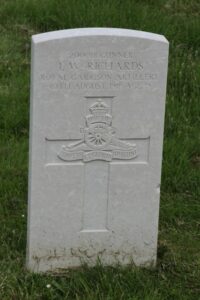
Pryce Richards, Gunner, 98053, Royal Garrison Artillery. Pryce was born in 1895, the son of John Richards and Ann Richards (nee Thomas), of Llety Gwyn Fach, Forden, near Welshpool. He worked for his father on the family farm prior to enlisting at Wrexham into the Royal Garrison Artillery on 24 January 1916 and was posted to the Depot at Fort Brockhurst, Gosport for training. Pryce embarked for France on 28 November 1916 with the 195th Siege Battery, Royal Garrison Artillery. The battery spent most the coming months in the Arras Sector and saw much service during the Battle of Arras, which opened in March 1917. Pryce was wounded on 3 November 1917, suffering shell fragments to his left buttock and was evacuated to hospital for treatment. He was then found to have contracted pulmonary tuberculosis and was sent back to England, before being discharged from the army as medically unfit on 17 April 1918. Pryce initially returned home to Forden, but his health continued to wane, so he was sent to Beechwood House Hospital at Newport, where he died of tuberculosis on 22 January 1920. The remains of the 23-year-old were returned home and he was buried in Ebenezer Congregational Chapelyard, Forden. He was accepted for commemoration by the CWGC on Saturday 29 October 2022 and will be commemorated in the United Kingdom Book of Remembrance at Maidenhead until the location of his grave is verified.
Herbert Gladstone Ridge, Sapper, 915, Royal Engineers. Herbert was born in 1886 in Chorlton, and was the son of Albert Ridge, who later resided at 5, Viney Street, Taunton, Somerset. The 1922 published Carmarthen County Roll of Honour lists Herbert as being from Llanybydder, but the 1911 Census shows him as residing at 36, Gilbert Road, Llanelli. He enlisted at Llanelli on 24 July 1915 into the Welsh Field Company, Royal Engineers, and on 8 October 1915 joined his unit at Gallipoli. Herbert served at Gallipoli with his unit until it was evacuated in December 1915, then saw service in Egypt, before becoming ill, and returning to Britain on 2 October 1916. Herbert was discharged from the army on 20 December 1916 as a result of tuberculosis, and died at his sister’s home at 5, Viney Street, Taunton on 18 March 1918, aged 31. Herbert is buried at St. Mary’s Cemetery, Taunton. Herbert was accepted for commemoration by the CWGC on Tuesday 17 January 2012 as a result of my research.
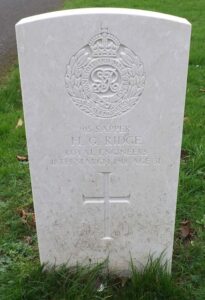
Llewelyn Owen Roberts, Private, 266516, Royal Welsh Fusiliers. Llewelyn was the son of Hugh and Mary Roberts, of 1, David Street, Penmaenmawr. He was a quarry worker at Penmaenmawr prior to enlisting at Bangor on 14 March 1916 into the 6th Battalion, Royal Welsh Fusiliers. He was stationed at Prestatyn when he became ill and was diagnosed as having contracted tuberculosis. He was discharged from the army as medically unfit on 2 May 1917 and died at home of phthisis pulmonalis on 27 February 1918, aged 22. He was buried in Penmaenmawr (Dwygyfylchi) Cemetery on 2 March 1918. His case was submitted to the CWGC on 5 December 2016 and he was accepted for commemoration by the CWGC on Wednesday 8 February 2017.
Roderick Roberts, Private, 27355, South Wales Borderers. Roderick was the son of John and Jane Roberts, of 1, Vale View, Machynlleth. He enlisted into the South Wales Borderers on 2 December 1915 and served overseas for much of the war. His health had broken down by the time he was demobilised on 20 February 1919 and he died of tuberculosis on 16 October 1919, aged 23. Roderick was buried at Machynlleth Nonconformist Cemetery. His case was recently forwarded to the CWGC as a result of my research, and he was accepted for commemoration by them on Thursday 27 August 2020.
Edward Rockingham, Private, 320155, 24th Battalion, Welsh Regiment. Edward was born at Norwood, Surrey. He became orphaned at an early age, and came to Abergwili, where he worked for Mrs. Rees, Penybont. He enlisted at Carmarthen into the Pembroke Yeomanry, Army Number 2237. The Pembroke Yeomanry moved to Egypt in 1916, where it merged with the Glamorgan Yeomanry to become the 24th Battalion, Welsh Regiment, part of 231 Brigade, 74th Yeomanry Division, and fought in Palestine as a dismounted infantry unit. Early in 1918 when the tide of war was turning in favour of the Germans, with big breakthroughs on the Somme and in Flanders, the 74th Division was sent back to France, landing during May, 1918. They were rushed to Flanders, where they helped stem the German advance, before moving south, pushing against the Hindenburg Line around the Épehy area. Edward was killed during heavy fighting at Gillemont Farm on 21 September 1918, during the Battle of Épehy. Edward has only recently been accepted for commemoration by the CWGC, after evidence of his omission was presented to them by myself. He will be commemorated on the Vis-en-Artois Memorial, France, after 91 years of being forgotten. Edward was accepted for commemoration by the CWGC on 20 July 2009.
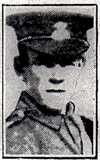
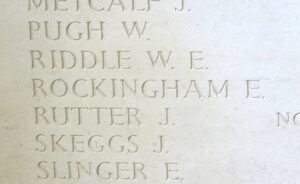
John Richard Rogers, Lance Corporal, 176106, Royal Engineers. John was born on 10 September 1883, the son of John James Rogers and Elizabeth Rogers (nee Ridout), of 3, Avenue Place, Brecon. He married Margaret Ann David in 1907 and the couple moved to 11, Cranbrook Street, Cardiff, where John had found work as a railway brakesman. John enlisted into the Royal Engineers soon after the outbreak of war. He died not serve overseas but remained in Britain for the duration of the war. He was discharged from the army as medically unfit on 4 November 1919 after having been diagnosed as suffering from tuberculosis and returned home to his wife and three children. He then found work as a railway goods guard, but his health continued to fail and John died of tuberculosis at 5, Alexandra Street, Cardiff on 9 March 1921, aged 37. He has today, Saturday 17 December 2022, been accepted for commemoration by the CWGC, who will commemorate him in the United Kingdom Book of Remembrance at Maidenhead, unless the location of his grave can be located.
Stephen George Rose, Driver, 19613, Royal Field Artillery. Stephen was the son of Stephen and Emily Rose, of 27, Railway Terrace, Hollybush, Monmouthshire. He worked as a collier prior to the war, and enlisted into the Royal Field Artillery at Tredegar on 7 September 1914. Stephen married Dyssie Ellen Roberts, of Hollybush, at Bedwellty on 21 January 1915. Stephen was initially posted to D Battery, 75th Brigade, RFA. He served with the battery until being transferred to B Battery, 61st Brigade, RFA on 15 May 1916. Stephen embarked for France with the Brigade on 1 September 1915 and served on the Western Front until 4 August 1918, by which time his health had begun to fail, and he was posted to the 60th Reserve Battery, RFA. He was discharged from the army on 27 January 1919, and returned home to 27, Railway Terrace, Hollybush. Stephen died of heart disease, aggravated by his service, at 9, Llwynbach Terrace, Hollybush on 13 August 1919, aged 24. He was buried in St. Sannan’s Churchyard, Bedwellty. Stephen was accepted for commemoration by the CWGC on Thursday 8 April 2021. He will be commemorated in the United Kingdom Book of Remembrance at Maidenhead until the location of his grave is verified.
Vincent George Ross, Stoker Petty Officer, 309189, Royal Navy. Vincent was born on 10 January 1880, the son of Jesse and Mary Jane Ross, of 115, Castle Road, St. John’s, Cardiff. He worked as a masons labourer prior to enlisting into the Royal Navy on 2 November 1905, and was posted to HMS Vivid II for training. Over the coming years Vincent served aboard a large number of ships, including HMS Revenge, HMS Triumph and HMS Caesar. He married Mary Bertram Montgomery at Devonport in 1907, but continued to serve in the Royal Navy over the coming years. Vincent survived the war but contracted tuberculosis during his time in the Navy and on 5 May 1920 he was discharged as medically unfit. He eventually died of tuberculosis at the Sanatorium at Bronllys, Breconshire on 17 March 1921, aged 41. He was accepted for commemoration by the CWGC on Thursday 3 August 2023, as a result of my work, and will for now be commemorated in the United Kingdom Book of Remembrance at Maidenhead, Berkshire, unless the location of his grave can be located.
John Charles Russell, Corporal, 16254, Army Pay Corps. John was born in 1890, the son of Charles Russell and Emily Russell (nee Plaistead), of Roath, Cardiff. The family had moved to 81, Glenroy Street, Cardiff by 1911 and John was working as a bookkeeper. John enlisted into the army on 5 February 1916 and with his training as a bookkeeper was posted to the Army Pay Corps. John served with the Army Pay Corps for the duration of the war, but just after the Armistice was found to have contracted tuberculosis and he was discharged as medically unfit on 2 April 1919. He returned home to Cardiff and died of tuberculosis at 65, Inverness Place on 21 December 1919, aged 30. His place of burial has yet to be identified. John was accepted for commemoration by the CWGC on Saturday 29 October 2022 and will be commemorated in the United Kingdom Book of Remembrance at Maidenhead, unless the location of his grave can be traced.
Thomas Sallis, Driver, T2/SR/01274, Army Service Corps. Thomas, known as Tom, was the son of John and Anne Sallis, of Eglwyswrw. He was working as a tailor at Penrhiwceiber prior to the war. Tom enlisted into the Army Service Corps on 6 October 1914 and served in France from 15 January 1915. Tom took ill during the summer of 1917 and was discharged from the army as medically unfit on 9 October 1917. He returned home to Eglwyswrw where he died of tuberculosis on 20 July 1919, aged 25 and was buried in Bethabara Chapelyard, Pontyglasier. Tom’s name has been added onto the new war memorial at Eglwyswrw. His case was recently forwarded to the CWGC as a result of my research, and he was accepted for commemoration by them on Thursday 27 August 2020.
Patrick Scanlon, Private, 851, Royal Munster Fusiliers. Patrick was born in Ireland in 1889, the son of John Scanlon and Mary Scanlon. The family had moved to 42, Picton Place, Canton, Cardiff by 1901, and Patrick’s father was working as a tramway labourer. Patrick left home to find work as a collier in the valleys as a young man and on 5 August 1907 married Elizabeth Ann Pugh at Pontypridd. The couple set up home at Hopkinstown, where their three children were born. Patrick enlisted at Pontypridd into the Royal Munster Fusiliers on 2 September 1914 and was posted to the 6th Battalion, Royal Munster Fusiliers. The battalion had formed at Tralee, moving to the Curragh to join 30 Brigade, 10th (Irish) Division, then in May 1915 moved to Basingstoke, in England. On 9 July 1915 the division sailed from Liverpool and arrived at Mudros at the end of July, before landing at Suvla Bay, Gallipoli on 7 August 1915 as part of the great Allied landings. The division saw heavy fighting at Gallipoli before being evacuated to Mudros on 2 October and from there moved to Salonika, to join the fight against the Austro-Bulgarian force which had invaded neighbouring Serbia. By now Patrick’s health had begun to suffer as he had contracted malaria and he was invalided home in December 1916. After a spell in hospital he was posted to the Depot at Cork, but was discharged from the army as medically unfit on 3 April 1917 and returned home to his wife and children, who by now had moved to 47, Oxford Street, Treforest. Patrick died of heart disease, brought upon by his malaria, at 47, Oxford Street on 20 August 1920, aged 31. He has today, Saturday 17 December 2022, been accepted for commemoration by the CWGC, who will commemorate him in the United Kingdom Book of Remembrance at Maidenhead, unless the location of his grave can be located.
Patrick Shea, Guardsman, 1783, Irish Guards. Patrick was born in Churchill, County Kerry in 1882, the son of Patrick and Jessie Shea. He had served with the Irish Guards for several years prior to joining the Swansea Police Force as PC121 in March 1908 and married Lillie Holmes in Swansea in 1913. He was recalled to the colours on 4 August 1914 and landed in France with the 2nd Battalion, Irish Guards on 13 August 1914, taking part in the Battle of Mons and the subsequent retreat to the Marne. He took part in the First Battle of Ypres and was wounded there on 29 October 1915 and was initially reported missing. He was found to have been shot in the side and was evacuated to hospital in Boulogne and after recovering from his wounds remained at Boulogne, where he was attached to No 2 Sanitary Section. In August 1916 he was posted back to his battalion, which was by then on the Somme attached to the Guards Division, but by October 1916 was back in hospital. Patrick survived the war but his health had taken a turn for the worse and after being diagnosed as having contracted tuberculosis he was sent to Bath War Hospital after the armistice. He was discharged from the army as medically unfit on 18 January 1919 and returned to Swansea, dying in the arms of his brother John at 107, Terrace Road, Swansea on 10 May 1919, aged 37. His case was forwarded to the CWGC as a result of my research and he was accepted for commemoration by them on Saturday, 16 February 2019. Patrick will be commemorated in the United Kingdom Book of Remembrance until the location of his grave is found.
Ernest William Sherwood, Seaman, Royal Navy. Ernest was born in 1898, the son of Wyndham Henry and Lelia French Sherwood, of 3, Talbot Street, Llanelli. He volunteered to serve with the Mercantile Marine, and gained an apprenticeship aboard the sailing barque Inveramsay. On 27 April 1917 Inveramsay was sailing from Glufport for Freeland with a cargo of pine when she was torpedoed and sunk by the German submarine U-62, with the loss of all her crew. Ernest was just 18 years old. He has today, 9 April 2014, been accepted for commemoration by the CWGC, who will be adding his name to the Tower Hill Memorial, London. His brother Arthur also fell. (Ernest’s case was put forward to the CWGC by the IFCP, not by myself, but has been added here due to his west Wales origins).
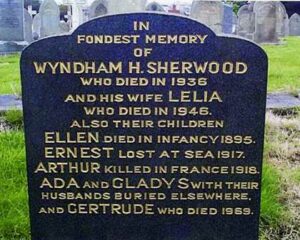
Daniel Thomas Smart, Corporal, 204810, Royal Welsh Fusiliers. Daniel was born in Penrhiwceiber in 1891, the son of Frederick and Martha Smart. The family later resided in 17, Philip Street, Barry Dock, where Daniel worked as a Pilot. He worked at Hull for a short time before the war, and whilst there met Eliza De Marion Dent and the couple married on 24 November 1913. He enlisted on 11 January 1915 into the Welsh Horse Yeomanry, a newly formed cavalry unit, with the service number 673. He served at home until being released for civilian service on 21 March 1916 and on 9 June 1917 was recalled to the colours, being posted as Corporal to the 17th Battalion, Royal Welsh Fusiliers. He served in France with the battalion and saw action with the 38th (Welsh) Division at Pilckem Ridge and Langemarck but took ill while the division was stationed near Armentieres in April 1918. He was hospitalised and was discharged as medically unfit on 28 July 1918, suffering from suppurative appendicitis. Daniel sadly succumbed to the disease at Barry Hospital on 20 December 1918 aged 27. He was accepted for commemoration by the CWGC on Friday 22 April 2016 and will be commemorated in the United Kingdom Book of Remembrance. Work continues to attempt to trace his grave.
Thomas George Smith, Sapper, 329070, Royal Engineers. Thomas was born in 1884, the son of Eli Smith and Jane Smith (nee Hampton), of 12, Wyndham Street, Canton, Cardiff. He married Beatrice Mary Knight on 14 October 1912, then the couple moved to Cheetham, Manchester. Thomas worked as a postal telegraph engineer at Cheetham prior to enlisting into the 6th Battalion, Manchester Regiment at Manchester on 11 December 1915. He was initially placed on the Army Reserve, but was mobilised on 23 August 1916, before being drafted to France. Thomas was then posted back to Britain 12 February 1918 and was transferred to the 5th Provisional Company, Royal Engineers, before being posted to Chatham on 16 August 1918. His health had begun to beak down by now, and Thomas, suffering from heart disease, was discharged from the army as medically unfit on 29 March 1919, returning home to his wife at 33, Eckford Street, Queen’s Road, Cheetham, Manchester. He died of heart disease at the Royal Infirmary at Chorlton, Lancashire on 22 February 1920, aged 36. His place of burial has yet to be identified. Thomas was accepted for commemoration by the CWGC on Saturday 29 October 2022 and will be commemorated in the United Kingdom Book of Remembrance at Maidenhead, unless the location of his grave can be traced.
John William Sommers, Ordinary Seaman, J44808, Royal Navy. John was born at Llanwrtyd Wells on 22 April 1900, the son of John and Harriett Sommers. By 1911 the family was living at Mill Lane, Black Pill, Swansea. John enlisted into the Royal Navy on 22 April 1918 and trained at HMS Victory before being posted aboard the battleship, HMS Prince of Wales. He became ill following the Armistice and was discharged from the Royal Navy as medically unfit on 8 February 1919 after being diagnosed as having contracted tuberculosis. John died at Cimla Memorial Hospital, near Neath, on 8 July 1919, aged 19. His case was forwarded to the CWGC as a result of my research and he was accepted for commemoration by them on Wednesday 20 January 2019. He was originally commemorated in the United Kingdom Book of Remembrance, but his grave has been discovered in Oystermouth Cemetery, Swansea, in grave K. 426. The CWGC are in the process of manufacturing a new headstone to mark his grave.
Norman Staniforth, Gunner, 71510, Royal Field Artillery. Norman was born at Stockton-on-Tees, the son of Charles and Ellen Staniforth. His mother was from Landore, Swansea. Norman enlisted into the Royal Field Artillery prior to the war and embarked for France with the BEF on 16 August 1914. He served for the duration of the war but his health suffered as a result and he returned home suffering from tuberculosis, which was deemed as attributable to his service. Norman died at the Wheatsheaf Inn, Cwm on 11 February 1921, aged 26. His case was recently forwarded to the CWGC as a result of my research, and he was accepted for commemoration by them on Thursday 27 August 2020.
Samuel Frank Starr, Corporal, 23426, South Wales Borderers. Samuel was born in Frome in 1884, the son of Samuel and Eliza Starr. By 1911 the family had moved to Wales and lived at 22 Glebe Street, Newport, Mon. Samuel worked as a dock labourer prior to enlisting at Newport on 7 April 1915 into the 12th Battalion, South Wales Borderers. The battalion was a Bantam Battalion, attached to 119 Brigade, 40th (Bantam) Division and he landed in France with the battalion on 1 June 1916. Samuel took ill soon after the division moved to the Somme sector and was invalided home to the War Hospital at Guildford on 22 November 1916 after being diagnosed as suffering from heart disease. Samuel was discharged from the army as medically unfit on 13 March 1917 and returned home. He died at 22, Globe Street, Newport of valvular cardiac disease on 19 February 1919, aged 35. His case was forwarded to the CWGC as a result of my research and he was accepted for commemoration by the CWGC on Friday 29 November 2019.
James William Tambs, Driver, 840997, Royal Field Artillery. James was born in Cardiff in 1889. He had served with the Territorials before emigrating early in the 20th century but returned to Cardiff and worked as a clerk for the Cardiff Railways. He enlisted at Cardiff into the Royal Field Artillery on 7 September 1914 and served in France with C Battery, 93rd Brigade, RFA until deserting in June 1915. James managed to return to England without being apprehended and married Daisy Wilkinson in the summer of 1915, before fraudulently re-enlisting into the Royal Field Artillery under the name of Charles James Morton. He returned to France with D Battery, 30th Brigade, Royal Field Artillery and was killed in action at Ypres on 22 August 1917, aged 28. James has no known grave and is commemorated on the Tyne Cot Memorial under his alias, Charles Joseph Morton. I discovered him while looking at Welsh railwaymen who were killed and have managed to compile enough evidence of his true identity to hopefully enable him to be properly commemorated under his real name. The case was sent to the CWGC in November 2018 and was verified before they amended his name on their debt of honour register.
William Charles Taylor, Private, 532518, Labour Corps. William was the son of Henry Albert Taylor and Emma Taylor, of 17 River Place, Twerton, Bath. He worked as a warehouseman prior to enlisting at Bath into the Somerset Light Infantry on 12 January 1916. He was mobilised on 10 April 1917 and posted to the Durham Light Infantry on 14 July 1917. On 9 March 1918 he was transferred to the 597th Home Service Employment Company, Labour Corps. He took ill soon afterwards and was hospitalised at Warley Military Hospital, where he was diagnosed as suffering from tuberculosis and was discharged from the army as medically unfit on 27 June 1918. He returned home and died at Winsley Sanatorium on 15 September 1918, aged 24. His case was forwarded to the CWGC as a result of my research and William was accepted for commemoration on Wednesday 18 December 2019. He was originally commemorated in the United Kingdom Book of Remembrance, but he was recently been found to have been buried in Twerton Cemetery, Bath, so the CWGC have recently erected a headstone to mark his grave.
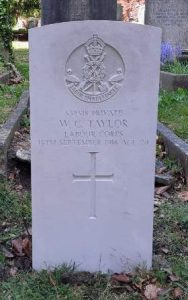
Dan Thomas, Private, 203471, Welsh Regiment. Dan was born at Eglwysfair-Y-Churig around 1884, the son of James and Hannah Thomas, Tailor and Draper, of Parky Llain Isha, Eglwysfair. He resided at Penybryn, Cross Hands prior to the war, with his wife Gwenllian Thomas, and he worked as a Stoker at the Cross Hands Colliery. Dan enlisted at Llanelli into the 11th Battalion, Welsh Regiment, which was attached to 87 Brigade, 22nd Division. The Division crossed to France in early September 1915, with all units being concentrated near Flesselles by 9 September, but after just two months in the trenches, were sent to Salonika, completing concentration there in November 1915. The Division then remained in the Salonika theatre, where it fought a wretched campaign against the Bulgarians. Dan was killed in action during the Second Battle of Doiran on 18 September 1918. He was 35 years old. Dan has been forgotten for almost 94 years, but after forwarding evidence about him to the CWGC in January 2012, Dan has today, Tuesday 22 March 2012, been accepted for commemoration by the CWGC, who will be adding his name to the Addenda Panel of the Doiran Memorial, Greece. The reason for Dan being forgotten is relatively simple, as on the same day another Private D. Thomas in the same Battalion was killed. This man was Private David Thomas, of Bangor, North Wales, and his number was 203441, very similar to Dan’s.
David Thomas, Seaman, Mercantile Marine. David was born on 29 May 1893, the son of John and Mary Ann Thomas, of Tegfan, Cross Inn, Synod Inn. He served with the Merchant Navy aboard the SS Treglisson, a 2,512 tonne cargo steamer. At the outbreak of war, Treglisson was detained by the Germans at Bremen and used as a prison ship between 1914 and 1919, her crew being interned in Ruhleben Prisoner of War camp in Germany for the duration. After the war, she was returned to her owners. David died of blood poisoning in the Lazarette, Ruhleben on 27 May 1917, aged 23, and is buried in Ruhleben, Germany. Thanks to Emyr Langley for the details and the photos of David. David appears to have been recently accepted for commemoration by the CWGC and will be commemorated on the Cologne Memorial, Germany.
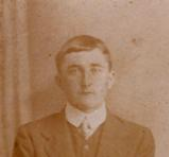

David George Thomas, Private, 44386, Welsh Regiment. David was the son of John and Sarah Ann Thomas, of 29, Plymouth Street, Swansea. He had served with the 3rd Volunteer Battalion, Welsh Regiment prior to the war, and on 8 December 1915 enlisted at Swansea into the army. On 9 February 1916 he was posted to the 21st Battalion, Welsh Regiment, before being posted to France on 9 July 1916, joining the 9th Battalion, Welsh Regiment, which was attached to 58 Brigade, 19th (Western) Division. David served on the Somme for a month, but was gassed and invalided home on 13 August 1916. He was discharged from the army as medically unfit on 8 September 1916, and died at 29, Plymouth Street, Swansea on 19 February 1917, aged 25. David was buried with full military honours at Swansea (Danygraig) Cemetery. He was accepted for commemoration by the CWGC on Thursday 12 February 2015 following evidence sent in by myself.
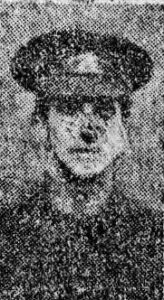
Evan Owen Thomas, Private, 24392, Welsh Regiment. Evan was the son of John and Betsy Thomas, of Brynteg, Adpar, Newcastle Emlyn. He resided at 38, North Street, Ferndale prior to the war and enlisted at Cardiff on 22 February 1915 into the 16th Battalion, Welsh Regiment, which was raised as the Cardiff City battalion. Evan trained with the battalion at Rhyl until being discharged as unfit on 12 July 1915, after being diagnosed with tuberculosis. He died at Newcastle Emlyn on 16 April 1920, aged 29, and is buried in Bryngwenith Chapelyard. His case was recently forwarded to the CWGC as a result of my research, and he was accepted for commemoration by them on Thursday 27 August 2020.
John Lewis Thomas, Private, 49230, South Wales Borderers. John was born at Dowlais in 1893, the son of Henry Thomas and Sarah Elizabeth Thomas (nee Lewis). His father had died prior to 1911 and the family went to live with Sarah’s sister at 2, Waun Villas, Blaenavon. John worked as a colliery pay clerk for the Blaenavon Iron and Steel Company prior to enlisting into the army and was posted to B Company, 3rd Battalion, South Wales Borderers. John appears to have only served on home service for the remainder of the war. He was discharged from the army as medically unfit on 19 January 1919 and returned home to Blaenavon, where he died of pulmonary tuberculosis on 6 February 1920, aged 27. His place of burial has yet to be identified. John was accepted for commemoration by the CWGC on Saturday 29 October 2022 and will be commemorated in the United Kingdom Book of Remembrance at Maidenhead, unless the location of his grave can be traced.
John Vaughan Thomas, Private, R/259428, Royal Army Service Corps. John was born in 1889, the son of Thomas Thomas and Margaret Thomas (nee Jenkins), of Llanybydder. He married Anne Morgans at Lampeter on 22 April 1911 and the couple set up home at Penrock, Llansadwrn, where John had gained work as a wool spinner. He enlisted into the Army Service Corps (Remounts) at Llandeilo on 6 June 1916 and was posted to the Remount Depot at Ormskirk, before embarking for France. John served with the Remounts for the remainder of the war, but by the time he was demobilised on 30 May 1919 he had contracted tuberculosis. He returned to his wife and three children at Llanwrda, and resumed his work in the woollen mill there. Unfortunately his health continued to deteriorate and John died of tuberculosis at Llansadwrn on 16 January 1921, aged 32. He was buried in Aberduar Welsh Baptist Chapelyard, near Llanybydder. John has today, Saturday 17 December 2022, been accepted for commemoration by the CWGC, who will commemorate him in the United Kingdom Book of Remembrance at Maidenhead, until the location of his grave is verified.
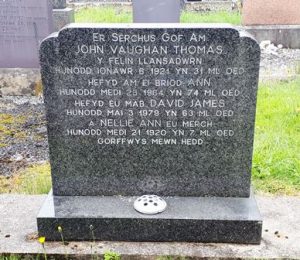
Sydney Thomas, Private, 5340, Welsh Regiment. Sydney was born at Llanelli in 1888, and was the husband of Hannah Jane Thomas, of 52, Wern Road, Llanelli. He was a tin-worker prior to enlisting at Llanelli into the 4th Battalion, Welsh Regiment on 9 November 1914. Sydney was posted to the 4th Welsh base at Hearson Camp, and by the summer of 1915 had began to feel the effects of active service. Sydney was discharged from the army due to a heart condition on 14 October 1916, and returned to Llanelli, where he died on 5 November 1918, aged 30, leaving his wife with three young children. Sydney’s case was put forward to the CWGC on 4 August 2013, and he was accepted for commemoration on Saturday 27 September 2014. He was temporarily commemorated in the United Kingdom Book of Remembrance at Maidenhead until the location of his grave was traced to Llanelli and District (Box) Cemetery, and a new CWGC Portland headstone has recently been erected.
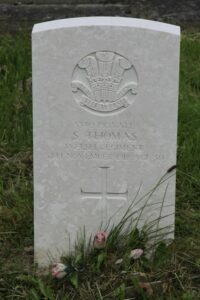
William Griffith Thomas, Private, 1463, Royal Army Medical Corps. William was the son of Rowland Henry Thomas and Emily Thomas, of 72, Norfolk Street, Swansea. He worked as a joiner prior to enlisting at Swansea into the Royal Army Medical Corps on 29 March 1912 and served with the Welsh Field Ambulance (Territorials). He attended every annual camp from then onwards and upon the outbreak of war joined the 3rd Welsh Field Ambulance. He was posted to Coddenham in Suffolk soon afterwards, but contracted pneumonia in November and was hospitalised for a while. His health worsened and William was diagnosed with tuberculosis and as a result was discharged from the army as medically unfit on 29 April 1915. He returned home and died of tuberculosis at 136, Carmarthen Road, Cwmbwrla on 2 March 1919, aged 28. He was buried in St. John’s Churchyard, Clydach. His case was forwarded to the CWGC as a result of my research and he was accepted for commemoration by them on Tuesday 4 February 2020.
Colin Stanley Vines, Gunner, 606080, Royal Field Artillery. Colin was the son of William and Elizabeth Selina Vines, of 5, Prior Street, Port Talbot. He worked as a butcher prior to enlisting at Port Talbot into the Glamorgan Battery, Royal Field Artillery on 5 May 1913. Following the outbreak of war Colin was posted to A Battery, 296th Brigade, Royal Field Artillery and served in France from 17 March 1917. He became ill in France and in May 1918 returned to Britain, joining the 4th Reserve Brigade. Colin was found to have contracted tuberculosis and was invalided from the army on 17 October 1918. He returned to Port Talbot but his health deteriorated and he died at the Memorial Hospital, Cimla on 15 February 1919, aged 24. His case was submitted to the CWGC as a result of my research, and he was accepted for commemoration by them on Friday 18 December 2020. He will be commemorated in the United Kingdom Book of Remembrance at Maidenhead, until the location of his grave can be verified.
Walter Hubert Wake, Private, 202407, Oxfordshire and Buckinghamshire Light Infantry. Walter was the son of Walter and Martha Wake, of Bedwellty. He enlisted into the Oxfordshire and Buckinghamshire Light Infantry on 25 November 1915 and married Dorothy Irene Hopton at Bedwellty in 1916 whilst home on leave. His brother Alan Thomas Wake was killed in France at around the same time. Walter served overseas with the 4th Battalion until falling ill and was discharged from the army on 26 April 1917. He returned home to Bedwellty where he died of tuberculosis on 15 December 1919, aged 29. HHis case was recently forwarded to the CWGC as a result of my research, and he was accepted for commemoration by them on Thursday 27 August 2020. He was originally commemorated in the United Kingdom Book of Remembrance at Maidenhead, but his grave has recently been found in Cefn Golau Cemetery, Tredegar and the CWGC are in the process of erecting a headstone for him.
Thomas Stephen Ward, Corporal, 80117, South Wales Borderers. Thomas was born in 1900, the son of William and Maria Ward, of 25, St Cenydd Terrace, Furnace Road, Beddau. He enlisted into the South Wales Borderers in 1918 and embarked for France in time to take part in the advance to victory. After the Armistice Thomas decided to stay in the army and was posted to India with the 1st Battalion, South Wales Borderers. Thomas died of heatstroke at Nowgong, India on 8 June 1920, aged 20. His case was recently been forwarded to the CWGC after I found him whilst looking through the pension records. Thomas was accepted for commemoration by the CWGC on Wednesday 14 October 2020 as a result of my research. He will be commemorated on the Delhi 1914-1918 Memorial, India
Charles Archibald Walters, Gunner, 371208, Royal Garrison Artillery. Charles was born in Neyland in 1896, the son of Arthur and Minnie Walters. At some time after 1911 the family moved to 70, Harbour Village, Goodwick, where Charles took up work on a farm. He enlisted at Stack Rock Fort into the Pembroke Battery, Royal Garrison Artillery on 16 January 1915. Two months later, he was posted to 114 Siege Battery, and served in France from 14 June 1916. After almost a year on the Western Front, Charles became ill, and returned to England. He then spent two more years on home service, before being discharged from the army due to ill health on 12 May 1919, and was awarded a war pension. He died on 4 April 1920, aged 24, and was buried at Llanwnda Cemetery, Goodwick on 8 April 1920. Charles was accepted for commemoration by the CWGC on Saturday 26 April 2014 and a new CWGC headstone has recently been installed.
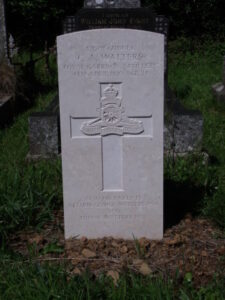
Morgan Isaac Walters, Private, 39924, Welsh Regiment. Morgan was born in 1883, the son of John and Ann Walters, of Treherbert. He married Sarah Lilian Morgan on 24 June 1908 and the couple lived at 8, Church Street, Treherbert. Morgan worked as a solicitor prior to enlisting into the Welsh Regiment on 22 November 1915. He was posted to France in 1916, joining the 2nd Battalion, Welsh Regiment, which was on the Somme attached to the 1st Division. Morgan served with the battalion on the Western Front until being badly wounded by shell fragments the following year and had a leg amputated. He was discharged from the army as medically unfit on 2 November 1917 and returned home, but died at Bute Street, Treherbert of complications resulting from his wounds on 21 February 1921, aged 36. Morgan was buried in Treorchy Cemetery. His case was recently forwarded to the CWGC as a result of my research, and he was accepted for commemoration by them on Friday 4 December 2020. He will be commemorated in the United Kingdom Book of Remembrance until the location of his grave is found.
Benjamin George Mornington Warren, Company Sergeant Major, 204005, Labour Corps. Benjamin was born in 1882, the son of James Benjamin Warren and Charlotte Warren (nee Woodrow), of Llandaff, Cardiff. His father was a merchant mariner from Liverpool and by 1891 the family had moved to St. Helen’s, where his father had taken over management of a boot shop. The family had moved back to Cardiff around the turn of the century and by 1911 were residing at 87, Frederick Street, Cardiff, where Benjamin worked as a French Polisher. He enlisted into the Welsh Regiment at Cardiff on 22 September 1914, but must have been medically downgraded as he was transferred to the 552nd Home Service Employment Company, Labour Corps. Benjamin served on home service throughout the duration of the war, rising to the rank of Company Sergeant Major, but his health had suffered as a result of his military service and he was discharged from the army on 22 February 1919 as medically unfit, after being diagnosed as suffering from neurasthenia. Benjamin returned home but his health continued to fail and he died of neurasthenia and heart failure at home at 87, Frederick Street on 16 February 1921, aged 37. He has today, Saturday 17 December 2022, been accepted for commemoration by the CWGC, who will commemorate him in the United Kingdom Book of Remembrance at Maidenhead, unless the location of his grave can be located.
Oliver Watkins, Private, 131326, Royal Engineers. Oliver was born in Nailsea, Somerset on 26 July 1870, the son of Robert and Ellen Watkins. By 1891 he had moved to Radyr where he worked as a stone mason and married Eleanor Powell at Radyr Parish Church on 12 January 1891. He enlisted at Cardiff into the Royal Engineers on 27 September 1915 and was posted to Chatham. He was posted to France with the 87th Field Company, Royal Engineers and was stationed at Vermelles when a shell burst near his billets on 10 May 1916. Obviously suffering from shock, on the following morning he developed dizziness and a headache and had uncontrollable diarrhoea and vomiting. He then began to suffer from a range of ailments and was diagnosed as suffering from myocardial disease. He was discharged from the army as medically unfit on 5 July 1916 and returned home, dying of pneumonia and cardiac failure at 3, Main Road, Morganstown, Radyr on 24 October 1917, aged 47. Oliver was buried in St. John The Baptist’s Old Churchyard, Radyr. His case was forwarded to the CWGC as a result of my research and he was accepted for commemoration by the CWGC on Friday 29 November 2019.
Percy Alyn Watts, Private, 2495, Cheshire Regiment. Percy was born at 5, Victoria Terrace, Mold in 1890, the son of James and Clara Watts. By 1911 he was living with his widowed mother at 14 Alderson Road, Liverpool and worked as a merchants clerk. He enlisted at Chester into the 5th Battalion, Cheshire Regiment on 21 October 1914. The battalion landed in France on 15 February 1915 and became attached to 14 Brigade, 5th Division. After just three months in the trenches, Percy became ill and was sent back to England where he was diagnosed as having contracted tuberculosis whilst at camp in Oswestry in November 1915. He was discharged from the army as medically unfit on 25 February 1916 and returned home. He died of tuberculosis at 14, Alderson Road, Wavertree on 30 October 1916, aged 26. His case was forwarded to the CWGC as a result of my research and he was accepted for commemoration by them on Tuesday 4 February 2020. His grave has recently been found in Mold Cemetery, Flintshire and the CWGC are currently manufacturing a new headstone to mark it.
Henry Thompson White, Lieutenant, Welsh Regiment. Henry was the son of John Davies White and Lucy Thompson White, Chemists, of Guildhall Square, Carmarthen, and was the brother-in-law of the Vicar of Llangunnor. He worked for the London and County Bank in London as a Bank Clerk prior to the war, and married Kathleen Marion Vereker in London on 16 August 1911. Henry enlisted into the 19th Battalion, Royal Fusiliers. On 6 April 1915 Henry was commissioned into the 3rd Battalion, Welsh Regiment, and was then posted to the 1st Battalion, Welsh Regiment, which was attached to 84 Brigade, 28th Division. On 28 September the 1st Welsh launched an attack at Loos against the Hohenzollern Redoubt. Henry was wounded during the fighting, and after a brief spell in hospital was posted to the 2nd Battalion, Welsh Regiment, which was attached to 3 Brigade, 1st Division. The division was by then on the Somme, and was caught up in heavy fighting around High Wood and Munster Alley. On 8 September 1916 the 2nd Welsh moved through Munster Alley towards High Wood, where 3 Brigade had been tasked with the capture of the wood. The Welsh lost heavily in the attack, with seven officers and 66 other ranks killed or missing. Henry was among the officers posted as missing during the assault on High Wood that day, and was 37 years old. For some strange reason, he is commemorated on the Jerusalem Memorial, Israel! As of today (28 August 2013) the CWGC have accepted my evidence that Henry was wrongly commemorated, and his name will be added to the new France 1914-1918 Memorial when it is built.
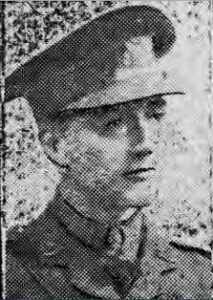
William John White, Private, 11922, South Wales Borderers. William was born at Athlone, Co. Roscommon, Ireland on 29 July 1875, the son of John White and Charlotte White (nee Terry). He left home as a young man and enlisted into the Royal Scots. William served with the regiment for several years, seeing service in South Africa during the Anglo-Boer War, before leaving the army and married Adelaide Louise Wilson upon his return to Britain in 1903. The couple set up home together at 75, Sutherland Street, Pimlico and William gained work as a milkman. He then moved with his wife and son to Sebastopol, Monmouthshire by 1913, where he gained work as a tailor. As a former soldier, William was an Army Reservist and he re-enlisted at Newport, Monmouthshire into the 3rd Battalion, South Wales Borderers on 12 August 1914. On 4 January 1915 he was drafted to France, joining the 1st Battalion, South Wales Borderers, which was in Flanders attached to 3 Brigade, 1st Division. William joined the battalion in billets at Bethune, where the men were allowed to bathe and received issues of clean clothes, before moving back into the Festubert trenches four days later. The battalion remained in the line here until 14 January when it relieved the Black Watch at Givenchy. At dawn on 25 January 1915 the Germans hit their lines with an intensive artillery bombardment, before launching an infantry assault, breaking through 100 yards of trench and reaching Givenchy village. Heavy fighting raged throughout the day as the Germans were driven back and the line regained. On 17 August 1915 William was posted back to Britain to the Depot at Brecon. He was then released for Munitions Work, first at the Abertillery Works, then moved to the Barry Haematite Works, before being posted to Barrow in Furness on 14 February 1916. William served at Barrow for two years before his health began to fail him and he was discharged from the army as medically unfit on 14 December 1918. By then his wife and son were residing at 120, Woodland Terrace, Sebastopol. William then found work as a coalminer, but his poor health forced him to find work as a stoker above ground. Sadly his health swiftly deteriorated and William was sent to Parc Howard Hospital at Llanelli, where he died of nephritis on 18 March 1920, aged 44. His place of burial has yet to be identified. William was accepted for commemoration by the CWGC on Saturday 29 October 2022 and will be commemorated in the United Kingdom Book of Remembrance at Maidenhead, unless the location of his grave can be traced.
Thomas Wilcock, Private, 3594, Royal Welsh Fusiliers. Thomas was born at Buckley, Flintshire, the son of James and Jane Wilcock. The family later lived at Fern Bank, Northop Hall, Flintshire. Thomas enlisted at Queensferry into the 3rd/5th Battalion, Royal Welsh Fusiliers on 7 December 1915 and on 26 June 1916 was posted to Egypt to join the 1st/5th Battalion, Royal Welsh Fusiliers, which was attached to the 53rd (Welsh) Division. He served in Egypt for less than three months before taking ill and on 5 September 1916 was sent back to England, going to Wandsworth Military Hospital. He was diagnosed as having contracted tuberculosis and was discharged from the army as medically unfit on 28 September 1916. He returned home to Fern Bank where he died of tuberculosis on 6 February 1917, aged 21. Thomas was buried in St. Matthew’s Churchyard, Buckley on 10 February 1917. His case was forwarded to the CWGC as a result of my research and he was accepted for commemoration by them on Tuesday 4 February 2020.
David Llewellyn Williams, Gunner, 258101, Royal Field Artillery. David was the son of David and Jane Williams, of 1, Weig Terrace, Fforestfach, Swansea. He enlisted at Cwmbwrla into the Royal Field Artillery on 31 August 1917 and was posted to No. 2 Depot, RFA before joining the 9th Reserve Battery at Boyton Camp, Wiltshire. David remained on home service until his health started to deteriorate and he was diagnosed as having contracted tuberculosis. He was discharged from the army as medically unfit on 5 October 1918. He returned to Swansea and died of tuberculosis at his home on 12 February 1919, aged 19. He was buried at St. Peter’s Churchyard, Cockett. His case was submitted to the CWGC as a result of my research, and he was accepted for commemoration by them on Friday 18 December 2020. He will be commemorated in the United Kingdom Book of Remembrance at Maidenhead, until the location of his grave can be verified.
Ernest Evan Williams, Private, 372305, Royal Army Medical Corps. Ernest was the son of Evan and Mary Ann Williams, of 49, South Park Street, Pembroke Dock. He worked as a Schoolmaster at Pembroke Dock prior to the war. Ernest enlisted at Cardiff on 25 October 1915 into the Royal Army Medical Corps, and was attached to the 3rd Western General Hospital at Cardiff. By 21 May 1917 Ernest had become too ill to work, and was struck off the strength of the RAMC, his papers showing that he had caught an infection during his service. Ernest was treated in a Sanatorium for the next year, sadly dying of pulmonary tuberculosis on 23 June 1918, at Newport Hospital, Gwent. Ernest was 26 years old, and is buried in Pembroke Dock (Llanion) Cemetery. Ernest was accepted for commemoration by the CWGC on Saturday 26 April 2014.
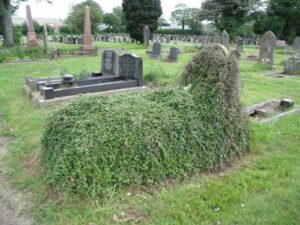
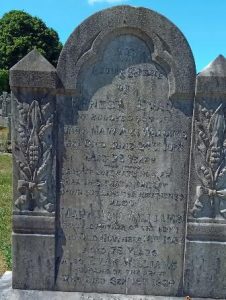
James Glynarth Williams, Private, 58434, South Wales Borderers. James was the son of James and Sarah Williams, of 3, Railway Street, Trelewis. He worked as a coalminer prior to enlisting into the 3rd Battalion, South Wales Borderers on 24 April 1918, and was posted to Hightown, near Liverpool, where the battalion was on the Mersey Garrison. James had not been in uniform long, before the rigours of military life took a toll on his health, and he was discharged as medically unfit on 28 June 1918 after being diagnosed as suffering from tuberculosis. An army medical board judged that his condition had been aggravated by active service, and he was granted a pension. James returned home to Trelewis after treatment in a sanatorium, and died of tuberculosis in his parents home on 14 January 1919, aged 23. His case was submitted to the CWGC as a result of my research, and he was accepted for commemoration by them on Tuesday 2 March 2021. He was originally commemorated in the United Kingdom Book of Remembrance at Maidenhead, but his grave has recently been found in St. Cattwg’s Churchyard, Gelligaer and a headstone has recently been erected by the CWGC (April 2023).
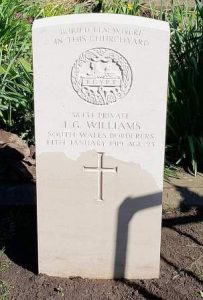
John Howard Williams, Cadet, 185314, Royal Air Force. John was born on 19 October 1900, the son of Albert John Williams and Gwendoline Alice Williams (nee Davies), of 19, Godfrey Road, Newport, Monmouthshire. John enlisted into the Royal Air Force on 24 September 1918, just before his eighteenth birthday, and was posted to the Cadet Distribution Depot, at Hampstead. John was already studying engineering when he enlisted, so continued his training with the Royal Air Force, staying in the service after the Armistice. Unfortunately he contracted pulmonary tuberculosis whilst serving with the colours and was invalided home, dying at Godfrey Road, Newport of consumption on 12 November 1919, aged 19. His place of burial has yet to be identified. John was accepted for commemoration by the CWGC on Saturday 29 October 2022 and will be commemorated in the United Kingdom Book of Remembrance at Maidenhead, unless the location of his grave can be traced.
Joshua Williams, Private, 633812, London Regiment. Joshua was born in November 1886, and worked as a Draper, residing at Ty Coch, White Square, Taliaris, Llandilo. Joshua enlisted on 18 November 1915 into the 15th Battalion, London Regiment, and on 5 July 1916, he embarked with the Battalion for France, where he transferred to the 20th Battalion, London Regiment, attached to 141 Brigade, 47th (London) Division. The Division fought on the Somme that year, through the Battles of Flers-Courcelette and Le Transloy, where they captured Eaucourt L’Abbe, and attacked the Butte de Warlencourt. Joshua took ill after these actions, and was admitted to the 2nd Australian General Hospital at Boulogne with influenza. On 2 November 1916 he returned to England, and spent the next few months at the 2nd General Eastern Hospital, Brighton. Joshua was discharged from the army on 26 June 1917, owing to ill health, and was transferred to Beechwood House Hospital, Newport, where he sadly died on 17 September 1917, suffering from Cardiac Failure. He is buried at Taliaris (Holy Trinity) Churchyard. Joshua was accepted for commemoration by the CWGC on 27 May 2011. Joshua’s case was put forward to the CWGC by Dave Hanson.
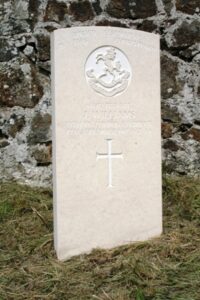
Percy Griffin Williams, Private, 813, Welsh Horse Yeomanry. Percy was born at Newent, Gloucester in 1886, the son of Reuben Williams and Frances Mary Williams (nee Drinkwater). He married Minnie Florence Howley at Oxenhall on 6 February 1907. Percy enlisted at Gloucester into the Welsh Horse Yeomanry on 23 January 1915 and served with their reserve battalion until being diagnosed as suffering from tuberculosis and being discharged as medically unfit on 26 March 1917. He returned home, but died of tuberculosis at Culver Street, Newent on 13 February 1919, aged 32. Percy was buried in Oxenhall Churchyard. His case was submitted to the CWGC on 5 January 2016 and Percy was accepted for commemoration by the CWGC on Wednesday 23 November 1916. Percy was originally commemorated in the United Kingdom Book of Remembrance, but the location of his grave has recently been discovered in St. Anne’s Churchyard, Oxenhall, Gloucester.
Thomas Williams, Able Seaman, J45092, Royal Navy. Thomas was born on 15 February 1893, the son of William Williams and Esther Williams (nee Hughes), of Hen Felin, Gurnos, Ystalyfera. He worked as a collier prior to enlisting into the Royal Navy on 13 October 1915 and was posted to HMS Vivid I for training. His first posting at sea was aboard the pre-dreadnaught battleship HMS St Vincent on 1 January 1916, and he served aboard her for over eight months before returning to shore at HMS Vivid I. Thomas continued to serve over the coming months but he contracted tuberculosis, and was discharged from the Navy as medically unfit in August 1918. He returned home to his parents at Ystalyfera, but his health continued to fail him and he died at home of tuberculosis on 5 October 1919, aged 26. Thomas was buried in Ystalyfera three days later. He was accepted for commemoration by the CWGC on Thursday 3 August 2023, as a result of my work, and will for now be commemorated in the United Kingdom Book of Remembrance at Maidenhead, Berkshire, unless the location of his grave can be verified.
Thomas Williams, Private, 21534, South Wales Borderers. Thomas was born in 1872, the son of Joseph Williams and Jane Williams (nee Prosser), of King Street, Gelligaer. The family was living at 12, Tennyson Terrace, Brithdir by 1911 and Thomas worked there as a coalminer. Thomas enlisted into the South Wales Borderers soon after the outbreak of war. Thomas does not appear to have served overseas, but remained in the army until being discharged as medically unfit on 14 December 1918 after having been diagnosed as suffering from tuberculosis. He returned home to 15, Wellington Terrace, Brithdir, but his health continued to fail and he died at 4, Salisbury Terrace, Brithdir of tuberculosis on 15 March 1920, aged 48. His place of burial has yet to be identified. Thomas was accepted for commemoration by the CWGC on Saturday 29 October 2022 and will be commemorated in the United Kingdom Book of Remembrance at Maidenhead, unless the location of his grave can be traced.
William Williams, Private, 15891, Royal Welsh Fusiliers. William was the son of William and Dorothy Williams, of 25 Hill Street, Cefn Mawr, Ruabon. He worked as a coal miner prior to enlisting at Wrexham into the North Wales Pals Battalion, Royal Welsh Fusiliers on 2 October 1914. The battalion later became the 13th (1st North Wales) Battalion, Royal Welsh Fusiliers and trained at Rhyl before moving to Winchester as part of 113 Brigade, 38th (Welsh) Division and landed in France on 1 December 1915. The division moved to the Fleurbaix sector for trench initiation before taking over a section of the front near Cuinchy which it held until marching south to the Somme in June 1916. On 7 July 1916 the division launched its first assault on Mametz Wood but was repulsed at heavy cost and re-organised before attacking again on 10 July, capturing the wood after two days of heavy fighting. William survived Mametz Wood but soon began falling ill and was diagnosed as suffering from tuberculosis of the spine and sent to Glasgow Royal Infirmary for treatment. He was discharged from the army as medically unfit on 8 October 1916 and returned home, dying at the Isolation Hospital, Groesynyd, Llangelynin, Conway on 22 December 1916, aged 23. His case was forwarded to the CWGC as a result of my research and he was accepted for commemoration by them on Tuesday 4 February 2020.
Albert Thomas Willmington, Private, 7411, Devonshire Regiment. Albert was born in Martock, Somerset on 20 January 1885, the son of William John Willmington and Alice Elizabeth Willmington. By 1901 the family had moved to Wales and in 1911 was living in 7 High Street, Brynsadler. Albert worked as an insurance agent prior to the war and enlisted at Pontypridd on 11 September 1914 into the Devonshire Regiment. He was posted to the 3rd Battalion, Devonshire Regiment and on 18 October 1914 was posted to their 2nd Battalion, which embarked for France as part of 23 Brigade, 8th Division on 4 November 1914 to join the BEF at Ypres, taking over a section of the line at Messines. The battalion suffered a hard first winter in the trenches near Neuve Chapelle and in December captured the Moated Grange. On 10 March the battalion suffered heavy casualties during an attack against the German trenches and in May 1915 took part in the Battle of Aubers Ridge. During December 1915 Albert came home on leave and on 20 December 1915 married Ellen Newman at Llantrisant. The battalion was still in the same sector when Albert re-joined it but over the winter his health began to break down in January 1916 when he began suffering giddy spells. He was diagnosed as suffering from valvular heart disease and on 16 March 1916 he was sent back to England and on 12 July 1916 was discharged from the army as medically unfit. He returned home and died at 7, High Street, Brynsadler on 7 October 1918, aged 32. His case was forwarded to the CWGC as a result of my research and he was accepted for commemoration by them on Tuesday 4 February 2020.